
Home » Travel Guides » Sudan » 15 Best Places to Visit in Sudan

15 Best Places to Visit in Sudan
There’s no question about it: Sudan is no safe place for travelers these days. A duo of civil wars, repeated armed conflicts with their near neighbors (and recent compatriots) to the south, and destabilisation in other countries of the Sahel and North Africa, are all things that have added to the problem.
Today the country ranks second on the fragile states index, and most all foreign offices recommend against all travel there. Perhaps one day that will all be over though. Perhaps one day we can once again look forward to donning the desert gear and delving into the shifting sands of ancient Kush and Nubia. Perhaps one day the burgeoning Red Sea dive scene in the west can reveal the sparkling corals and ocean treasures, and the Twirling Dervishes of Khartoum can showcase their cylindrical gyrations for all to see.
Lets explore the best places to visit in Sudan :

The onetime epicentre of the ancient Napata Kingdom is a truly otherworldly place to explore.
Set out between the ochre-hued rises of the Sudanese desert, just north of the capital, its comprised of over 200 individual pyramid structures, along with a whole serious of fascinating ruins of another type.
This bears all the hallmarks of a grand architectural undertaking in the same ilk as the Nubian cities of old, and today the whole area has been accredited by UNESCO, and archaeological findings have confirmed the presence of an advanced civilisation of iron smelters and traders with mercantile links all the way to China and India!

Sand-blown Suakin stands tall and firm against the gusts of the Red Sea.
An iconic and historic place that still touts its medieval past with pride, it was once one of the major staging points for Muslim pilgrims making the hop across to Arabian Mecca from North Africa.
Consequently, there are gilded mosques and interesting religious structures carved from coral stone, all of which mingle with the occasional Ottoman relic – Suakin later succumbed to the Turks, but fell into swift decline as European traders opened up routes around the Cape of Good Hope.
3. Khartoum

Khartoum is perhaps best known as the mythical location where the two great strands of the River Nile combine before heading northwards into the ancient lands of Nubia and Egypt.
The city straddles the banks of this famous water way, and even pokes out into the famous confluence at the headland known as al-Mogran.
In the heart of the town, strips like Nile Street (which unsurprisingly run alongside the Blue Nile) are packed with pretty buildings of arabesque design.
This is also where you’ll see the grandiose Presidential Palace, protected religiously by zealous guards.
Nearby is the hustle and bustle of Souq Arabi – the more frenetic and mercantile hub of the capital.

Another great ancient relic left on the meanders of the Nile River from the civilisations of old, Kerma promises to be an experience like no other in the country.
At its center rises the soaring and mighty Western Deffufa – one of the largest and oldest adobe worshipping houses on the planet! And once you’re done getting over the sheer awesomeness of that centrepiece, you can move to tour the seemingly endless array of ruins that surround it (one of the largest in all of North African, in fact). These go from burial complexes to the unearthed statues of old Nubian deities, all of which boast a history going back more than 5,000 years!
5. Dinder National Park
The Dinder National Park is a triangle cut-out of protected land that buts right up to the Ethiopian border in the south-east of the country.
Made up of sprawling arid grass plains that glow yellow and come sun-baked under the heat of the equatorial sun, it occupies a unique habitat right where the great highlands of Ethiopia drop down to the northern African flats.
That means visitors can see the likes of lions prowling, their beady eyes focused on the bushbucks and springing antelope.
And then there are the curious long-legged North African ostriches, which are a common and eye-opening sight.
6. Sanganeb National Park

The first and only oceanic national park in all of Sudan, the Sanganeb National Park is made up of shallow reef habitats that showcase the sheer biodiversity of the Red Sea in all its glory.
The protected area is adjoined directly to the jetties and harbors of Port Sudan, making it a very accessible place to visit.
Divers can go underwater and case out layered coral gardens, witness multi-coloured tropical fish, and understand why the spot was added to the UNESCO list back in the early 1990s (along with the greater Dungonab Bay). There’s also an old lighthouse where snorkelers can moor up and spend some days enjoying the wonder!
7. Port Sudan

Situated more than 20 hours by rattling train through the dusty deserts of upper Sudan from the capital, the country’s only large port is home to nearly 500,000 people.
It crashes down to the sparkling waters of the Red Sea in a medley of creaking cranes and endless depot complexes, all ticking over to the lurch of massive tankers prepping for the Suez Canal and the chatter of down-to-earth dock workers from all over the globe.
For tourists, it’s the diving that really takes the biscuit though – it’s undeveloped, unchartered and offers a cheap way to see the coral-clad depths of this crystal-clear sea.
8. Omdurman

The largest city in Sudan is actually now more or less contiguous with the capital at Khartoum.
It can be found facing its near brother on the far side of the White Nile, rising up from the banks at the legendary confluence at al-Mogran.
However, where Khartoum comes crowned with old palaces and blue-domed mosques, Omdurman is peppered with throbbing souqs and bazaars.
The most impressive of these is surely the eponymous Souq Omdurman, which is said to be the single largest market in all of Africa! The house of the old Khalifa is also located here, and makes a perfect stop for those interested in unravelling tales of Sudan’s colonial relations with the United Kingdom.
Oh, and be sure not to miss the shows of Twirling Dervishes that erupt here each Friday!
9. North Khartoum (Bahri)

Technically a standalone city from its namesake across the bends of the Blue Nice, the area of North Khartoum, also known locally as just Bahri, claims the title of the third-largest city in the country.
For visitors, there’s not that much in the way of sights and attractions, mainly on account of Bahri’s clear industrial and mechanical character.
However, you’ll see sprawling docks on the river, and endless depots bursting with cotton and kiln-cooked red bricks, all waiting for transportation north.
There’s also the striking ruins of the Al-Shifa plant, which was destroyed by a cruise missile during the troubles of the late 90s!
10. Arkawit

Perched over 1,000 meters above the crashing waters of the Red Sea, the resort town of Arkawit is the perfect escape for travelers finding it hard to handle the soaring equatorial temperatures of the Sudanese coast.
With the soothing breezes of the highlands at hand, visitors can take some time to kick back and relax in rustic guesthouses, enjoying the green-hued hills and rocky landscapes that abound around the area.
Walking is prime here too, with treks out to case the acacia-spotted ridges of Jebel Danaieb often done in the company of Sudan’s native monkeys!
Tawkar sits just down the ridges of the mountains from Arkawit, nestled between the rising massifs and the rollers of the Red Sea.
It’s a pretty place; a town of sleepy vibes and only 40,000 people.
Surrounded by cotton plantations made possible by irrigation along the edge of the Baraka River, it’s long been an important growing community.
Today though, there’s the Tokar Reserve to draw visitors, where the dusty wildernesses of this equatorial nation glow under the sun.
And there are a couple of diving operators (although no one knows how qualified any of them really area!) thrown in for good measure!
12. Jebel Marra
Rising in sinewy ridges atop the dusty plains of Darfur in the western reaches of Sudan, the Jebel Marra are perhaps the original African badlands.
They are carved and chipped massifs of ancient volcanic stone that have been forged from eruption after eruption over the millennia.
The most recent additions to the landscape are a colossal water-filled caldera known as the Deriba Crater, which is thought to have appeared following the pyroclastic flows of an explosion in 1,500 BC (that’s like yesterday to a volcanologist!). Jebel Marra itself is the highest peak in the country, clocking up more than 3,088 meters, and boasting beautiful waterfalls and canyons around its base.
13. Kassala

Don’t let the sweeping flatlands of farming land and irrigated fields of green fool you as you make your way to far-flung Kassala in the south-eastern reaches of Sudan, close to the border with Eritrea.
The wild throws of Mother Nature are still very much in command in these landscapes, and you only need to look upwards towards the horizon to see why! That’s where the bulbous peaks and troughs of the Taka Mountains loom, surrounded by sandy canyons and carved gorges of desert stone.
From the top of these you can see into Eritrea, while around the bottom you can settle for a traditional Sudanese coffee with the locals!

Mind-blowing Naqa sits in the shadow of the Jabal Naqa, some 170 kilometers from the capital at Khartoum.
A place of ancient treasures, the town has been reduced to a conglomeration of ruined peristyles and sun-cracked stone by the centuries.
But the magic is still very much alive, thanks largely to the trio of temples that form the centrepiece here.
These start with the haunting Temple of Amun, which bursts with old steles of the Egyptian deity Amun-Ra.
Then there’s Apedemak’s worship house, adorned with the figures of the ancient kings of Kush.
Finally, there’s the Roman Kiosk, displaying a fusion of Mediterranean, Hellenistic, Arabic and North African styles.
15. Wadi Halfa

One of the northernmost towns in the nation, the low-rise sprawl of Wadi Halfa sits between two ridges of desert rock and the waters of Lake Nubia.
While today it bustles with the coming and going of traders from Egypt, its main draw lies in its onetime inhabitants from the Middle Kingdom period.
And while Wadi Halfa itself might not be of mega importance in the search for Nubian treasures, the occurrence of Lake Nasser in the 1970s meant that archaeologists came here to focus their efforts in recovering the relics that had been submerged up and down the valley.
15 Best Places to Visit in Sudan:
- Dinder National Park
- Sanganeb National Park
- North Khartoum (Bahri)
- Jebel Marra

Destinations
14 Fascinating Places to Visit in Sudan
The situation in Sudan has unfortunately deteriorated since I was there, and as of April 2023 there is active armed conflict between factions of the military in Khartoum and elsewhere. I sincerely hope the country finds peace again soon, but in the meantime travelers should stay away.
There seem to be two types of people when it comes to travel in Sudan. Those who’ve never been will raise their eyebrows and ask about safety. But the few who’ve been will say Sudan is one of the nicest and safest countries they’ve ever had the pleasure of visiting.
As someone who spent several weeks in Sudan in early 2020 (in fact, I rode my bicycle solo through much of the country), I am firmly in the latter camp. Though Sudan as a country faces some deep economic and political challenges, the mood most travelers will encounter is peaceful and friendly.

Most travelers come to Sudan for the ancient Nubian archaeological sites, less developed than Egypt’s but also more relaxed and atmospheric. There is also plenty of interest in the colorful culture of this transition zone between Arabic northern Africa and the Sub-Saharan rest of the continent. And for mindful travelers with the opportunity and inclination to dig deeper, some very interesting conversations with friendly locals and expats await.
Sudan is a huge country but has only the faintest glimmer of tourism infrastructure, which is part of its charm as well as its challenge. Still, there’s no shortage of things to do and places to visit in Sudan. In this post I’ll highlight the most popular tourist attractions in Sudan, as well as a few of the low-key secrets, to help you plan your trip.

Sudan Travel Tips
Safety : Not all of Sudan is accessible to visitors. Areas like Darfur are currently off-limits due to continuing tribal conflict. Be sure to check government travel advice before planning a trip. The rest of the country is quite safe by any standards.
Costs : Sudan can be quite cheap to travel in if you’re backpacking. You can get by for just a few dollars a day. Guided tours can cost much more.
Money : ATMs and credit cards can’t be used by foreigners in Sudan (and aren’t reliable anyway). Bring cash (US dollars) and change it to Sudanese pounds in small amounts as you go. Seek out the much better black market rate by discretely asking at your hotel. Don’t change too much at once; rates fluctuate a lot and it can be difficult to change back if you end up with too much.
Language : Arabic is the official language of Sudan, and many regional languages are also spoken. Don’t expect more than a few words of English, but you can still get by with hand gestures and a smile.
Dress : Sudan is a very conservative Muslim country. Both men and women should cover shoulders and knees out of respect for the local culture. Women may want to be even more conservative by dressing in loose pants or skirt, a long-sleeve shirt, and potentially a headscarf in some circumstances. For more detail, see What Should Travelers Wear in Sudan?
Female travelers : Considering how conservative the culture is for local women, Sudanese are surprisingly welcoming and respectful toward foreign women. Harassment is uncommon, though culturally uninformed misunderstandings about the desires of western women can and do happen. Just firmly say no thanks.
Guided or independent : Many travelers visit Sudan on organized tours which certainly does make for a more relaxing trip. But it’s absolutely possible to travel Sudan independently as a backpacker or overlander, and many find it highly rewarding due to the welcoming culture.
Food : Not the highlight of a trip to Sudan. Ful (beans) is a staple, as is falafel. Limited selection of fresh fruit and vegetables is usually not hard to find. Tea is available and offered everywhere.

Transportation : Variable but decent for the region. Main roads are generally well paved. Buses are fairly orderly but usually not on a strict schedule. Traffic can be chaotic so think twice before renting a vehicle to drive yourself. Hitchhiking is common.
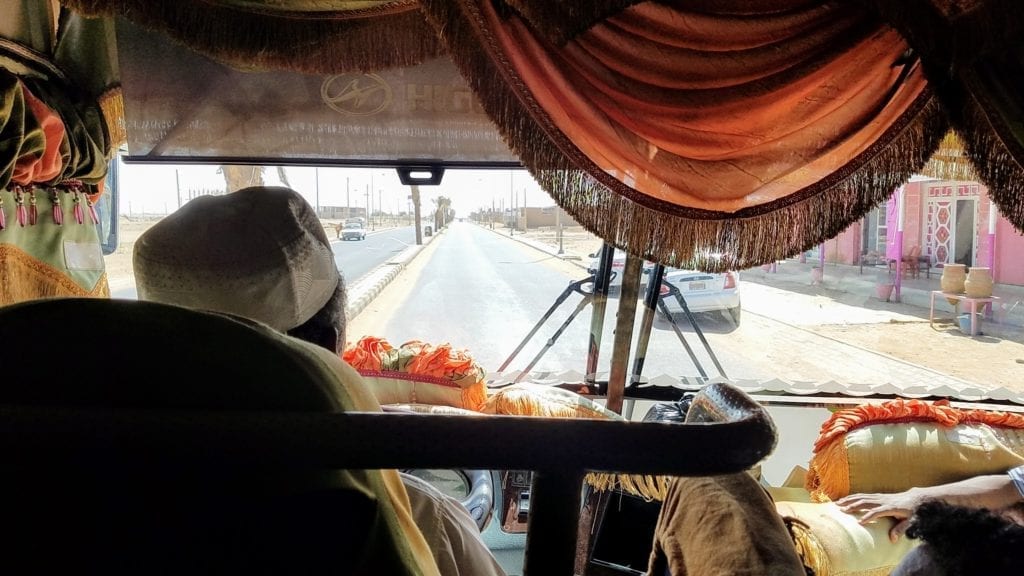
Weather : Generally hot, mostly dry in the desert north, with a rainy season further south from June – October.
Guidebook : There isn’t much to choose from, but the Bradt Sudan Travel Guide from 2012 is helpful for understanding the main attractions and learning the country’s history.
Now that you have a general sense for travel in Sudan, let’s get to the fun part: the most popular things to do in Sudan.

Sudan Within A Longer Trip
Some people visit Sudan as a stand-alone destination, and this makes perfect sense if you have less time. But for travelers on a more leisurely schedule, a great option is to combine Sudan with a visit to its northern neighbor Egypt.
The border between Egypt and Sudan is a relatively recent division, and much of the region’s deep history spans vast areas of both countries. Much of the landscape is similar – sandy desert bisected by the green Nile – and the language of Arabic is another common factor.
Logistically speaking, there’s only one highway serving the far north of Sudan – one of the country’s nicest areas in my opinion – and following it overland to or from Egypt flows a bit better than an out-and-back journey. The ferry crossing of Lake Nasser is scenic and interesting, and border crossings in Africa tend to be exciting affairs in any case.
It’s also possible, though less common, to continue south through Sudan to Ethiopia overland. The transition from desert to savanna to mountains must be experienced gradually to be fully appreciated.
For those who seek out the least-visited of rarely visited countries, Eritrea is right next door to Sudan and has even fewer visitors and more red tape. Travel in Eritrea is difficult because of the many restrictions on foreigners, and crossing the border overland from Sudan may well be impossible. However, those who’ve been report that it’s a fascinating country to visit.
Now that we’ve covered some travel tips and ideas for structuring your trip, let’s get into all the things to do and places to visit in Sudan.
Khartoum and Omdurman
The capital city of Khartoum feels almost like its own country. In this relatively progressive place you’ll find more women on the streets, some even without headscarves, and foreigners won’t usually get much of a second look. The city is cramped and bustling in some places and surprisingly modern in others, with an overall friendly and polite vibe.
The most highly recommend thing to do in Khartoum is technically in Omdurman, the older and grittier city right next door. Every Friday before sunset sufi mystics dance and chant in a highly charged ecstatic atmosphere at the Hamed-al Nil tomb.
In Khartoum proper, the National Museum and the confluence of the Niles are both worth a visit and relatively nearby each other. For more ideas, see this more detailed guide to things to do in Khartoum .

Pyramids at Meroë
Sudan technically has more pyramids than Egypt, though they’re smaller and often less well preserved. If you’re going to see one pyramid site in Sudan, make it the pyramids of Meroë.
Usually visited as a day trip from Khartoum or en route from Atbara, this site is the best preserved and also the most popular pyramid site in Sudan (meaning you might have to share with a handful of other tourists).

The pyramids here are in varying stages of disrepair and reconstruction, revealing a complex history of both building and excavating. While chatting with one of the site’s archaeologists I was surprised to learn that a fair amount of their effort goes into simply holding back the desert sand that threatens to sandblast the remaining structures, destroying them faster than they can be preserved.
The pyramids at Meroë can be reached easily by public transit from either Khartoum or Atbara. Just ask to be let off at Bajrawia village. Coming back is trickier, and is usually done by hitchhiking. It’s possible to camp at the pyramids if you’re prepared with your own gear.
Note that Meroë is the ancient city (you can still wander around the ruins, which are near the pyramids), and NOT the same as Merowe, an area near Karima.
Naqa and Musawwarat
These two Meroitic archaeological gems are a bit harder to get to than most of Sudan’s other tourist attractions, requiring some kind of private transportation. They lie 26 km (Naqa) or 30 km (Musawwarat) east of the highway from Khartoum to Atbara on sand and dirt track, sharing the same road for the first 15 km after leaving the highway.
Their locations can be found on the iOverlander app, but it’s probably best to go with an experienced guide/driver who can navigate the faint and sandy desert tracks.

If you can manage to get there, the temples at these sites are among the nicest in Sudan. Naqa is home to the temples of Amun and Apedemak (the latter notably depicting the queen with the same size and power as the king), as well as the small but surprisingly intricate Roman Kiosk.

At Musawwarat Es-Sufra, which dates from the 3rd century BC, you can wander the extensive labyrinthine Great Enclosure and visit the well-preserved Lion Temple. The old reservoir is usually dry these days, but standing there you can almost imagine how it would have looked and felt when the now-barren desert was teeming with life centered around this ancient temple complex.

Atbara has a bit of a gritty feel compared to the gentler towns further west and north. There’s not too much to do in this industrial and railroad town, besides the usual chatting and wandering, but many travelers will pass through on their way along the Nile toward the Meroë Pyramids and Khartoum.
The “new bus station” in the southeast corner of town (still north of the river) is surprisingly nice and orderly, with buses leaving every hour or so for Khartoum throughout the morning.
Karima: Pyramids, Jebel Barkal, Nuri
Across a long empty stretch of desert from Atbara is the town of Karima. The town is more relaxed than Atbara, though it can feel a bit less friendly than the smaller towns further down the Nile due to the area’s relative popularity with tourists.
The area around Karima is home to three of Sudan’s tourist attractions.
Jebel Barkal and Temple of Mut
Jebel Barkal is a small mountain popular for its great views and for sunset climbs (bring a light for the way down). At its base there is a cemetery and ancient ruins of the Temple of Mut.

Karima Pyramids
Free and literally right beside the road, these are certainly worth a visit especially if you haven’t yet been to the Meroe Pyramids. They’re quite well preserved (please don’t climb them in order to keep them that way) and clustered in a small easy-to-reach area.

Nuri Pyramids
On the east side of the Nile and a bit of a drive outside of town, these pyramids are quite deteriorated but said to be atmospheric. Personally I skipped them since I had already seen the nearby Karima pyramids and was headed to Meroë next, but for pyramid connoisseurs they are easy enough to get to and worth a visit.
Dongola was among my favorite towns in Sudan for its relaxed and friendly vibe. The refreshing breeze coming off the Nile probably didn’t hurt either. Wandering the streets and markets there felt pleasant and welcoming in a way I’ve rarely found anywhere on the African continent, making the simple errand of shopping for food an attraction in itself.
Otherwise, there isn’t too much else to do in Dongola besides relax and recover from a few days in the desert.
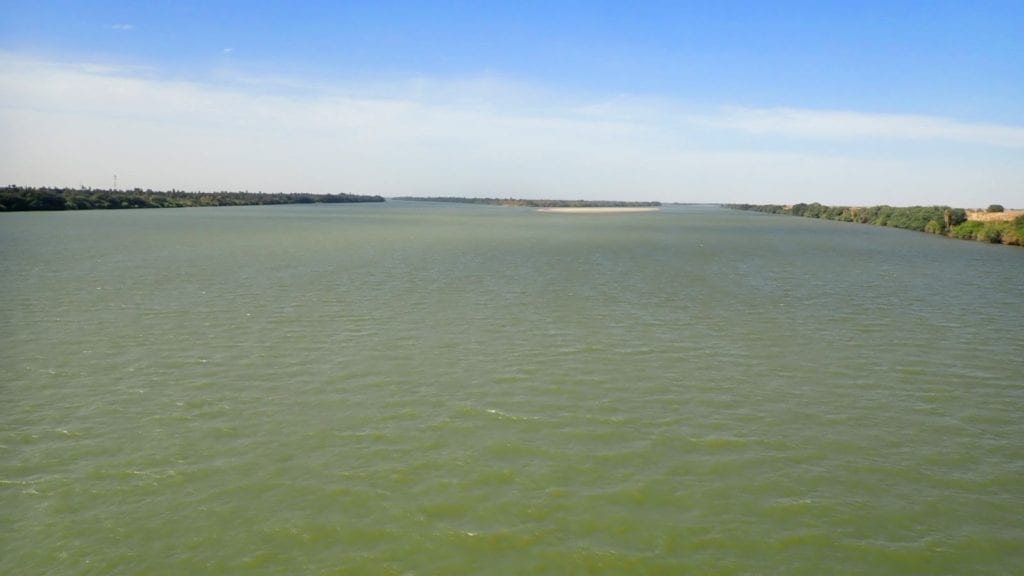
Old Dongola
Old Dongola, not to be confused with the present-day town of Dongola, lies about 50 miles upstream (south) and is an archaeological site. Notable for its more recent history – relatively speaking compared to some of Sudan’s ancient sites – it contains the ruins of a number of Christian churches from the 7th – 14th centuries AD.
The Throne Hall, Church of the Granite Columns, and Muslim cemetery are some of the most prominent ruins at Old Dongola.
The temple of Soleb is a relatively well-preserved Egyptian temple built in the 14th century BC. It lies on the west bank of the Nile across from the village of Wawa, about 3/4 of the way from Dongola to Abri.
Most travelers will need to hire a small boat to take them across the Nile, which can supposedly be done at the small guesthouse in Wawa (check the iOverlander or Maps.me app for location). This may take a bit of time though, as you’ll need to track down the owner first. There’s also an informal homestay on the Soleb side for those wishing to spend the night near the temple, but you should bring your own food.

Kerma is a town on the east side of the Nile just north of Dongola. Its main attractions are two “deffufa” (burial mounds) and a small museum. There are one or two small guesthouses in town; check Maps.me and iOverlander to find them.
Abri is a pleasant small town on the banks of the Nile in northern Sudan. Few travelers make it this far north unless continuing to Egypt, and the town feels relaxed and gentle. The best thing to do in Abri is sit by the Nile and rest up before or after a few days of desert travel.
The Nubian Guesthouse is where most travelers to Abri stay. The owner speaks good English, and there’s hot water and wifi. Rooms are available for moderate prices and camping is allowed in the courtyard for a few dollars.

There’s not much reason to visit the far-north border town of Wadi Halfa unless you’re crossing between Egypt and Sudan. Still, it’s an interesting transit town where you can watch the ferries come in from Aswan and Abu Simbel, and out on the highway you’ll see a trickle of large trucks on their way to and from Egypt via Lake Nasser.
If you just arrived in Sudan from Egypt, head downtown for plenty of cheap hostels and some places to buy a local SIM card.
Kassala is a market town in the east of Sudan, near the border with Eritrea. It’s not as commonly visited as the towns and archaeological sites along the Nile, but if you have the time and enjoy traveling off the beaten path it’s worth the 7 hour bus journey from Khartoum.
Kassala is known for its ethnic blend as tribes from near and far come to trade at the market, and for its dramatic location at the base of the distinctive Taka Mountains.
Port Sudan is the place to go if you want to see the Red Sea from Sudan. It’s Sudan’s second-largest city (after Khartoum) and only port city, connected to Khartoum by both weekly train and busy paved road.
Among tourists it’s best known for its small but interesting scuba diving scene, though I’ve heard that only those with experience should dive here as instruction and safety standards can be questionable.
Dinder National Park
On the way south to the Ethiopian border, Dinder National Park offers a completely different environment from the sandy desert of the north. Best visited during the dry season (November to May), it draws visitors looking to spot wildlife and relax in the peaceful environment. To explore the park fully you’ll want a 4wd vehicle and ideally a guide and driver.
Final Thoughts
As you can see, Sudan is home to a wealth of historic sites and interesting experiences. For travelers who enjoy getting off the tourist trail and exploring on their own, Sudan will be an adventure to remember and learn from for many years to come.
More Africa Travel Resources
If you’re curious about things to do in Sudan, you might also be interested in these:
- 12 Essentials From My Africa Packing List
- How to Travel Mindfully in Challenging Places
- Must-Know Cultural Tips for Visitors to Uganda
- Where to go Hiking in West Africa
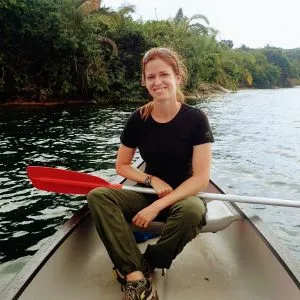
About the Author
Hi there, I’m Alissa, founder of Exploring Wild. I’ve had the pleasure of traveling independently and solo on six continents, including some unusual destinations like Liberia and Sudan, and it has forever changed the way I see the world and myself. Learn more about me here .

Travel resources in your inbox?
There’s more where this came from! If you’re into adventurous, thoughtful, off-the-beaten-track travel, sign up here for occasional emails with my best tips and inspiration.

Share the Adventure
If you found this article helpful, please consider sharing so more people can benefit from it:
Pin For Later

Leave a Comment Cancel reply
New in travel.

How to Meet Locals While Traveling (In Any Country)

Taking the Ferry Between Ayamonte, Spain and Vila Real de Santo António, Portugal
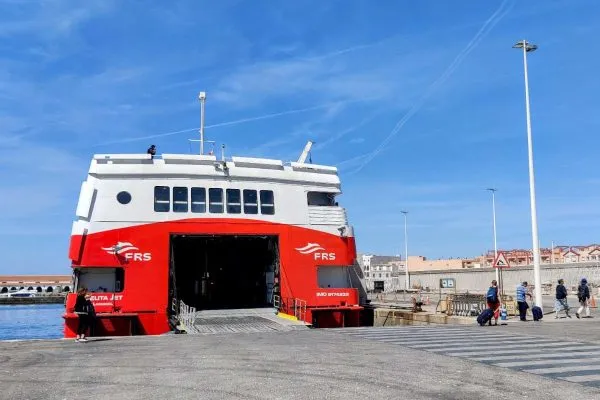
How to Take the Ferry Between Tarifa, Spain and Tangier, Morocco

Should You Travel to Morocco During Ramadan?
See all travel.
Follow Exploring Wild on socials:
Bikepacking
Backpacking & Hiking
Adventure Travel
Donate to Tip Jar
Shop Adventure Kits
Bikepacker's Companion eBook
Adventure in Your Inbox?
Resources and inspiration to support your wildest dreams:
Recent Posts
About Exploring Wild
Privacy Policy
Trust & Transparency Policy
This site participates in affiliate programs, including Amazon Associates.
Copyright 2024 Exploring Wild, All Rights Reserved
Privacy Overview
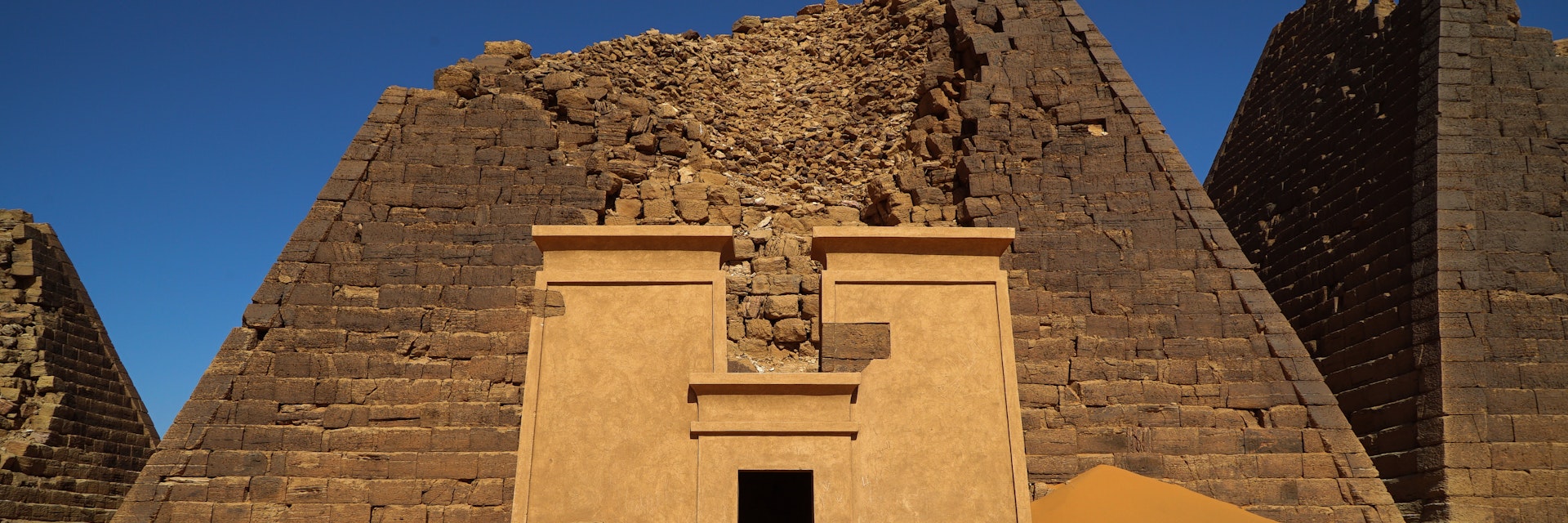
Wake at the break of day under the golden pyramids of godlike kings of old, traverse a searing desert to the place where two Niles become one, and watch a million ruby-red fish swarm through gardens of coral. For the few travelers who venture here, the sights found amongst Sudan's sweeping hills of sand come as a fantastic surprise.
Attractions
Must-see attractions.
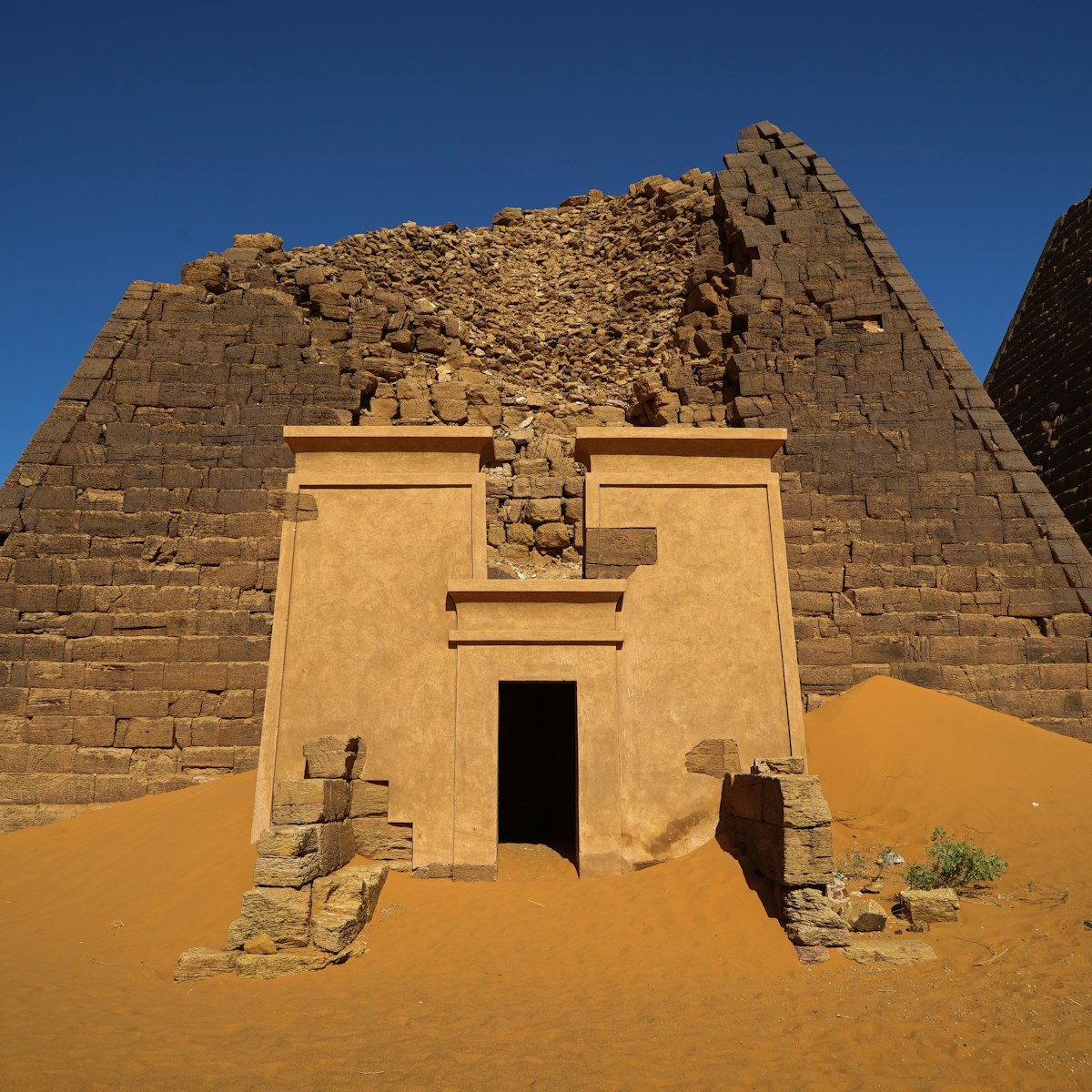
Meroe Pyramids
Seemingly lost under the folds of giant apricot-coloured dunes, this ancient royal cemetery, with its clusters of narrow pyramids blanketing the sand…
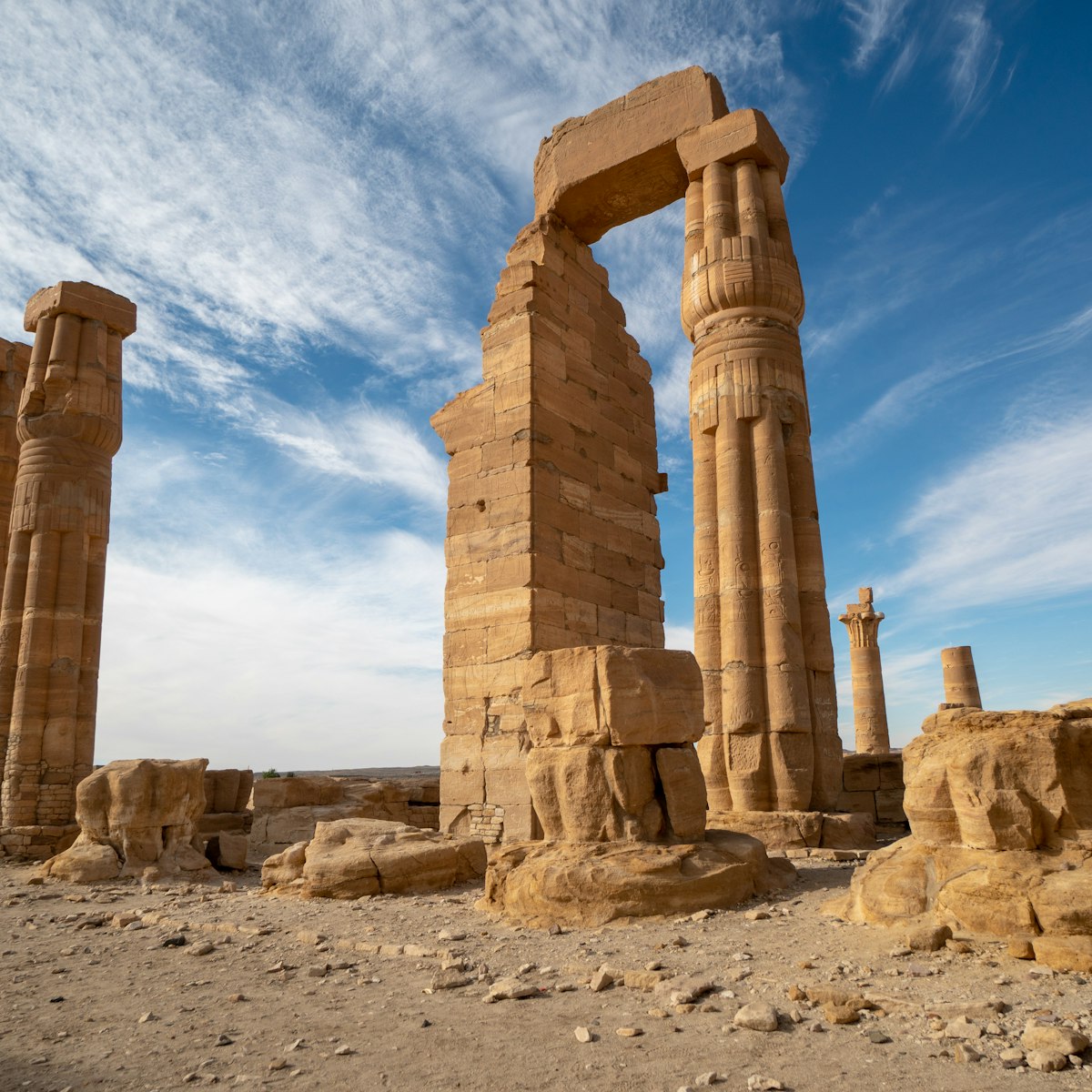
A little south of Abri, for many travellers the wonderfully evocative Egyptian temple of Soleb is the highlight of the journey between Dongola and Wadi…
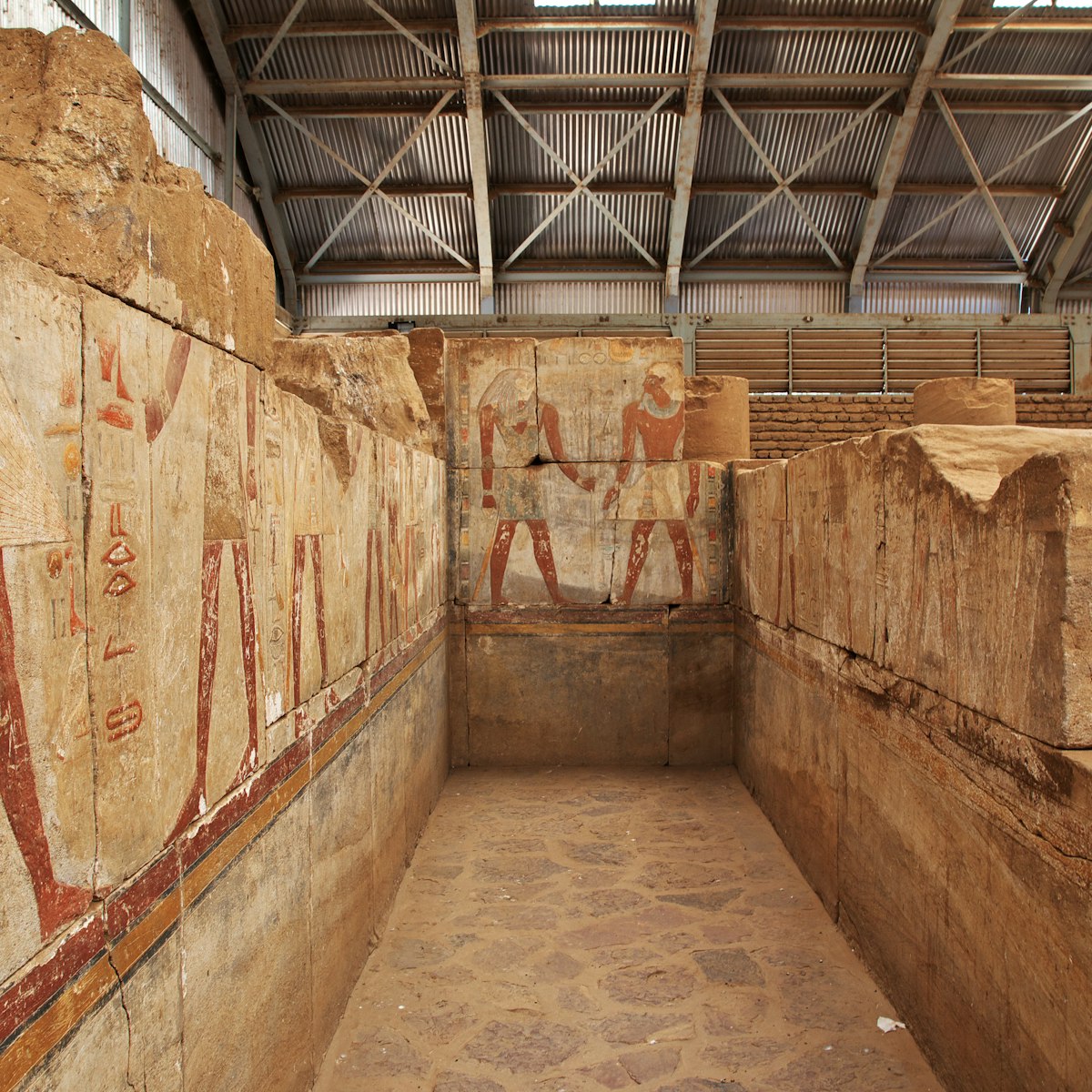
National Museum
This museum, the best in Sudan, has some breathtaking exhibits. The ground floor covers the rise and fall of the kingdoms of Kerma, Kush and Meroe. There…

Hamed el-Nil Tomb
Every Friday afternoon you can see an incredible Sufi ritual, where a colourful local troupe of whirling dervishes belonging to the Sufi community stirs…

Khatmiyah Mosque
At the base of the Taka Mountains is this spectacular mosque, centre of the Khatmiyah Sufi sect. It's a lovely mudbrick building with a pointed octagonal…

With a temple from Egypt's Middle Kingdom, an Ottoman fort and a medieval church among the many ruins, Sai Island is something of a synopsis of ancient…

Kerma Museum
Next to Kerma's western deffufa is this well organised museum that contains interesting relics from the site, including seven imposing granite statues and…

Western Deffufa
A 15-minute walk away from town, this massive mudbrick temple stood about 19m high and stretched 50m long. Nobody is really certain what it was used for…
Latest stories from Sudan
Filter by interest:
- All Interests
- Adventure Travel
- Art & Culture
- Beaches, Coasts & Islands
- Food & Drink
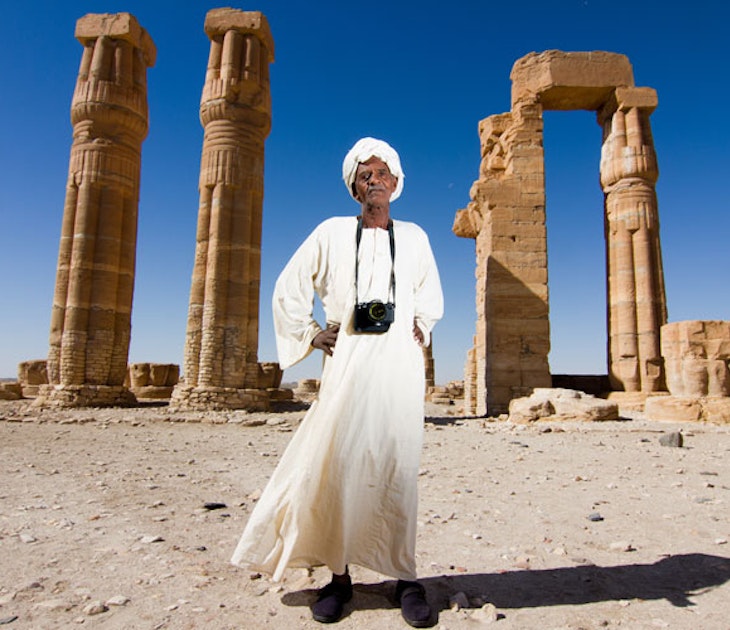
Wildlife & Nature
Feb 21, 2014 • 4 min read
To the wider world the North African nation of Sudan is often seen as a place of untold horror. A burning and featureless desert where war, genocide and…
in partnership with getyourguide
Book popular activities in Sudan
Sudan and beyond.
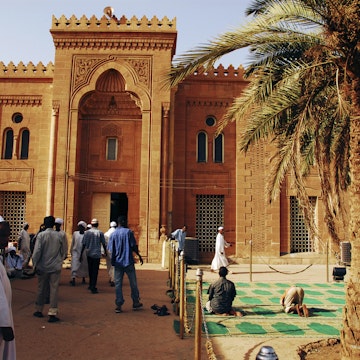
A guide for traveling to Sudan: Itinerary + Travel tips
By Joan Torres 86 Comments Last updated on May 8, 2024

The streets were dusty and unpaved but it was the month of December, so a slight winter breeze produced a pleasant feeling. I felt like wandering around some villages settled along the Nile River, the shore of which is so fertile that, for a moment, I forgot that I was in the middle of the desert.
I desperately wanted to continue my journey to some villages located a few kilometers away, but the modest smiles, kindness, and hospitality of the Sudanese were blocking my way, as I was forced to have some tea every couple of meters.
The different smells and the women’s colorful dresses made me think that I was at the heart of the African continent but the sweets, sand dunes, camels and Arabic language, which is the official language in the country, invited me to believe that, perhaps, I was in the Middle East instead.
I went up to the top of a dune, from where, very thoughtful, I observed those incredible, off the beaten track pyramid ruins.
Welcome to Sudan, the land where, finally, the Middle East meets beautiful Africa
This guide for traveling to Sudan contains everything you need to know, including a complete 2-week itinerary, and tips regarding transportation, accommodation, visas and much more!
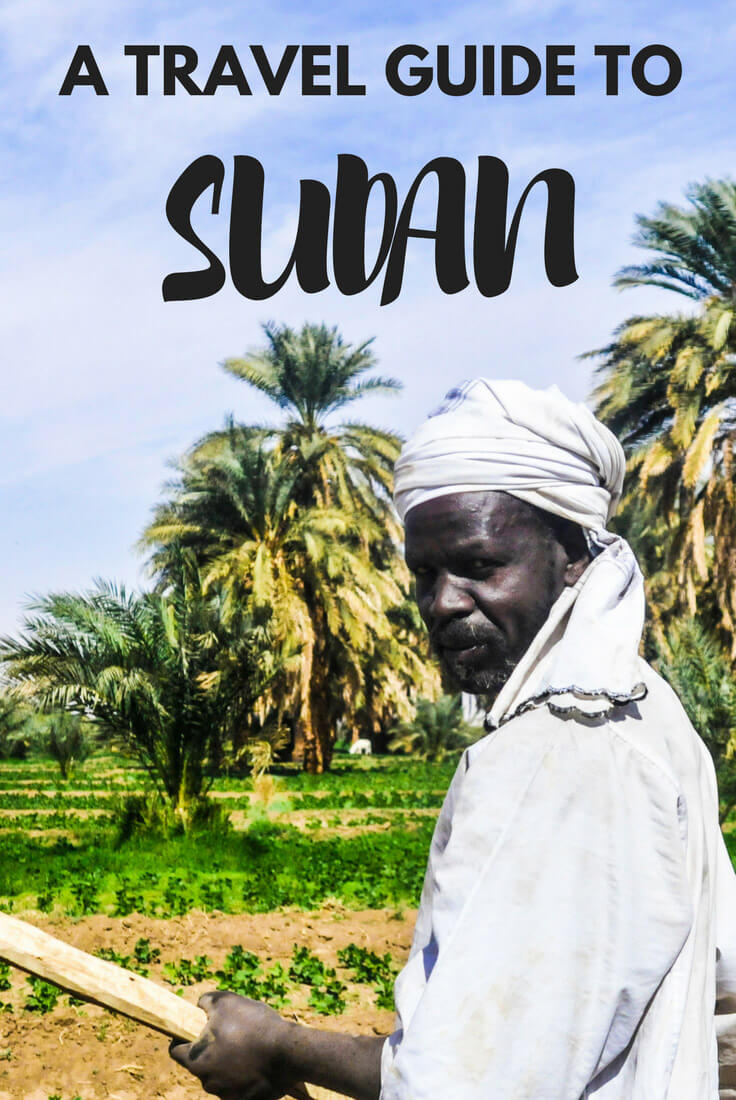
In this Sudan travel guide you will find:
Table of Contents
- Quick travel tips
- Travel insurance for Sudan
- Books for traveling to Sudan
- Transportation in Sudan
- Money – How much does it cost?
- Sudan is an off the beaten track place
- A 2-week travel itinerary
- More Information
our recommended travel insurance for Sudan
IATI Insurance is one of the very few that covers travel in Sudan.
💡 Sudan travel guide – Quick useful tips for traveling to Sudan
Best time to travel to Sudan – Sudan is one of the hottest countries in the world . If you really want to enjoy your trip to Sudan, you must go in winter, from November to February. The rest of the year, the heat is just unbearable, especially in summer. I went there in December and, at noon, the temperature reached over 34ºC.
Is it safe to travel to Sudan? – With one of the lowest crime rates in the world today, the tourist part of Sudan is one of the safest areas in Africa. However, there are tribal conflicts in Darfur province (west) and near the border with South Sudan. This violence is quite far from the touristic routes and, in the unlikely event that you managed to get close to there, the violence would never target foreigners. For further details, check out my article: Is it safe to travel to Sudan?
Language – Arabic is the official language. Nevertheless, like in any African country, Sudan is also home to several different ethnicities who speak their own local language, as well. Basic English is spoken by a significant part of the population, especially those with a higher level of education. Communicating with people, as well as asking for directions, doesn’t impose any real problems when traveling in Sudan.
How to get there – Most people travel to Sudan overland, either from Egypt or Ethiopia. By plane, people tend to come from Cairo, Doha, Dubai or Addis Ababa. I entered Sudan from Egypt. For further information, check out my post: How to cross from Egypt to Sudan overland

🪪 Visa for traveling to Sudan
You can get a visa in your home country, in Addis Ababa (capital of Ethiopia) and in Cairo and Aswan, Egypt. I got my visa in Aswan, a city located very close to the Sudanese border.
Once you are in Sudan, you also need to register and complete a few bureaucratic steps.
For further details, check out my article: How to get a visa for Sudan

🚑 Travel Insurance for Sudan
Because of the sanctions, few insurance providers cover travel in Sudan. The one which does, however, is IATI Insurance , and I also recommend it for these reasons:
- They have loads of different plans for all travelers: from families to budget backpackers
- Covers for up to 1 year trips, good for overlanding around Africa
- Readers of Against the Compass readers can get an exclusive 5% discount
📚 Recommended books for traveling in Sudan
Sudan Travel Guide by Bradt – I highly recommend buying the guide from Bradt, the best book guide about Sudan out there. Bradt Guides has the most insightful guides about the most off the beaten track destinations.

The Sudanese people
Traveling in Sudan is such an enriching experience, due to the multiple, endless interactions with people, whose kindness and hospitality are part of their culture, as much as their language is. Besides a couple of archaeological sites , Sudan lacks actual tourist sites. Sudan is about all the people with whom you’ll share uncountable cups of tea, coffee, meals and, occasionally, especially in small villages, you’ll be invited to stay at their houses.
By the way, be aware that, from a religious point of view, Sudan is a very conservative society , Sunni Islam being the main religion. If you really want to enjoy and experience people’s hospitality at its best, you should respect their habits and rules. Outside of Khartoum, you should always wear long pants. Never talk to women, unless spoken to first and, even if they talk to you, don’t dare take a picture of them, without asking for their permission, first. If you are a couple, say that you are married, even if you are not. Otherwise, they wouldn’t understand it, as in their society that would be unacceptable.
Read: A guide for traveling to Egypt (itinerary + tips)
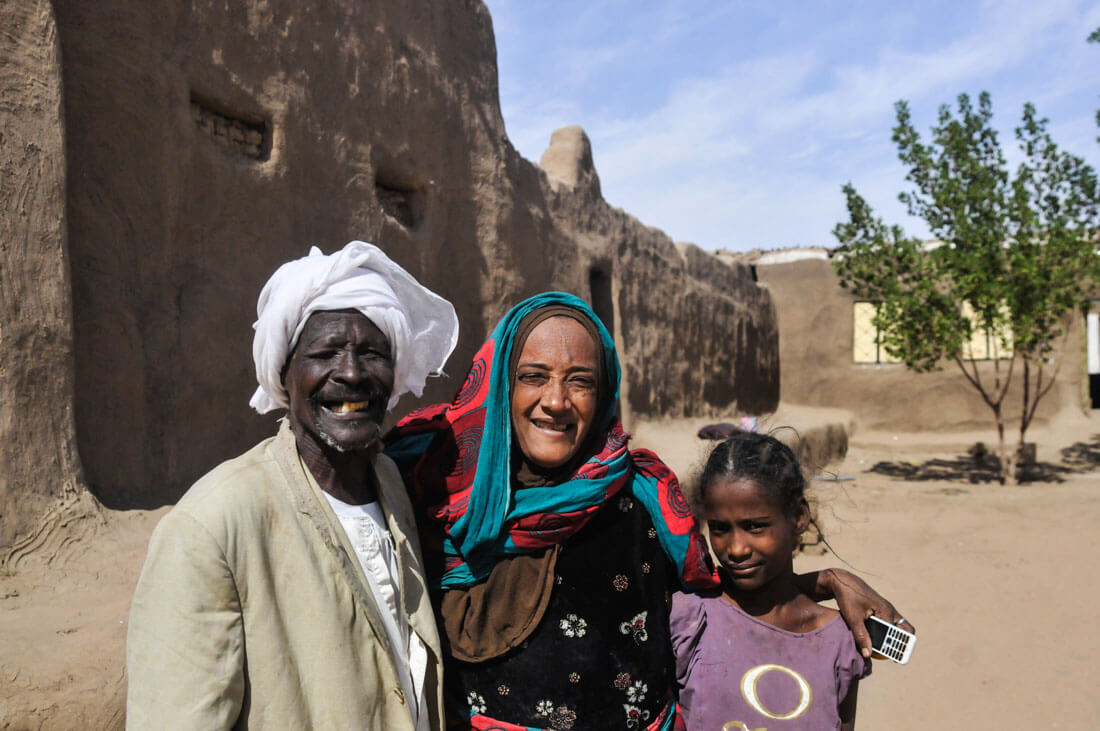
🛫 Transportation when traveling to Sudan
Public transportation – Traveling around Sudan by public transport is pretty straightforward. Every day, throughout the day, from all cities, there are local minivans going in all directions. Prices are quite low and they leave once they are full. By the way, roads are in very good condition.
Private Jeep – Many travelers prefer to hire a driver with a private jeep. I met a few foreigners who were traveling this way and, if you can afford it, you should know that it is very convenient, as you can visit many ruins which are very deep into the desert.
Hitchhiking – Very easy to hitch a ride. Furthermore, since there’s practically only one road going in each direction, finding a vehicle going in the same direction as you is quite simple.
Read: How to visit the Nubian pyramids of Sudan
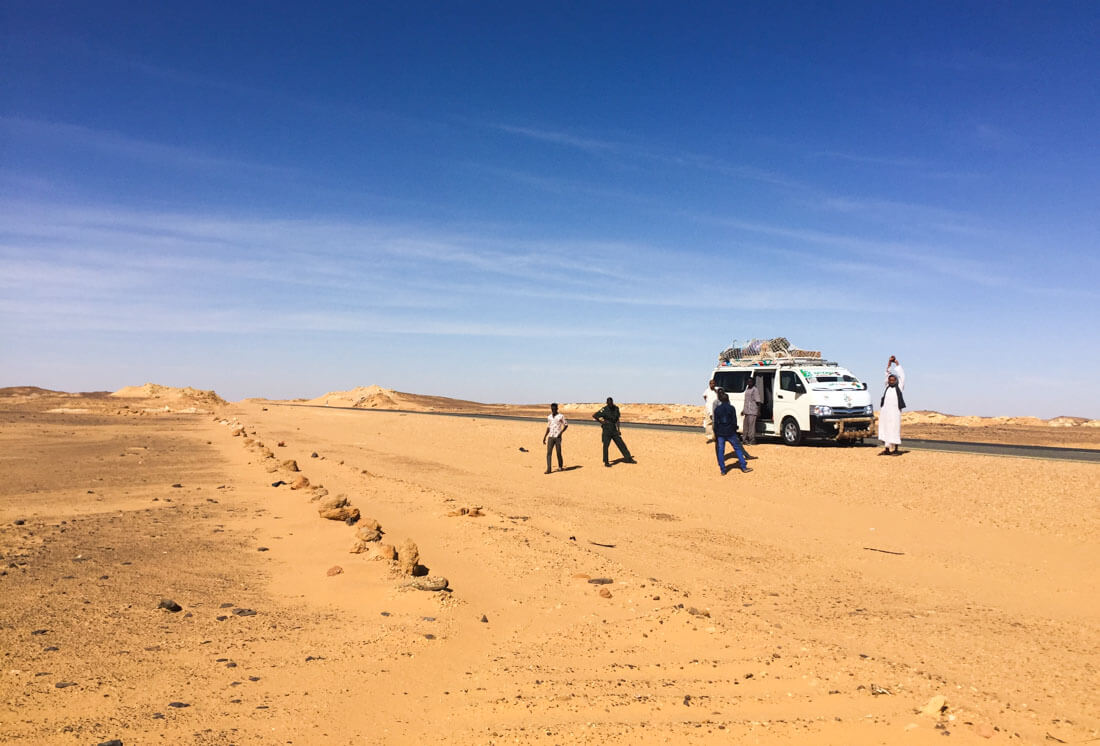
💻 Internet and connectivity in Sudan
Internet – Since internet connection is practically non-existent, in Sudan, it’s advisable to plan your trip ahead. On several occasions, I wasn’t able to connect and had some trouble finding a place or trying to remember the name of a hotel. Outside the capital, especially in the north, Wi-Fi doesn’t exist and the only way to connect is through a SIM card, which works terribly slowly, meaning that you’ll barely be able to browse anything.
Khartoum is the only place where 3G works OK. Update February 2018 : According to Patrick from German Backpacker , 3G has improved, at least if you get an MTN Sim Card.
SIM Cards – They are sold everywhere. If you say you want a SIM Card, they might not understand you, so you should say: Shariha Sudani . A card should cost 5SDG, with a few calls. You need pay extra for having internet. There are several phone companies like (Zain, MTN, and Sudantel), all of them offering different packages, always pretty cheap. MTN seems to be the most reliable one. Registration with your passport is always necessary.
eSIM for browsing, calling and traveling in Sudan
Basically, an eSIM is a regular SIM card with a digital format that works like a normal physical SIM card, with the added benefit that you can buy it from home before the beginning of your trip, hence avoiding the hassle of buying it at your destination.
With Holafly , you can get a SIM Card for a wide range of destinations, including Sudan .
Moreover, you can benefit from a 5% discount with the following code: AGAINSTTHECOMPASS
Get a VPN for traveling in Sudan
You should always use a VPN when you travel, especially when you connect to public Wi-Fi networks.
Your connection will be much safer.
Moreover, you will be able to access content which is typically censored in Sudan.
I recommend ExpressVPN – Extremely easy to use, fast and cheap.
If you want to learn more about VPN, check: Why you need a VPN for traveling .
💰 Money – How much does backpacking in Sudan cost?
Currency exchange.
Don’t exchange money at banks or official exchange offices.
Officially, the exchange rate is approximately:
1USD = 601 SDG
However, on the black market, in February 2018, the exchange rate was 1USD = 30SDG . You should always change on the black market. It’s better you change your money in Wadi Halfa, Khartoum or Sawakin, as you may have some troubles in exchanging money in the rest of the towns.
Please note that the exchange rate in Sudan is crazy and it keeps devaluating constantly. Prices provided in the following guide are correct in local currency but the USD exchange rate I provide may not be accurate.
Typical costs of backpacking in Sudan
In Sudan, one could easily travel for less than $20 a day. These are some of the most typical costs.
Note – I am using the USD/SDG exchange rate used on the black market.
Accommodation
Hostels – Dorms cost around 25SDG. Be aware that these aren’t hostels aimed at foreigners or backpackers but local Sudanese. They are extremely cheap but not very clean, unfortunately.
Hotels – Mid-range hotels, where the Sudanese middle class stays, cost something between 100SDG and 175SDG.
A meal of foul costs 25SDG. If you order chicken, your bill would increase to 40-50SDG. A one-liter bottle of water costs 3SDG, whereas a cup of coffee costs 5SDG.
Transportation
These are the prices of some of the bus journeys I took:
Wadi Halfa to Abri (180km): 60SDG Abri to Dongola (230km): 80SDG Abri to Karima (200km): 60SDG
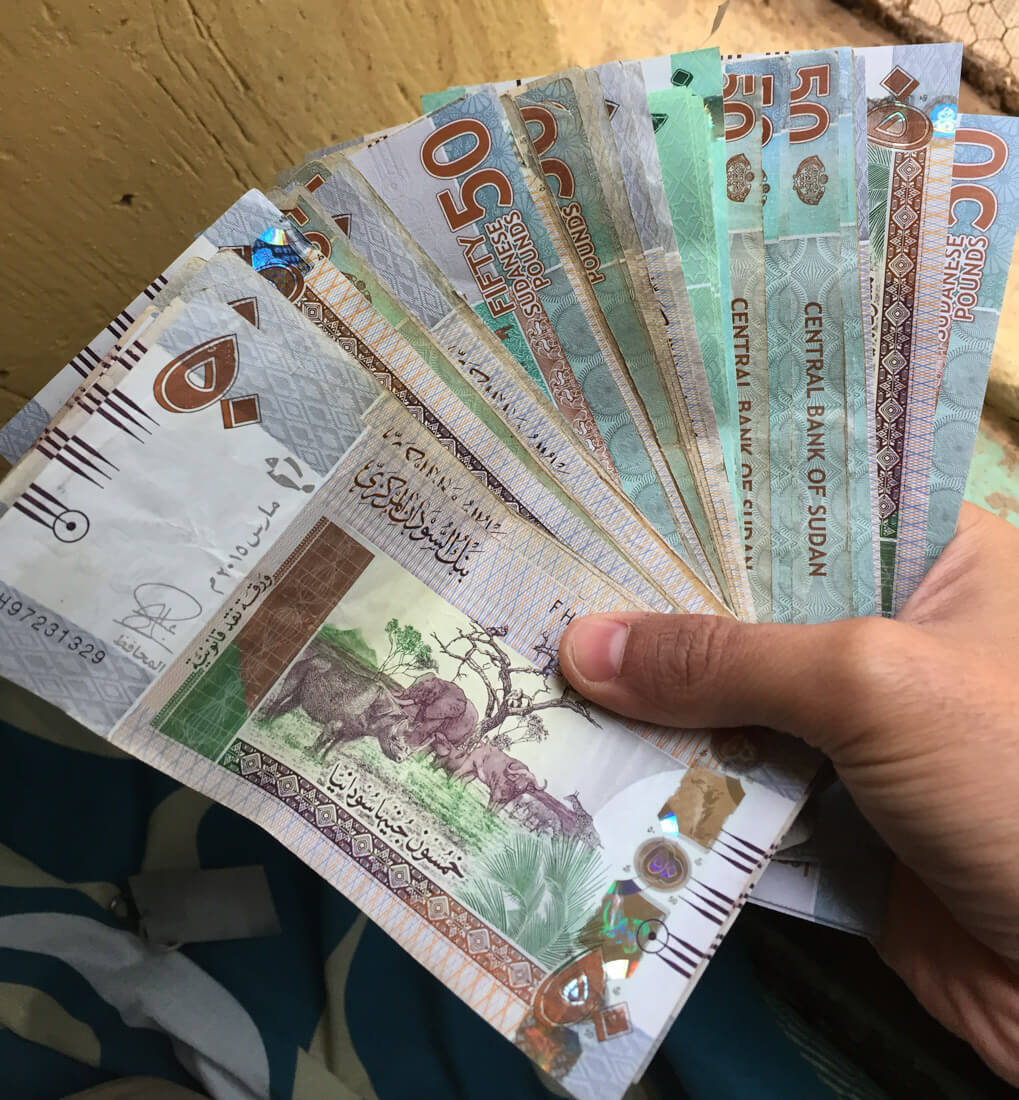
🍲 Sudanese food
Unfortunately, the food is not the highlight of backpacking in Sudan. Foul , which is a sort of black bean soup with plenty of peanut oil, is the national dish and what you are going to eat every day, to the extent that you will really get sick of it! If you are lucky, surprisingly, in some places, they add some sort of local cheese on top of it. One piece of advice. When your order foul , tell the waiter: ” Mafi Zed ”, which means ”without oil”.
Furthermore, in some places, grilled barbecue chicken can be found. Additionally, some restaurants in villages close to the Nile, also serve fried fish but, the day I ordered it, I saw that they had all the fish piled up in a dirty cupboard, without any sort of protection. For breakfast, it is relatively easy to find boiled eggs, accompanied by the delicious and strong Arabic coffee.
In Khartoum and Port Sudan, you can find a greater variety of food, including Western meals.
Read: Egypt off the beaten track
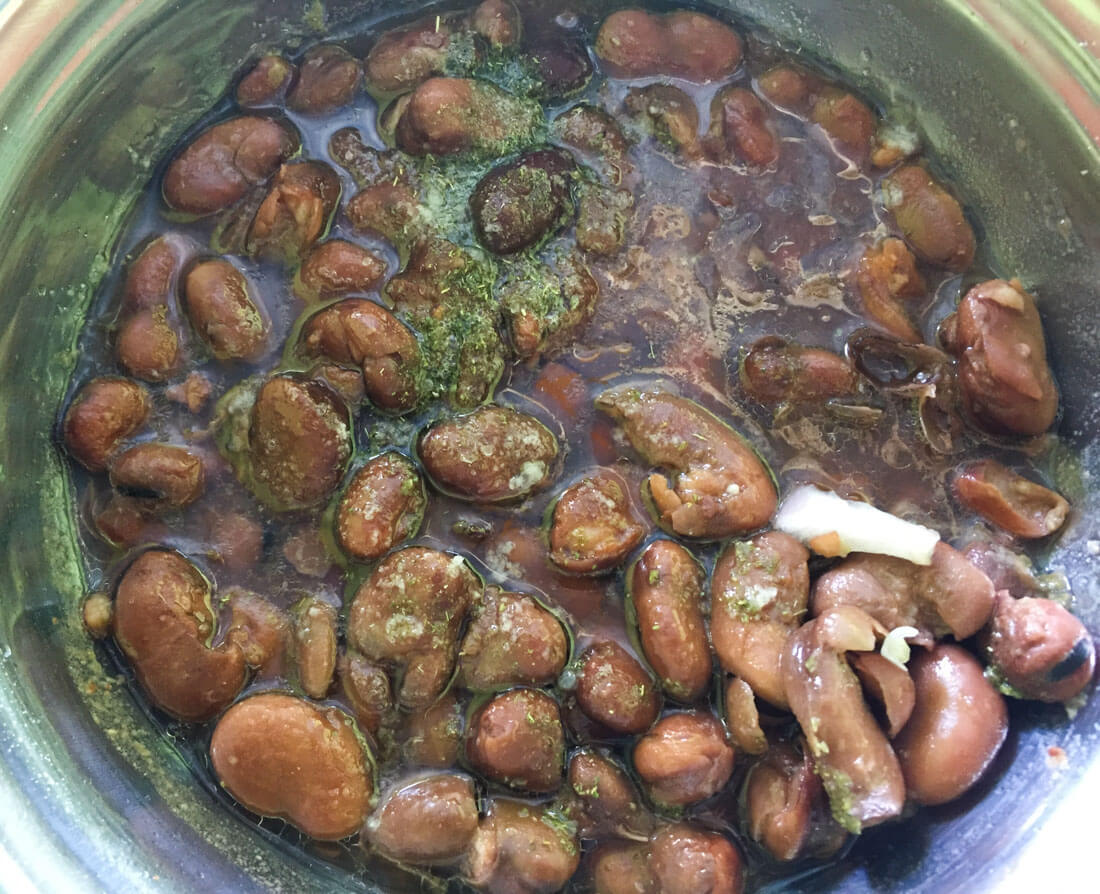
🤔 Should you travel to Sudan? A real off the beaten track destination
Before backpacking in Sudan, you should know that this a real off the beaten track destination where tourism infrastructure is not even in an embryonic stage. Most of the country lacks tourist hotels and most restaurants are just simple shacks with very poor hygiene conditions. Internet connection is practically non-existent and you’ll barely meet other travelers or backpackers. My point is that, whereas Sudan is an unforgettable experience, this is not a country for beginner backpackers.
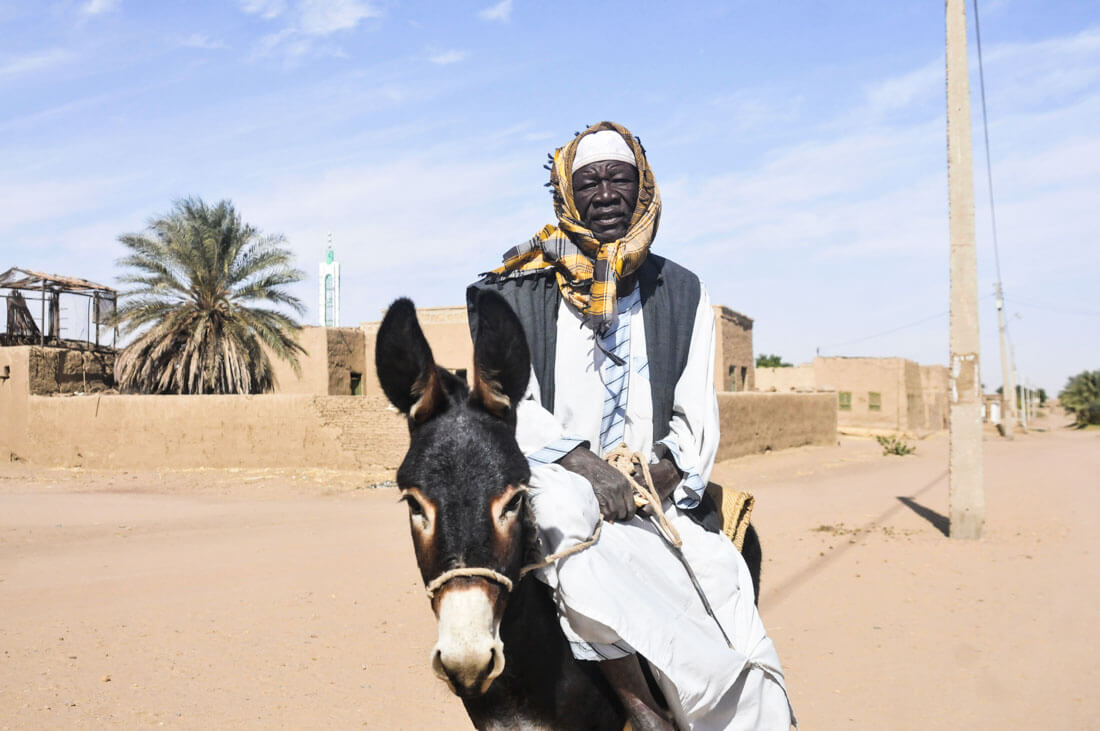
📍 Sudan Travel Guide – Ultimate Sudan itinerary
This Sudan itinerary goes from the north (Wadi Halfa, Egyptian border) to the south (Sawakin, Ethiopian border), with a few detours to the Red Sea (Port Sudan) and the border with Eritrea (Kassala).
I was in Sudan a little longer than two weeks, entering from Egypt and ending my trip in Khartoum. I would say that 85% of the most interesting sites in the country are located between these two points and, if you manage your time well, you can easily visit these places in just two weeks . Unfortunately, I didn’t have time to visit Kassala and Port Sudan. If you want to visit them, you should add at least one extra week or ten days to your itinerary.
2 weeks Sudan itinerary
Abri and the nubian villages, soleb temple.
- Meroë / Shendi
- Naqa and Musawwarat es-Sufra
- Omdurman (Sufi dancing and the camel market)
Extending your Sudan itinerary
Map of the things to do in sudan.
If you come from Egypt, Wadi Halfa will be your first point of contact with Sudanese society. This small town doesn’t have anything interesting to offer travelers but you will have to spend your first night here, exchange some money and, basically, chill out for a bit after your hectic journey from Egypt. By the way, bear in mind that, unless you come from Egypt, it doesn’t make a lot of sense to visit Wadi Halfa, as this is a mere border city.
Where to stay in Wadi Halfa – There are an endless number of basic hotels targeting local people coming from Egypt. Usually, these hotels offer rooms with five beds at 20-25SDG ($0.80 – $1.04). I stayed in Aleen Halfa . Be aware that these hotels are not very clean. Welcome to Sudan.
Read: How to cross from Egypt to Sudan overland
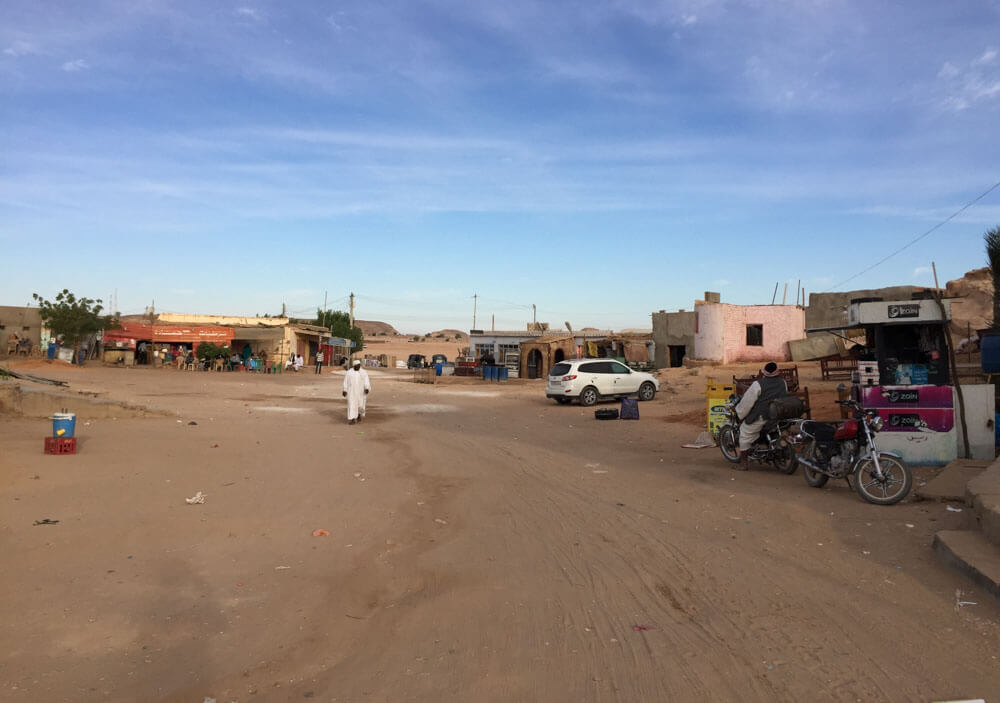
The Nubians, one of the most ancient civilizations in Africa, are an ethnic group which originated in present-day Egypt and Sudan. The Nubians have a long history that dates back to the Egyptian pharaohs and they ruled Egypt during the 8th century B.C. The Nubians have strong cultural differences, identified in their literature, music and poetry, and they speak their own language, which, even though it’s hard to imagine, is a non-written language. Today, Nubian people live spread across southern Egypt and northern Sudan, established on the shores of the Nile river.
Abri is the main town and the perfect base from where to explore the villages around the area. You should just follow the river, hopping from village to village, through the foul and palm plantations. In my experience, Nubians are the most hospitable people in the country. Visiting those villages was the highlight of my trip to Sudan, not only because of people’s kindness but also, because of the landscape, as you see beautiful, large green fields flourishing in the middle of the desert, thanks to the fast-flowing river.
For more information, read: Tales of the Nubian people in Sudan
Where to stay in Abri – Megzoub Guest House – Definitely, this is the best guest house in Sudan. Megzoub is a great, wise man who offers double and single rooms with pretty clean toilets. However, his prices are quite high, compared to the country average. His rate may start at 250SDG ($10) but you could easily bring it down 100SDG ($4.10), at least for me and a friend who was there recently. You can contact Megzoub by calling any of his phone numbers: +249122886586 and +249911220984.
How to get to Abri from Wadi Halfa – There are minivans which leave at every hour, starting from quite early in the morning. Price: 60SDG ($2.50)

One of the most well-preserved ruins in the country and, founded by Amenhotep II, Soleb temple was built to worship Amun-Ra. It is claimed that the architect might have been Amenhotep, son of Apu, whose mortuary temple can be found in Luxor . Soleb is located halfway to Dongola (the next destination after Abri). You could visit it on a day trip from Abri or on your way to Dongola
How to get from Soleb to Abri – Soleb is 50km from Abri. Megzoub, the owner of the guest house in Abri, can take you there in his car for 400SDG ($17, round trip). On the other hand, if you want to go by yourself, you should take a mini-van to Wawa. The temple is located on an island in the middle of the river. You can only get there by boat but there are local fishermen who can take you there cheaply. One-way bus ticket to Wawa is 20SDG costs ($0.80) and entering the temple 60SDG ($2.50).

Dongola is a city which does not have much to offer the traveler. However, if you are heading from Abri to Karima, probably, you will probably have to spend one night here, as there is no direct transport and the minivan service that runs from Dongola to Karima doesn’t run until very late. In this city, there’s not much to do besides wandering around the main bazaar, eating grilled chicken and socializing with the locals.
Note that there is no direct transportation from Abri to Karima but you can get a direct bus from Wadi Halfa to Karima, without stopping in Dongola.
Where to stay in Dongola – Alnuallem is the only good hotel in the city. It offers double rooms at 175SDG ($7.30). These are the coordinates: 19.172898 30.468067.
How to get to Dongola from Abri – There are frequent minivans, being the last one leaves at around 5 or 6 pm, but you should double check with Megzoub. Price: 80SDG ($3.30).
Welcome to one of the most touristic spots in Sudan and where, probably, you’ll meet the first bunch of travelers (if you are coming from Egypt). Karima is a lovely area which is famous for being home to three of the most important archaeological sites in Sudan, containing a large number of Nubian pyramids, some of them in very good condition. The best about it is that you might have the pyramids just to yourself.
- Jebel Barkal : The best-preserved group of pyramids and the site surrounded by the prettiest nature.
- Nuri: The pyramids from this site are in a deplorable state but that’s the beauty of them.
- Al-Kurru: Almost completely destroyed, as the locals took the stones to build their houses
For more information about the pyramids, read: How to visit the Nubian pyramids in Sudan
Where to stay in Karima – I stayed in Al-Nassr , a very simple hotel frequented by Sudanese. Price can be negotiated but I paid 100SDG ($4.10) for a double room with private bathroom. Update: In 2018, travelers are already paying 150SDG. Another alternative would be a fancy guest house called Nubian Rest House , which has double semi-luxury rooms. However, I heard that they are now charging $220 for just one night. They are crazy and target people who travel on a tour. In the Nubian pyramids article I wrote, I provide further details about the location.
How to get to Karima from Dongola – The minivans leave from the morning, but as very few locals use that route, you might have to wait for a while until the bus is full. Price: 60SDG ($2.50).
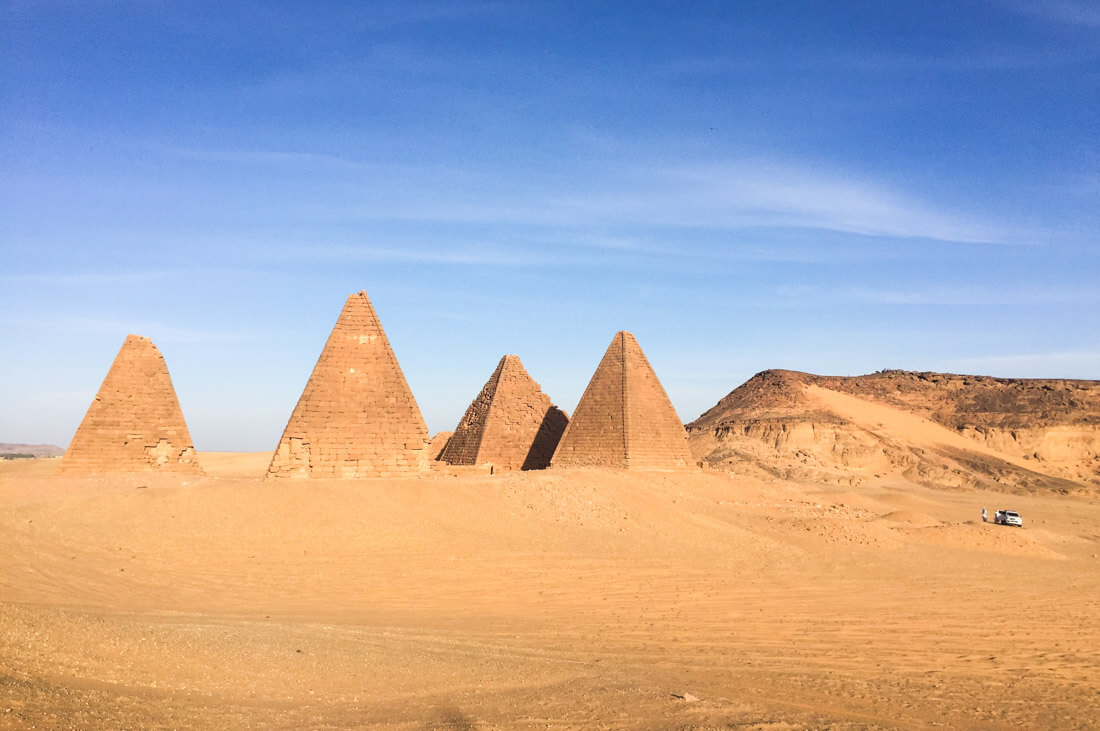
Shendi is just a small, unattractive town which you can use as a base to visit the pyramids of Meroë . The most interesting part of Shendi is its lively bazaar.
How to get from Karima to Shendi – To get there from Karima, you should first take a minivan to Atbara. They leave early in the morning and cost 130SDG ($5.40) for a 3-hour journey. From there, you can catch a 2-hour big bus to Shendi for 50SDG ($2.10). Alternatively, you could get off on the road, before getting to Atbara and hitchhike from there. That’s what I did.
Where to stay in Shendi – I didn’t stay but there’s a local hotel called El Kawther (16.696079, 33.424961), which is supposed to be good. Alternatively, you can also stay in a kind of apartment, which is close to where the bus dropped you, 50 meters from the green mosque. There’s no sign but it’s a pink building with many water tanks on top. It has fully furnished, 2-room apartments with fridge, TV, stove and pots. It costs around $10 per night, which can be split by several people.
The only proper touristy place, meaning that here you’ll find an archaeological site surrounded by a fence where they charge an entrance fee and there are locals selling souvenirs. The royal cemetery of Meroë is composed of 100 narrow pyramids spread across a vast desert of orange sand dunes. Most of them are quite well-preserved and, at the end of 2016, the site was still under restoration. Ticket price varies and it will depend on your negotiation skills. For more information, read: How to visit the Nubian pyramids of Sudan
How to get to Meroë from Karima – The ruins of Meroë are located right next to the road, meaning that there is no direct bus going there. If you come straight from Karima, follow the same route as going to Shendi but get off 50km before. If you want to go from Shendi, take a bus to Kabushiya and then, you can easily hitchhike the remaining few kilometers.
Where to stay in Meroë -You have 5 options. First , you could stay in Khartoum and come to Meroë on a day trip, which is what most travelers do. Second , as I mentioned previously, you could stay in Shendi. Third , there are several resting places along the road between Atbara and Shendi, where the truck drivers spend the night for as little as 5SDG ($0.30). Basically, they have a bunch of deck chairs placed outside. I stayed here 🙂 Fourth , you may stay at the Meroe Tented Camp, which is a desert camp with relatively luxurious tents. They used to ask $42 for one night but, according to Patrick from German Backpacker , they now ask for $190. They are just crazy and, clearly, not targeting backpackers. And fifth , you could just set up your own tent among the dunes!
Naqa and Musawwarat es-Sufra
The most off the beaten track Nubian temples in the world, Naqa and Musawwarat es-Sufra are located in the middle of the desert, several kilometers away from the road. Getting there is a bit tricky as there are no signs and you need to go over sand dunes.
A traveler claimed that he went there on a small, normal car but you need a really good driver and, definitely, it’s better to go there on a 4×4.
From Khartoum, the price would oscillate something between $100 and $150. It’s quite expensive.
Alternatively, in Shendi, which is the closest town to the temples, you could look for a 4×4 owner and ask this person to take you there. The cost would be significantly lower than from Khartoum. Andy, the same traveler who went there on a small car, said that he got a car for 400SDG ($20). He visited Naqa but, when he arrived in Mussawarat, they wanted to charge him $20 for visiting it and bargaining was not possible. Be aware of this.

Located very close to the capital, Omdurman is a city that has very little interest but is famous for having some of the most popular events among tourists:
Sufi dancing – Sufism is the mystical or spiritual branch of Islam. Their faith is not based on logic but on revelation. They are those Sunni Muslims who perform a spiritual dance while they get high on drugs. This psychedelic dancing takes place on Friday afternoons. Where? In Hamid El-Nil Mosque . You’ll be definitely meeting other tourists. For more information, check out this amazing photo essay from the Candy Trail travel blog.
The camel market – Personally, I didn’t go there, as I’ve seen several camel markets in the Middle East before, but if you’ve never seen more than 2,000 camels gathered all together, I am sure you are gonna love this one. How to get there? First of all, take a bus to Omdurman (either from Shendi or Khartoum). In Khartoum, buses depart from Al Araby bus station. The bus will drop you off at the main souk. From there, you should take another bus to Souk Libya (7km). Once in Souk Libya , take the last bus to Moelih, the actual camel market. You’ll know where it is because everybody else will get off there.
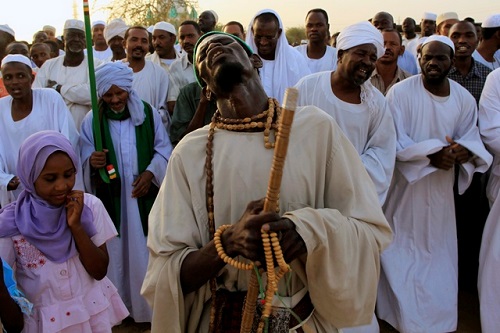
The capital Khartoum
If you come from Egypt, you should arrive in Khartoum in two weeks, approximately. Khartoum is a city in which to rest and eat something different from foul and grilled chicken. Honestly, there’s not much to do besides visiting the confluence of both the Blue and White Niles. In Khartoum, one can have fun just wandering around the endless souks and hanging out with the locals. By the way, if you want to hang out in a nice hotel, Corinthia Hotel, the best one in town, has the best internet and you can spend as much time as you want in the reception area.
For more information, read: 24 hours in Khartoum
How to get to Khartoum – Al Araby is one of the main bus stations in Khartoum. From here, buses come and go in all directions. From Shendi, you can take a bus for 20SDG ($0.80). 4 hours, with traffic.
Where to stay in Khartoum – Couchsurfing is easy in Khartoum but also, there’s a hostel called Hostelling International Khartoum. These are the coordinates: 15.591484, 32.539680. There’s also a camping area next to the river, situated very close to the confluence of the Nile. It’s called Blue Nile Sailing Club. These are the coordinates: 15.611694, 32.534409
The following places (Port Said, Suakin and Kassala) are amazing to visit. However, you should add at least one week or 10 extra days to the previous two-week itinerary.
Located at the border with Eritrea, Kassala is a city that lies at the foot of a beautiful peak belonging to the Taka Mountains. In Kassala you will find a large number of different ethnicities, including Beja and Rashadia . An interesting spice souk, plenty of colors and meeting different kinds of people are the things that make Kassala become a unique place. By the way, most likely, you’ll be the only foreigner wandering around this area.
For more information, check out this awesome photo essay from Candy Trail Travel Blog.
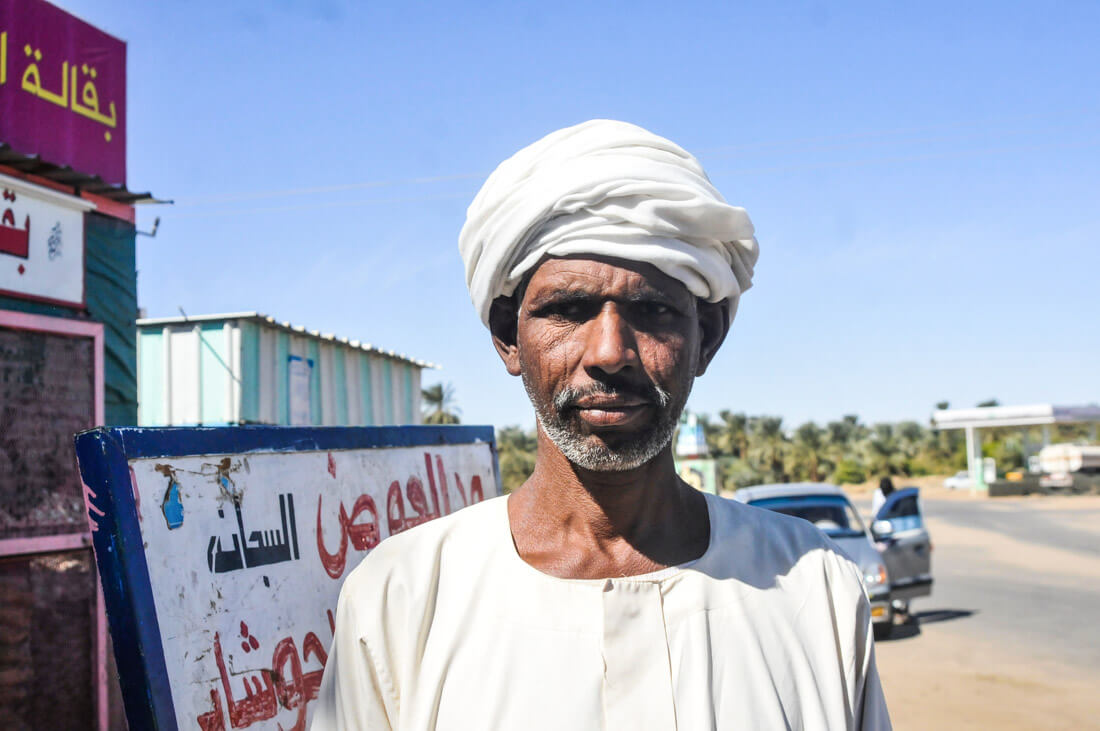
Port Said and Suakin
Located on the Red Sea, almost 800km from Khartoum, these two cities are, geographically, culturally and architecturally, quite different from the rest of Sudan.
Suakin – With a peculiar architecture that dates back to the 19th century, Suakin was an important place during the Ottoman Empire, as it was the center of slavery exportation and where Muslims left from on their pilgrimage to Mecca. Today, the Turkish government is investing some efforts in restoring the buildings. Where to stay? There are a few hotels but, apparently, some of them might tell you that foreigners are not allowed to stay in Suakin. You can try but, if you want to be more comfortable, I suggest you go to Port Sudan, located just 60km away.
Port Sudan – Port Sudan is the place where you want to go if you wish to disconnect from the desert and swim in the bluest water. This is most cosmopolitan city in the country, as well as the cleanest. Where to stay? There is one expensive hotel called Coral on the Corniche. If you want something very cheap and basic, you can stay at Hotel Boheine (19.6118533, 37.2208425), near the sea, or at Hotel Alatoun (19.612733,37.213873), near the souk.
By the way, like its neighbor Egypt, the Red Sea in Sudan is home really impressive corals, so here you can do some of the best snorkeling and diving ever.
How to get to Port Sudan and Suakin? – From Khartoum, there are direct buses but you could also go from Atbara, the city where you took a second bus, on your way from Karima to Meroë.
❗ More information for traveling to Sudan
📢 In my Travel Resources Page you can find the list of all the sites and services I use to book hotels, tours, travel insurance and more.
All guides and articles for traveling in Sudan destination
- Tales of Nubian People
- Travel Guide to Nubian Pyramids
- Is Sudan Safe?
- Solo Female Travel Guide to Sudan
- Visa Guide for Sudan
Travel guides to other countries in Africa
- Ethiopia Travel Guide
- Eritrea Travel Guide
- Somaliland Travel Guide
- Travel Guide to Egypt
- Libya Travel Guide
- Mali Travel Guide
- Travel Guide to Mauritania
- Tunisia Travel Guide
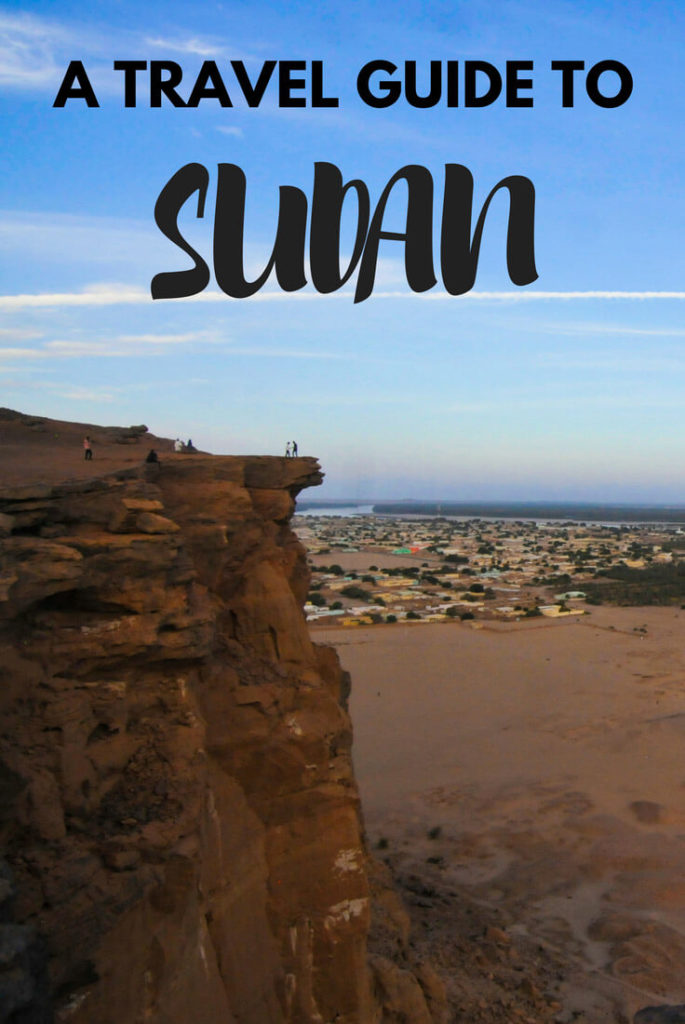
86 comments
Excellent review. Stunned how the crime rates in tourist areas are among the lowest on earth. The US State Department never reported that one. Meanwhile, driving through the West End of my hometown in the States I am likely to get popped after dark. Crazy stuff. I met 2 young awesome South Sudanese kids recently who moved to the USA to play high school basketball. Both landed scholarships to prestigious Tulane University. What niche kids, embodying the generous spirit of the Sudanese people.
Thanks for sharing 🙂
Hey Ryan, thanks for your refreshing comment. I’m really happy to hear that there are Sudanese kids who get scholarships for studying abroad. The youngest country in the world is going through quite a lot of struggles and it’s good to know that some its citizens get opportunities like this one. Cheers mate,
Very interesting and useful article about a destination that not many people visit! I bet you didn’t see many tourists around you 🙂 Loved the photos too btw.
Hey, Cinthya! I just saw a few backpackers and 4 or 5 old couples traveling with a private guide. That’s it!
Hey! Thanks for a ridiculously good guide which eased some of my concerns. Reading your take on it, it seems similar to the experience of travelling around Iran without an escort (outside of the large cities) and I would do anything to have more similar experiences.
As I understand it, it has the same situation with ATMs and currency exchange as well. Can I assume the black market is merely people hanging out at some spot holding calculators, or is the set up different? Will they accept Egyptian pounds at the same advantageous rate? Is it possible to exchange on the Egyptian side and/or in intermediate cities as well? Grateful for any questions answered!
Hey mate, hope you are all right. I assume you are coming from Egypt then? Right after crossing the border, the first people you’ll meet will be locals trying to exchange your currency. Yes, they accept Egyptian Pounds. To be honest, I didn’t exchange with them, as I thought I would find a better rate in Wadi Halfa, the next city. But actually, their rate was almost, as good as the one in the city, so you can exchange your EGP with them, and exchange your USD or € in Wadi Halfa. In Wadi Halfa, there are no people hanging around with tons of bills and calculators but you need to ask at the different shops, to see who is willing to exchange your cash. Don’t worry, they love foreign currency so it’s fairly easy to find them.
Much appreciated! Yes, from the Egyptian border. I wanted to visit Ethiopia, but I dislike to fly as there is so much you miss in between. Therefore, I was more than happy to see that Sudan is not only an alternative but a seemingly interesting destination. Thanks again and good luck on your next trip!
Your welcome and all the best!
Hi Joan, This is a great site, thanks. My girlfriend and I are in Aswan waiting to collect Sudan visas. We were wondering if you can register in Abri rather than Wadi Halfa as we are hoping to go straight there. Did you hear of any option like this? Cheers Tim
Hi, Tim! No, you can’t, unfortunately. If you didn’t do it in Wadi Halfa, you will have to do it in Dongola. But anyways, if you come by public transport, you can’t go straight to Abri but you have to spend the night in Wadi Halfa. The bus will arrive in Wadi Halfa pretty late and even the drivers always spend the night there. The people that go straight to Khartoum also must spend the night there. You can register in Wadi Halfa in the morning and then go to Abri. That’s what I did. Good luck!
This article just saved my life lol. Thank you so so much. Amazing information.
Glad it did 🙂
Hi Joan, Thanks for the excellent guide! I share your experience that the Sudanese people are some of the warmest I’ve come across. One thing though. Officially it is required – or at least it was required when I was there in 2011 – to aquire permits if visiting sites including the pyramids. Has this changed or do you simply consider there to be no need for permits? I didn’t aquire any when I was there, but on my way to Meroe I were asked for them at a checkpoint. I was told to turn around but after some discussion I was allowed to continue to the next city (supposedly to get a bus back to Khartoum). Since the bus driver couldn’t care less about permits he let me off at the pyramids which were amazing 🙂
On a side note: Sudan has some of the best diving in the Red sea, which one could argue to be the main draw for tourism in the country…
Hey Mattis! That’s surprising that you needed permits to visit the pyramids. I am pretty sure that you don’t need them anymore. No one asked me for any permit and didn’t meet any tourist who had an issue with that!
Yeah, I also heard that Sudan has very good divings. I don’t dive myself but perhaps I should include it in the guide. Thanks for the reco, cheers!
Thanks, hopefully there’s no need! I may have been mistaken in saying that they are needed for the pyramids per se – I could confuse them with the photography permit that you needed to take photos in the country in general. Though I’m also unsure whether that is gone now, I never applied for it.
Well there’s probably not much to be said about the diving guide-wise, since it’s all liveaboard diving and the majority of the boats start in Egypt. While I did meet a guy who jumped on our boat last minute, I think this is an exception to the rule of booking ahead. Cheers
Hi Mattis and Joan. Unfortunately there is a need for a travel permit to see the pyramids and probably going anywhere from Khartoum. My girlfriend and I were stopped on the way a few days ago and made to get a bus back to Khartoum cos we did not have one. We were ok coming from the north all the way down to the capital though. The travel permit and photo permit are the same form. It is free to get at the Ministry of Tourism, which can be found here: 15°35′52″N 32°34′37.52″E It is on Bashir Enefeidi Street, which is on the opposite side of the airport from downtown on the east side of the city. The office is on the second floor and a you’ll need a passport photo and copy of your passport and visa page. They are really nice there and have a photocopier and can make you copies of the permit to give to police at checkpoints. It takes about ten minutes and you can list all the places you want to visit and take photos.
Thanks for your feedback man!
However, you were not asked a pyramid permit. You were asked a travel permit which is required for anyone leaving Khartoum. If you enter from Egypt or Ethiopia and you don’t pass by Khartoum, there is no need to have this permit. Also, if your final destination is Khartoum, which means that you don’t leave the city, you don’t need the permit either.
In my Sudan visa article, I was explaining this process which you also explained very well: https://againstthecompass.com/en/visa-for-sudan/
I know. It’s a non-sense law.
Ah ok. Then no. Apart from the travel permit there was no need any other separate permit for the pyramid that we could see and we were not asked for one. Careful at the pyramid entrance they tried to charge SDG270 each or $20. But stand your ground and tell them it is 100 each.
Hello Joan. I was wondering where you went after Sudan. Did you fly home? If so did you manage to find a cheap international flight? What do you think is the best way to get back to Europe from this part of the world?
Hi Emily, apologies for my late reply. I flew from Khartoum to Spain with Qatar Airlines and, as far as I can remember, it was pretty cheap!
Hi Joan I am looking to cross from eygpt into Sudan in October as a solo female. Did u experience any issues along the way or did you feel relatively safe
Hi! From a safety point of view, there is no problem at all. From a comfort point of view, it’s a fucked up journey :p But there are plenty of Sudanese women who will be more than happy to have a chat with you, you will have fun 🙂
Well, I’m a man. If you are a man, things are different
Tim, Joan, Albeit a bit late but thank you for the information! Best
Hello Joan,
I might be travelling to Sudan for work. I really liked your blog and posts related to your trip in Sudan. You give another perspective than what most embassies and newspaper give. May I ask you when did you go there? Things change fast there and it possible that the atmosphere today or next month are not the same as when you were there.
Thanks a lot in advance!
Hi Luna, I traveled there in December 2016. Yes, things change fast in Sudan but I wouls say that they change to good, as tourism is increasing day by day. Cheers 🙂
Thank you for sharing, I found very useful info here, I was delighted to find this web site. This is an incredibly inspiring story, I love it!
Hi Joan, excellent helpful review. Can you tell me briefly what clothing you would recommend for female travelers in Sudan? Thanks, Terry
Hello. I just published this article, which definitely answers your question 🙂 https://againstthecompass.com/en/visit-sudan-female-traveler/
Thanks for the source of information. I went Aswan (200 egp with ferry from Abu Simbel) – > Wadi Halfa (150 SDG minivan) – > Dongola (70 SDG bus that was going to Atbara) – > Karima (130 SDG minivan then 50 SDG bus from Atbara) – > Meroe Pyramids (15 SDG truck to Shendi and 70 SDG bus) – > Khartoum and going Ethiopia soon, which supposedly is 270 SDG to the border. Did not bargain any transport.
Seems like you have kept updating things well. The SDG just had a hell of a week and the government seems to try stabilize it again. But we got 24 per USD and 1.35 per EGP (did not bargain this one) in Wadi Halfa last week. Which at the time made changing into USD first pointless and perhaps even a loss, but it has been crazy.
Sleeping in the desert by the pyramids is fine as well, even without a tent. Got a bit chilly due to the wind around 3 AM or so but better than superheated rooms with mosquitoes. Although I did have a beetle roll a ball of shit up to me. We asked to get off at “Bayyarawaya” or some similar pronounciation. Use it in combination with Haram (which means Pyramid in Arabic, but also “religiously forbidden” depending on pronounciation). Saying Meroe just confused them as there is a town opposite Karima named such.
Did registration overdue at the airport for 535 SDG, less than 20 minutes work and the airport is so central. Didn’t even give them photos but they charged me 5 SDG to copy passport and visa.
Youth Hostel in Khartoum is 70 SDG per night atm in dorm and they can give you a paper to help in the registration, but I don’t know if it changed anything.
I HIGHLY recommend taking busses and not minivans if you are even remotely tall or value space. Unfortunately not always available and more of a point to point form of transportation.
When it comes to food, I never had foul as expensive as 25 SDG, outrageous! :] Always hovering around 15 and often satisfying two people. And those 5 SDG falafel sandwiches sure could use some vegetables or sauce added to it…
So here are some ramblings from me. But all you already have here is more than sufficient to navigate Sudan and feel somewhat confident in doing so. Thanks!
Hey, thank you so much for this trip report! Really appreciate it 🙂 Good to know that this currency devaluation won’t last for long. I will keep an eye on it! Also didn’t know that you could register at the airport. Enjoy Ethiopia 🙂
The information is good. However, fuul is not the national dish – although it is eaten frequently (maybe a sandwich in the western world is a suitable comparison). Aseeda or kisra would be considered as more of a national dish. They will put a sauce over it such as tagiliya (closest comparison I can give is bolognese) or bamiya (gloopy okra based). There are other sauces, including a kind of chicken curry but I don’t know the names of these. I think it is a bit of a misconception that it is not possible to get good food – although it can be difficult as a tourist unless you have a local to help or speak Arabic. Often the best food is in peoples homes rather than restaurants.
Hi James, I am so jealous that you tried this dish! Yes, I fully agree that, in this part of the world, best meals are ALWAYS eaten at home, so in Egypt and many other Arab countries 🙂
Dear Joantow,
I visirde Port Sudan end of December.
There is only the expensive top hotel Coral on the corniche (avenue along the coast). Stayed in Boheine hotel at 450 sdg (19.6118533, 37.2208425) near the sea. Also at Alatoun ( 19.612733,37.213873) near the souk. Both already basic.
Suakin was a disappointment. Only piles of coral stones remain on the island and two reconstructed mosques and the customs house. Lots of poverty and waste everywhere.
Best regards,
Thank you for this great, specific information Jozef. I have updated the guide accordingly 🙂
Dear Joantow, A short update from Khartoum. If you do not like the accomdation @ the Youth Hostel, in the same street about 100 meter west there’s affordable Kh2 hotel run by hospitable Khaled, who speaks fine English.
Omdurman heading public transport leaves from Jackson bus station west from the Train station. In Omdurman, you find Imam Al-Mahdi tomb at GPS code 15.639591, 32.488507, while Named Al-Neel tomb, where the sufi chanting/dance takes place can be found at GPs 15.625162, 33.464271.
Really helpful, thanks!
Are there any restrictions with regards to bringing cameras or drones into the country?
Hi Andrew, I have no idea about drones but cameras, you are supposed to get a camera permit but seriously, nobody asks for it… I didn’t get it and was my whole journey with a camera hanging from my shoulder.
Not sure if I posted this one before: I have an Egyptian-licensed car, and was told in Automobile Club in CAiro that I need a “Carnet de Passage” (called Tryptique now in Egypt) to cross to Sudan. It cost around US$150 (plus a bigger deposit) there. Is it recognized (useful) by Sudan? In the past I had the experience (in Syria) having bought this but not being recognized and having to buy again on the border. Or is it better I wait and buy it at the border? Is it cheaper there? Thanks, Michel
Hi Michel, sorry but I can’t help you with this as I don’t really know about this… I guess that the company should have experience in border crossings from other clients right? They should know that
Wonderful blog!Thanks for giving out the best.
First of all thank you very much for your information.
If you plan to update the Sudan part maybee you think about to mention that a Sudan visa has to be used max. 60 days after beeing issued. That is what different sources in the internet tell.
Hey Joan, I just wanted to thank you for the probably most amazing travel guide to Sudan out there. I’m planning on travelling there in winter and sure will use your great ideas for my trip. Cheers, Felix
Amazing man, thank you and have loads of fun there!
I have some Updates: THE TRAVEL PERMIT TO MOVE AROUND THE COUNTRY IS NOT LONGER NEEDED I red that at Lonely Planet Travelforum and I went to the Ministry of Tourism, Wildlife in Karthoum and they also told me its not necessary anymore. 1$ at the black market was between 38 SGD in Wadi Halfa and three weeks later in Karthoum about 45 SGD ( July 2018)
Crossing Sudan to Egypt Overland: Bus from Wadi Halfa to Aswan 250 SGD 132 SGD leaving fee 130 Egyptian Pound Entering Fee (and 25$ for Visa on arrival)
Save travel!
Hi there! Apologies for my late reply but it is been some crazy days! I appreciate so much your updates and will update the post in a few days! Cheers!
This is excellent! I’d love to go but I’m terrified of the logistics once on the ground. And my fiancé is 6’4” and probably wouldn’t like the minibuses very much…
Also, in the first part of the article (before the list of destinations), you wrote Kalassa a couple times instead of Kassala. 🙂
Hi Sarah! Yes, to be very honest, Sudan involves a bit of hard-backpacking… However, I met quite a few people above 50 who were traveling with a private guide and absolutely loved it. Would you travel with a guide?
Thanks for the correction. I will change it right away!
Sarah, Just a quick response – I’ve been traveling in Sudan twice now (once with my girlfriend) and I am 6’33. Normal coaches (quite nice ones at that) are common on most major routes and I don’t find Sudan to be any worse than most other places in that regard. Granted the world does not seem to be built for my size but what do…
Thanks for some wonderful articles on your blog! I’m going to Sudan in about a month and a half after traveling through Egypt. I’m so excited and reading your few articles just makes me think I’ll have a great time off the grid.
I have one or two questions if you don’t mind 🙂
Did you sleep at some people’s house? Did you just have a sleeping bag for your whole trip? Do people ask money when you hitchhike? (although I don’t mind giving since they welcome me and i use their oil :D)
Thanks mate! Peter
Hi Peter, great to hear that you are going to Sudan! Here my replies: 1 – One day, a random house invitation. 2 – I always travel with a sleeping bag but didn’t use it there. Mine is too warm 3 – They never asked me for any money Cheers!
ihi great read thanks… one thing… i need to gett a visa from the UK to travel to sudan in January 2019 . Do you know anyone who can supply the letter of invitation?
Hi Paul, I suggest you contact any reasonably good hotel in Khartoum. They can help you with the LOI for an extra cost. Cheers,
A standard source is Hotel Acropole in Khartoum. Not a “backpacker” price, but pleasant place with owners very useful other bureaucratic tasks.
Many thanks for your replies. I will use the Acropole as they have been very helpful. cheers P
Thank you so much for some really great articles on your blog! I’m going to Sudan in november through Egypt. I’ve wanted to go for a long time, and your blog is what made me decide that its really is possible to do it! 😀
I just have a few questions if you don’t mind; Approximately how much money (dollars) do you think I need for lets say 3-4 weeks in Sudan travelling the same route as you did?? I dont really like to travel with a lots of cash but I understand its necessary. I´m planning to cross the border from Sudan to Ethiopia after, so I hope to change the rest of my SDG to Birr on the border.
If I understand correctly, you don’t need a photo permit anymore? I’m a photographer, planning to taking lots of pictures, in your experience how did most people react to this? I’m not looking for still pictures.. Travelled a lot in West African countries before, where it mostly were no problem.
Im travelling alone, anyone else travelling in Sudan in Nov-Dec of this year?? Or anyone with some extra tip, please share 🙂
Hi Victorya! I would say that a backpacking budget would never be higher than 20-30USD a day. As per the photo and travel permit, yes, it is not needed anymore according to quite a few travelers. As per the photos, everybody is pretty cool with that, except for some women. However, since you are also a woman, I am sure that it will be different.
FYI I will be there from the start of January and will be getting visa from somewhere in East Africa in Nov/Dec. Acropole Hotel has been brilliant and helpful.
Thanks for your blog! It was very usefull for my recent trip. The consulate in Aswan seems to stop issueing visas. Maybe even closed. End of September several people had to return to Cairo for visas. But looks like embassy in Cairo issues visas quickly and without LOI (although the cost is 150USD).
Crazy. Will need to update the article then. Thanks for the update 🙂
Yeah, I was lucky enough to find it out before and successfully got my visa (1 entry, 2 months, 50USD) in Moscow embassy without LOI, I did online bookings of a hotel and flight, that cancelled later. Seems sudanese facilitate visa issue process in general, so it would be usefull to contact a home or nearby embassy before going. I can confirm that you can jump from one bus to another on the border without paying extra, so I managed to reach Abri same day I left Egypt (Dongola could be possible as well, but I prefered to follow your route). Also it seems to be another bus Aswan – Khartoum via another road, but this case you skip Abu Simbel. Meroe, Naqa and Massawarat are also very easy from Khartoum for one day. You just need to start a journey from Khartoum early, buy a ticket to Atbara (not Shendi), take off next to pyramid site (I was there at 9am). After visit one you flag on the road to return to Shendi. In Shendi you can negotiate with a simple Hyundai taxi to go to Naqa and Massawarat, the road is not as awful, but quite hard. I paid 1000 pounds (20USD now) for all together. I didn’t return to Shendi (40 km back) and asked the driver to leave me at the check point next to the exit from the desert. The policemen helped me to hitchhike back to Khartoum as it was Saturday and all passing by buses where full.
Oh, the registration is possible at the border! After getting the entry stamp, the same officer will easily make a registration (it costs 540 pounds or so, a money changer sits opposite border control).
Man, you have done great at getting to Sudan. I always wanted to go there but due to me not be able to get a visa from Egypt, I had to leave it from my itinerary. I was so close in Aswan!
why you didn’t get it?
Hi guys Do you know about the situation in Sudan, I will be in Aswan soon and I wonder about the safety of a travel in Sudan.
your answers 🙂 https://againstthecompass.com/en/safe-travel-sudan/
Going to Ethiopia: Be as early as possible at al Qadarif. The bus station is big, confusing, in the middle of nowhere and English is not too common. I took a minibus to al Qadarif City. From the town a tuk tuk to a local bus station with minibuses to Gallabat. Both rides were pretty long. On the border are money changers. If you have real money they offer a better rate for ETB. Remember, in Ethiopia it is nearby impossible to change any Birr back to real money. I was told, on the Ethiopian side oft he border is a Hotel or something like this. Before noon are buses to Gondar.
The Visa Be ca. 7.30h at the embassy in Kartoum. They have a queue system. If there are to many applicants you will be sent away for the next morning. You can collect your visa the same day after 15 h. The validity oft he visa starts with the day of issue.
Going to Wadi Halfa The ferry from/to Abu Simbel does not operate on fridays.
I forgot. From Kartoum are buses to Gonder etc. Close to the Ethiopian embassy is a Ethiopian club. You will see the corresponding advertisments. As I came from Kassala this was no option to me.
hey joan, do you have any news from travellers who visited sudan since the unrests started last december? what do you think about going there now? i got my visa and planning to go there soon but only have informations from news outlets. thanks a lot! best wishes stefan
Honestly, nobody has told me anything about this topic but this usually means that the current unrests haven’t really affected any traveler
Hi I was there for 10 days in late January. There was armed guards on all street corners in central Khartoum, and even tanks near the nile bridges. I bumped into a ‘tourist policeman’ who accompanied me to the pryamids. He and the taxi driver wouldnt take me to omdurman souk on one day because of protests. Otherwise I had no trouble and Sudan was the most wonderful place. Prices are cheaper than chips and the people are so warm and friendly – probably some of the friendliest i met (i was going cape town to cairo) They bought me meals and wanted nothing in return. Clearly a state of emergency changes things somewhat but the people are great!
hi john, thanks for your message, good to read about your experiences. sounds like you had an epic trip travelling from capetown to cairo. all the best, stefan
cheers.. it was virtually the best three months of my life! everyone so friendly so much fun and not one bad day! This blog site helped alot re Sudan too.
great to hear paul (sorry for calling you john;). im looking forward a lot! hope youll be on the road again soon.
Just came back from the consulate in Aswan. Time to wait for the visa is 3 days without any explanation. They said a “sponsor” or booking is important. Not sure if they check it though. Fee is still 150$
thanks for the update!
Thanks for this great guide, which I used to research my bicycle trip through Egypt and Sudan in early 2020. Just barely made it home in March before they closed everything down! I really appreciated your detailed notes, especially about visiting the archaeological sites. Just wanted to mention that I stayed in Dongola at the Olla Hotel and it was actually one of my favorite towns in Sudan. The market area was one of the friendliest and most relaxing I found anywhere in Sudan.
Thanks, Alissa for sharing your experience and glad you made it home just in time 🙂
Is yellow fever vaccine certificate needed to visit Sudan? I found conflicting information online (CDC: Required for arriving travelers from all countries if traveler is ≥1 year of age; WHO: a yellow fever vaccination certificate is required for travellers aged 1 year or over arriving from countries with risk of yellow fever transmission). Thanks a lot!
I have never known much about vaccine requirements for each country. I have all exotic vaccines but not sure which one is needed for each country
Thank you Joan for an amazingly well made travel guide. It made us decide to go to Sudan without your contribution we wouldn’t have really known much about this country. The only issue for us, as experienced backpackers but on budget, is if Sudan is still a cheap destination since your trip in 2016: there is crazy inflation and almost all the updates you give are about prices going up wheter for visas, or for attractions, or for accomodations, we are starting to wonder what the total expanse now in 2023 is gonna sum up to.
I am planning to go there too, but the VISA is an issue seems the embassy requires TRAVEL AGENCY LETTER.. AND quote is easy over 2000 USD for 4 days.. it’s not making sense to go through that troubles.. i am a backpacker, i am still searching other way to get the visa and try to travel in reasonable budget …
here’s the latest update on how to get a visa for Sudan: https://againstthecompass.com/en/visa-for-sudan/
What´s your take on travel to Sudan now that the violence has spiraled out of control this month and the country is widely feared on the verge of civil war? I´ve always admired how you cover what many consider dicey or dangerous destinations in a measured, rational way. But surely even you would have to admit that Sudan now seems like a no go?
Hi David, I wouldn’t go to Sudan as of today, and I don’t think you can go there anyways.
Hi I liked the article. Just one quick thing ma fi literally means there is not bidun (بِدون) means without.
Leave a Comment Cancel reply
Your email address will not be published. Required fields are marked *
Notify me when new comments are added.
Join our Expeditions
From Syria to Iraq in Pakistan, Against the Compass is finally running expeditions to the most epic and off-the-beaten-track countries.
We have scheduled expeditions for every month of the year.
Latest posts
- How to travel to Afghanistan during Taliban rule (2024)
- How to Travel to Libya in 2024
- Backpacking Venezuela Travel Guide (2024)
- How to visit Los Llanos in Venezuela
- How to visit Angel Falls and Canaima National Park

A Travel Guide to Sudan; Famous Places to Visit in Sudan

UPDATED 2021: Sudan is said to be the country where Africa meets Arabia and I would struggle to disagree with that, with the famous places to visit in Sudan a testament to that.
As the second last country on my Cape Town to Cairo expedition , I suppose I should add that despite what people’s preconceptions of Sudan may be, as long as you stick to the approved areas then it’s one of the safest of the 54 countries in Africa . Obviously, I stayed clear of Darfur, and have since visited the world’s newest country, South Sudan , but Sudan proper was a much better experience, with more famous places to visit in Sudan, than South Sudan by far.
Table of contents
Getting to sudan, visas for sudan, travel insurance for sudan, 7 famous places to visit in sudan, 1) khartoum:, 2) atbara for the meroe pyramids, 3) port sudan:, 4) karima and the pyramids of sudan:, 5) old dongola:, 6) wadi halfa:, the 7 best places to visit in sudan; your sudan itinerary:, thoughts on traveling in sudan.
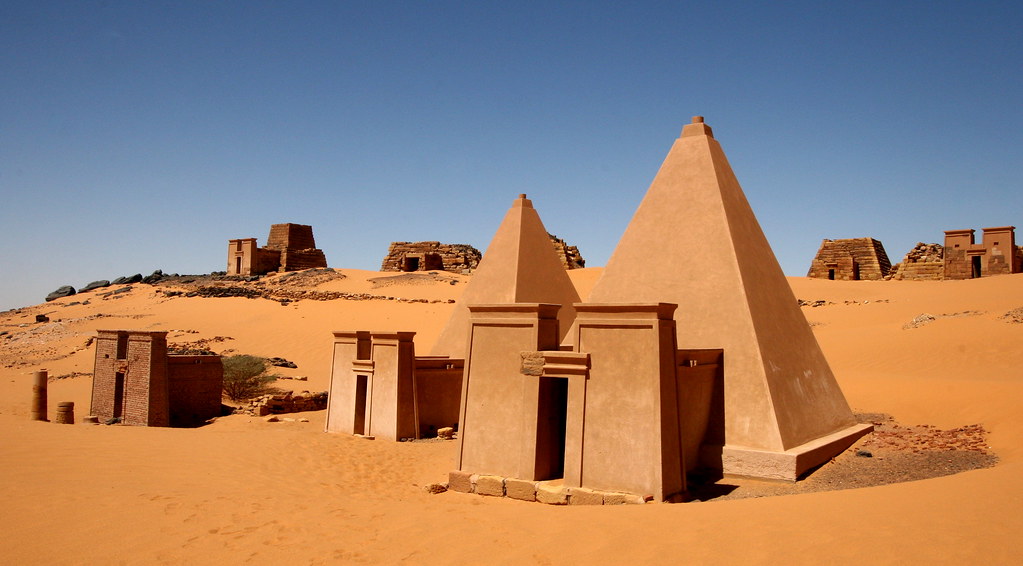
BY LAND OR SEA: You’ll be coming from either Egypt or Ethiopia.
Overland From Ethiopia to Sudan : I was continuing north from Cape Town so I crossed from Ethiopia , the border is Metema/Gallabat – you can easily get a bus from Gondar, Ethiopia to the border (about 4 hours, $3 USD), from there you can get another bus to Gederaf, either sleep there or crack on to Khartoum (another 6 hours or so). There’s not much to see in Gederaf but it’s quite a nice town to acquaint yourself with what’s going on in Sudan.
Overland From Egypt to Sudan : If you’re coming from Egypt the only crossing is by boat or bus, so you need to take the weekly ferry from Aswan on a Tuesday, it drops you in Wadi Halfa in the north of Sudan. You can see how to do that in this blog post .
BY FLIGHT : You’ll fly directly to Khartoum (Turkish Air is your best bet). It’s home to the best hotels, restaurants and guides. From there you can easily daytrip to the Meroe Pyramids too .
You have 5 choices for getting a visa for Sudan:
- Get it in your home country: Normally $100, often need a letter of invitation ( these guys can provide one )
- Get it in Addis Ababa, Ethiopia: $70, 2 passport pics, 1 passport copy, letter of inviation and address of your hotel in Khartoum. Same day.
- Get it in Cairo, Egypt : $150, 2 passport pics, 1 passport copy, letter of invitation and address of your hotel in Khartoum. Next day.
- Get it in Nairobi, Kenya: $55, next day, no special documents like LOI
- Get it in Aswan, Egypt: $150, copy of your passport and Egypt Visa, 2 passport pics. Next day.
Ok, the visas are quite strict on how long you can stay in the country for – mine gave me 2 weeks. Also, to go to certain areas you need specific permits which is a bureaucratic nightmare in itself, to avoid that here are the places I would recommend to visit in Sudan:
Your travel insurance almost definitely won’t cover you when you travel in Sudan. My guys will! Safetywing ( review here ) covers you everywhere, and only $9 a week, get it even if you only switch it on and off when you visit countries that people would deem scary, it covers EVERY COUNTRY IN THE WORLD apart from North Korea and Iran, amazing! GET A DISCOUNT HERE .
I spent about 2 weeks during my trip in Sudan, coming in from Ethiopia, and continuing on to Egypt with the ferry. I think that was a good amount of time, and perhaps even 10 days could have worked. Here are the famous places to visit in Sudan that I’d recommend you don’t miss out on.
Pretty cool city, with it being the capital the amenities you find here are the best in the country. Decent internet, A/C if you’re feeling lavish etc. Try to be there on a Friday, head to Omdurman, and check out Hamad el-Nil Mosque to see an amazing Islamic ceremony complete with camel sacrifice, one of the wildest things I’ve ever seen. Also, ignore the lonely planet’s recommendation about the camel market. Trust me.
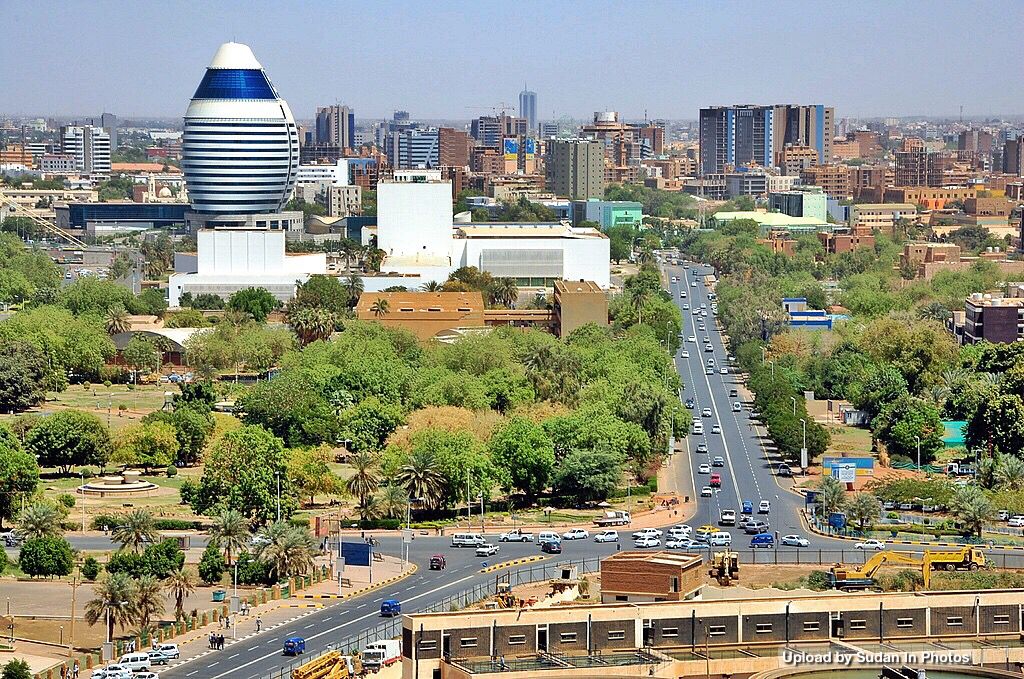
As a city, it’s fairly nondescript but it’s a great base to visit the amazing the Meroe Sites / Begrawiya pyramids. You can get a cab from Atbara to the pyramids and back again for around 100 Sudanese pounds. Check out the full description about the Pyramids of Sudan and how to visit them here
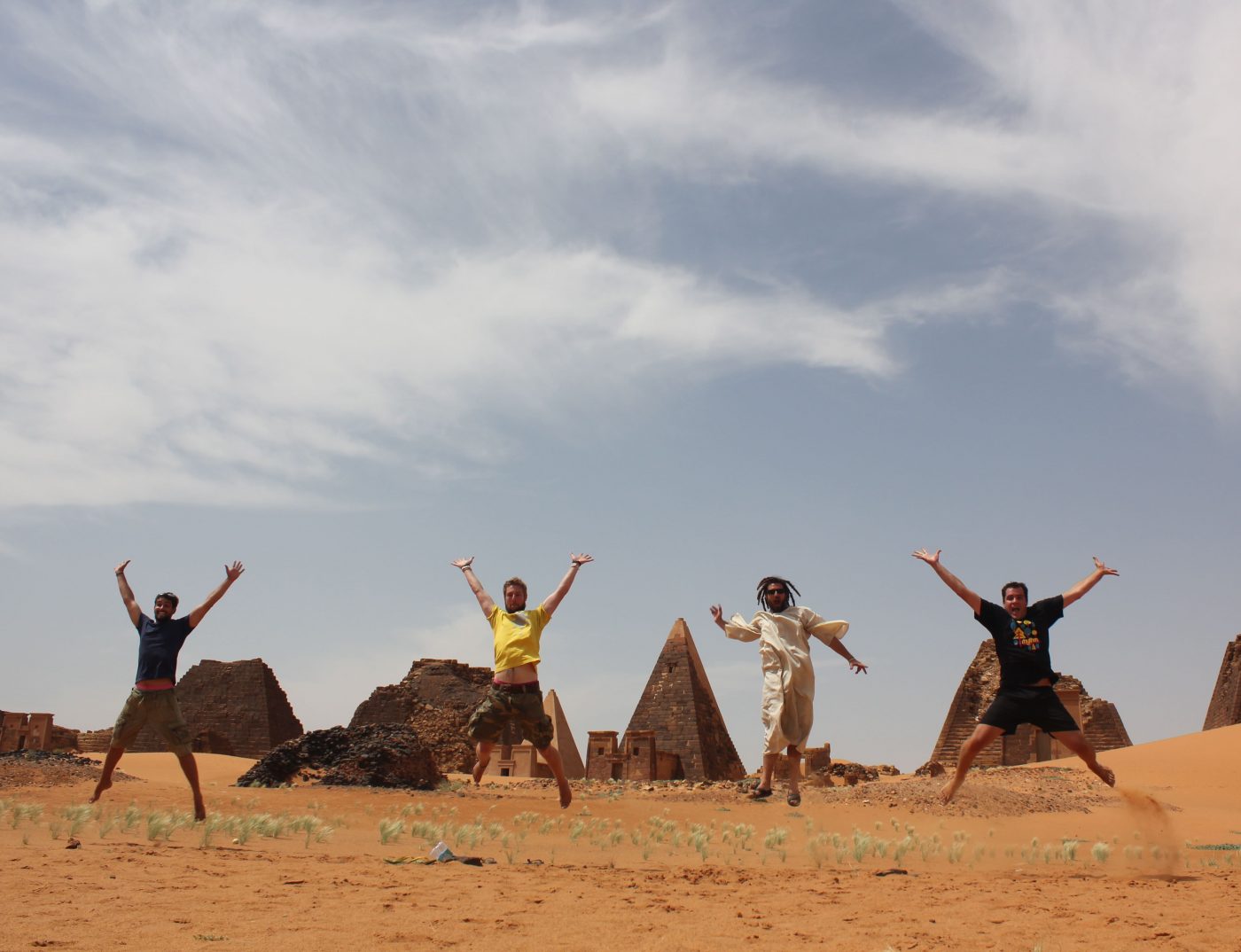
The best diving in the Red Sea apparently, I’ll let you judge for yourself. Regardless, Port Sudan offers a great chance to escape the sweltering heat by jumping in the azure waters and snapping the colourful fish. ALSO, very important – there is a store called Ice Cream Dream (ask anyone, they’ll know) which serves delicious ice cream (3 SP), chocolate and milkshakes, amazing. I recommend you stay at Omiya hotel, complete with air conditioning, and a disgusting squat toilet. The best value you’ll get in Port Sudan, though (25 SP per person).
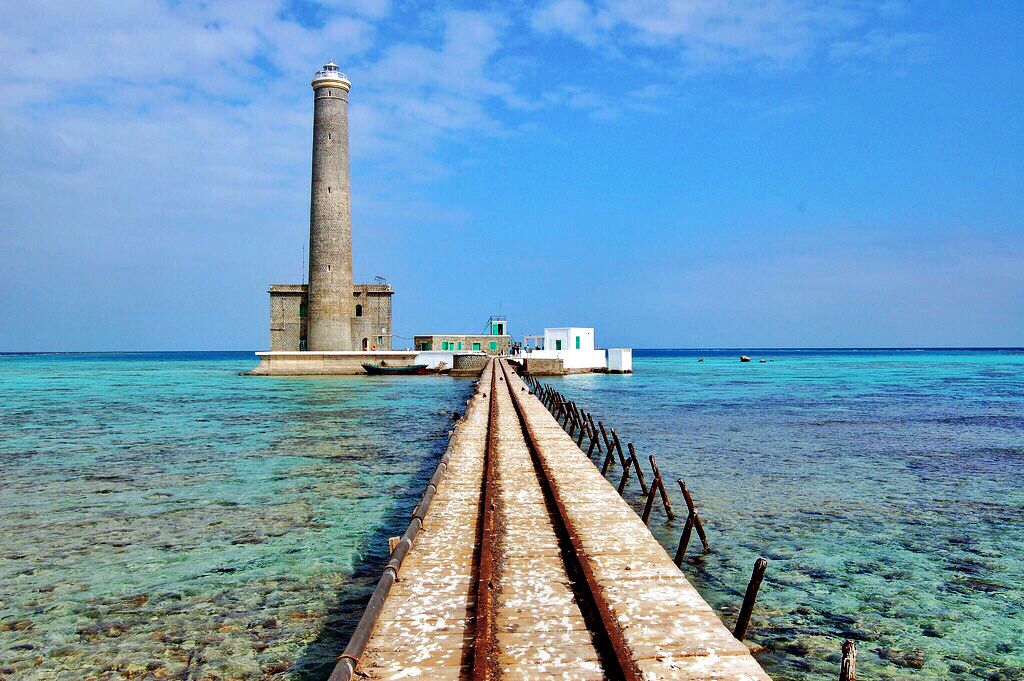
Atypical Sudanese town but again, you’re here for the awesome sites around, not the town itself. There’s only one real hotel ( lokanda ) in town so no doubt you’ll end up there, it’s near the massive satellite dish and the hospital. The reason you come to Karima, is for the second batch of Pyramids. Read about lesser know Sudanese Pyramids here
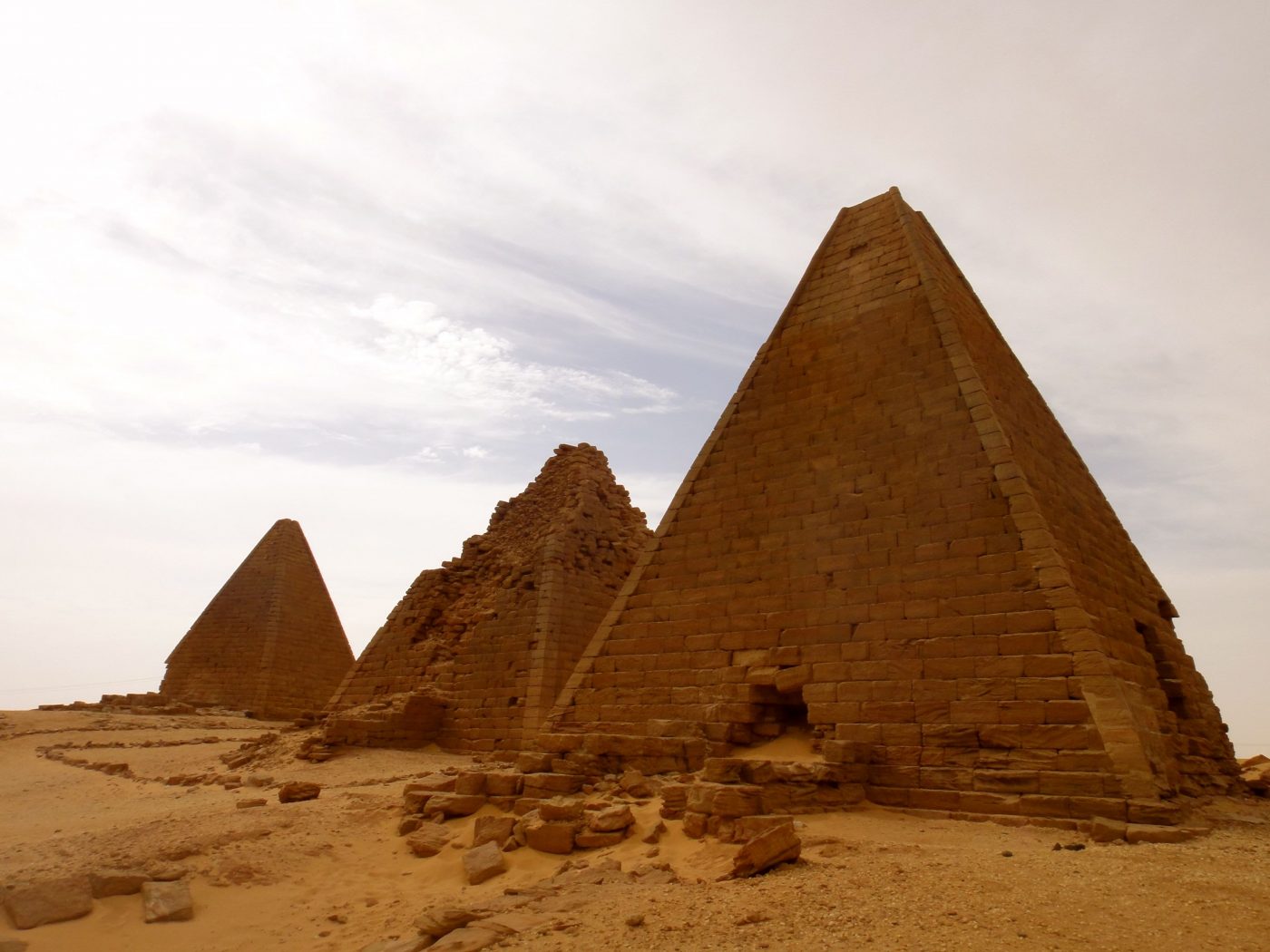
Make sure you visit Old Dongola, home to the Islamic cemetery and temples, NOT modern Dongola, home to very little!
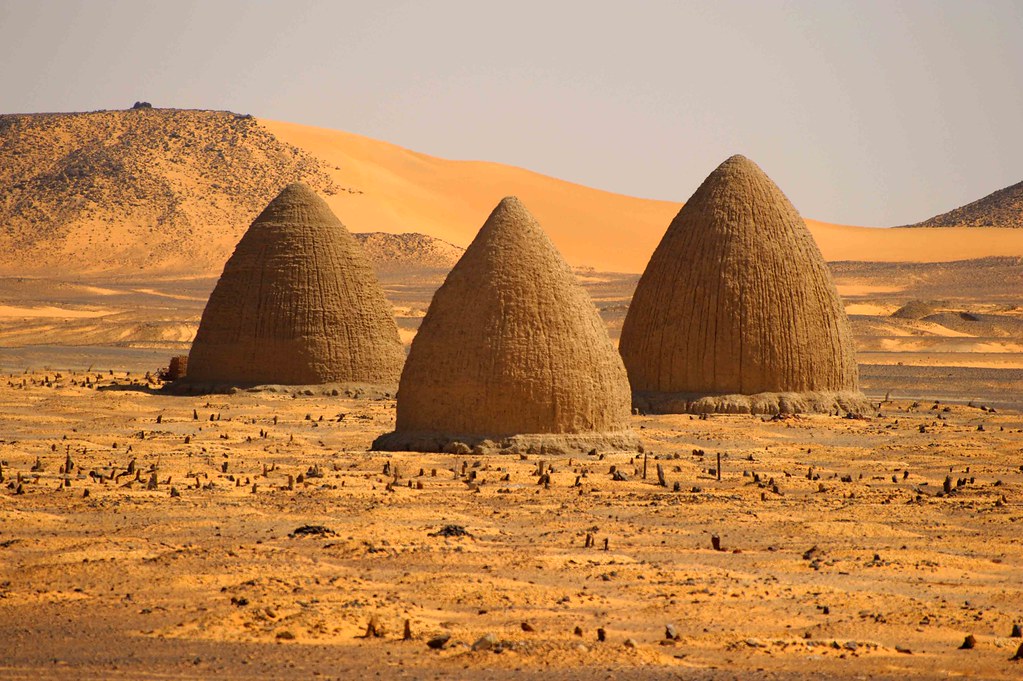
The reason to come here is to take the ultimate method in reaching Egypt, by Sudanese passenger ferry, up the Nile! In effect, Wadi Halfa is a border town but as far as border towns go, this one isn’t so bad. You’ll have to sleep here as you wait for the ferry but you won’t want to stay for more than a night or two. There’s no running water in the city so don’t, like me, go for a run in the heat and come back expecting a nice refreshing shower only to be stared in the face at by a bucket of dingy water and a bottle to put it over yourself with! Remember to check in with the ferry company when you arrive too.
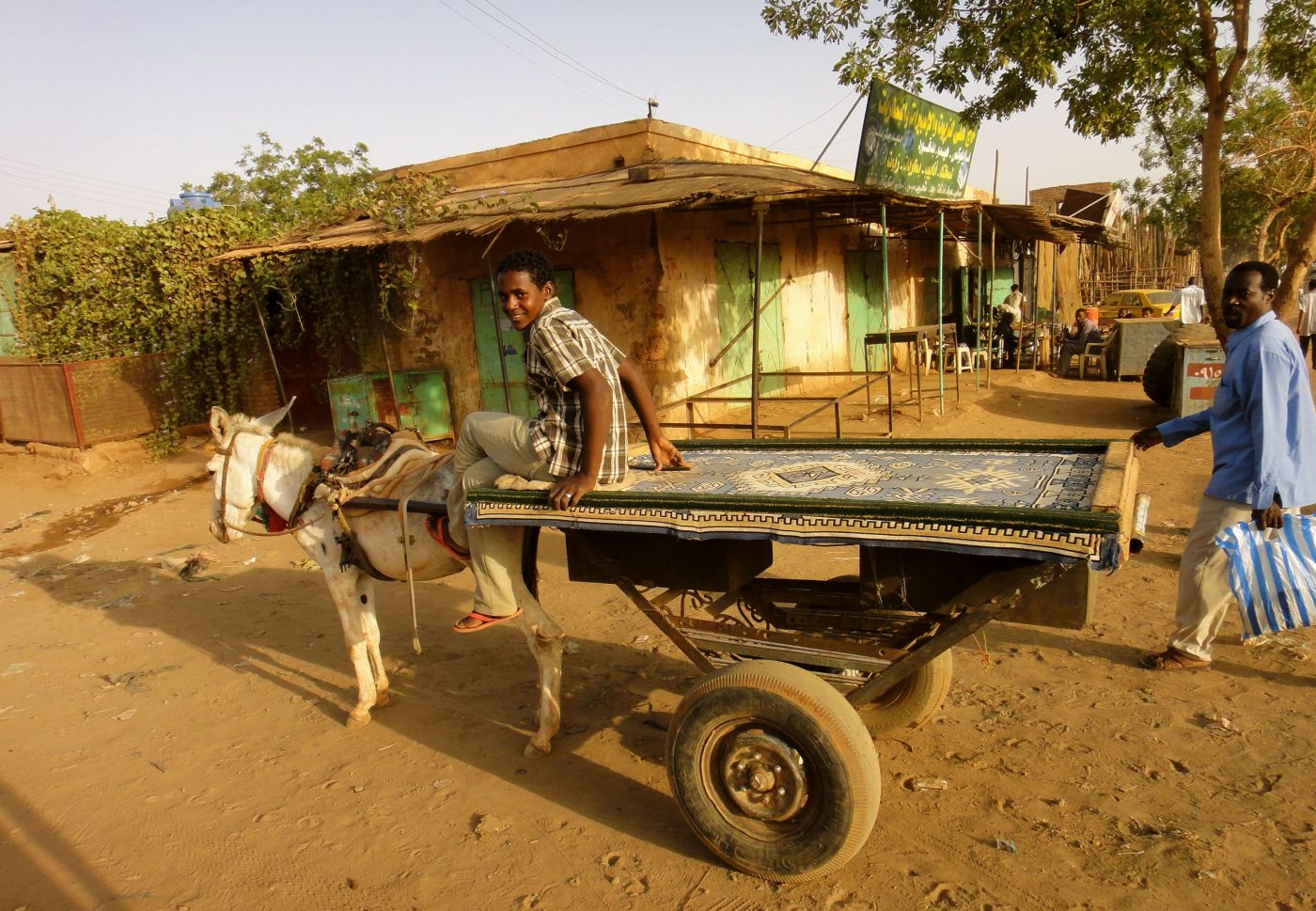
Off the beaten track further still is Kassala, near Eritrea and home to Sudan’s best (only?) day hikes. The town is small, and like much of Sudan outside of Khartoum you may be the only foreigner there this day/week/month/year. The backdrop to the town however is spectacular.
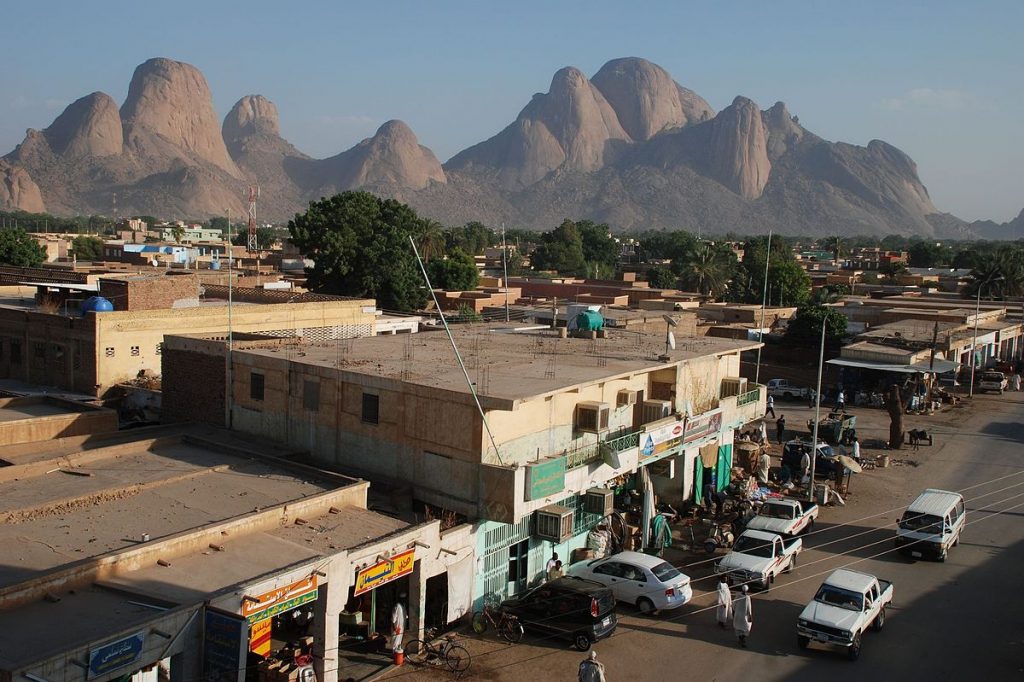
The perfect overland Sudan itinerary, if coming from Egypt to Sudan would be the map below, flip it the other way if you’re coming from the South to the North. And if you’re flying into Sudan, then follow it the same, but remove Wadi Halfa. Easy!
All in all Sudan is a cracking place to backpack, not the decaying war zone that the media portrays, with the nicest people in all of Africa (the world?!). You literally cannot look at someone’s food without them beckoning you over and offering you to join them and eat their food. If, and when, you get into a conversation for more than about 2 minutes with someone you’ll get an offer to go to their house and stay with them until you leave town – amazing place. The Sudanese people are delighted that you have made the effort to visit their country and they rejoice in the fact that you are seeing that their country is peaceful and friendly.
In addition, they sell the most delicious desserts I have come across in the whole of Africa. They are pastry-type sweets, dripping in honey and syrup, similar to baklava. It costs less than $3 USD per kg but be careful, in the 14 nights I spent in Sudan, I ate too much of this stuff on about 10 of them and was in a sugar-induced stupor for a couple of hours each evening.
It’s quite hardcore travel though, so be ready for some rough hotels, and long journeys. But that’s what a real adventure is all about. Enjoy
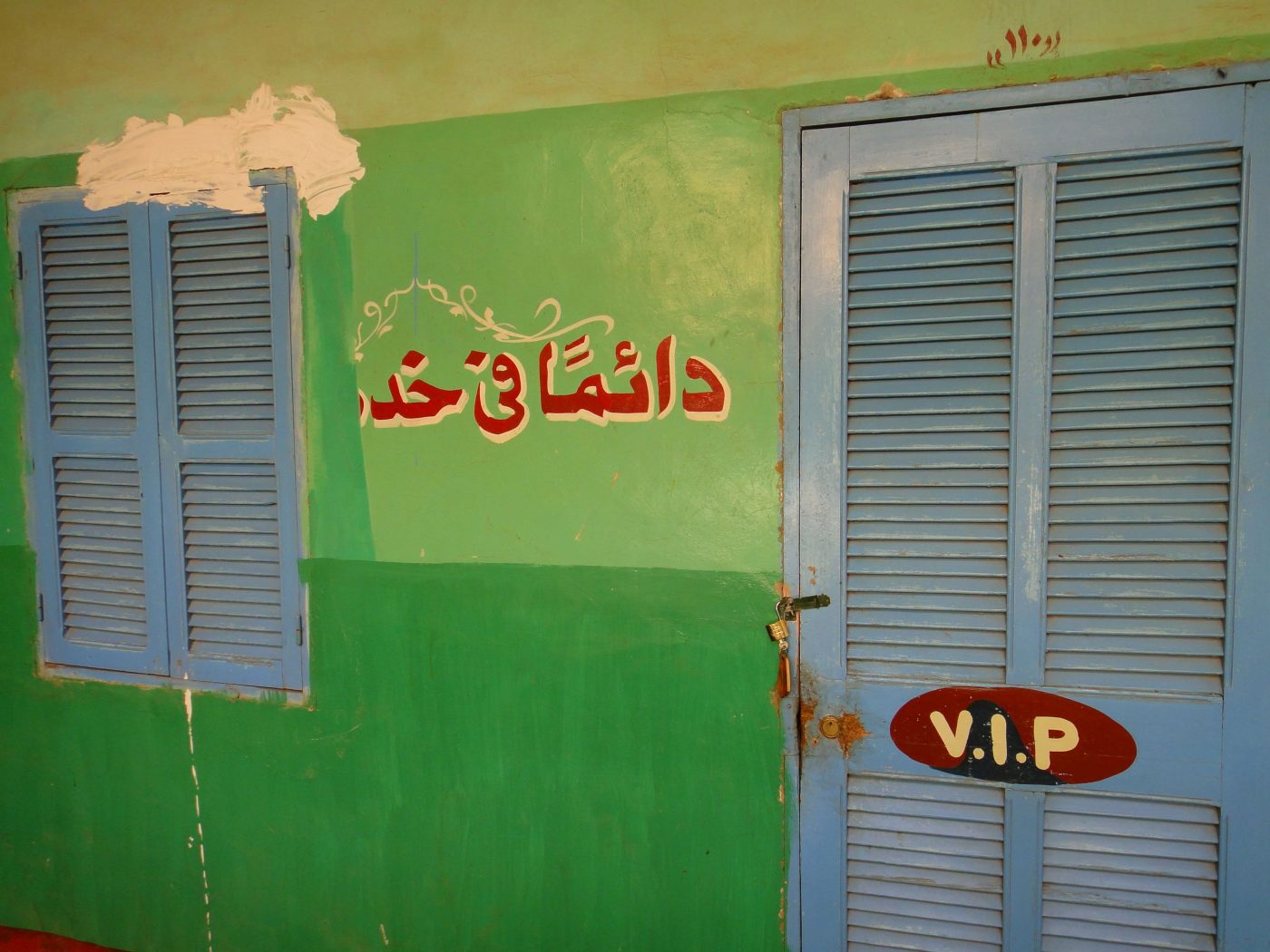
SUDAN TRAVEL GUIDE:
Budget: $25 a day no problem if you need to be careful. Equally, if you want private taxis, higher-end accommodation, then about $100 per day.
Food: You can eat for around $1-$3 USD easily everywhere – their desserts are amazing!
Accommodation: Completely depends on the quality, ranges from basic rooms for $2 to A/C rooms for $15+
Transport: Amazing roads, amazing buses. Roughly $2 per hour on a bus I reckon. So 500km costs around $15 but the buses are A/C with food and drinks. Bargain!
People: You’ll hear this time and time again but really, the Sudanese are super friendly, and delighted you’ve visited their country.
Weather: Unsurprisingly roasting! Easily reaches 40 degrees daily
Religion: Entirely Muslim so dress and act with according to respect. Try not to wear shorts on Fridays (I learned this the hard way)
Currency: Officially $1 USD- 440 Sudanese pounds BUT on the black market you can get 500+ – great business.
Visa: Hmmmmm. Costs, depending on Nationality, between $20-$40. Not as hard these days as people let on. Easily obtained in Ethiopia, Uganda and Kenya. You HAVE to get your Egyptian visa first though (can take up to 3 weeks so prepare in advance) so make sure you do leave enough time for that. British nationals need to get a letter of invitation from their embassy. It takes 5 minutes and costs around $90, a disgusting ripoff but nothing we can do. Normally you can pick up your Sudanese visas the next day.
Remember, never travel without travel insurance! And never overpay for travel insurance!
I use HeyMondo . You get INSTANT quotes. Super cheap, they actually pay out, AND they cover almost everywhere, where most insurance companies don't (even places like Central African Republic etc!). You can sign-up here . PS You even get 5% off if you use MY LINK ! You can even sign up if you're already overseas and traveling, pretty cool.
Also, if you want to start a blog...I CAN HELP YOU!
Also, if you want to start a blog, and start to change your life, I'd love to help you! Email me on [email protected]. In the meantime, check out my super easy blog post on how to start a travel blog in under 30 minutes, here! And if you just want to get cracking, use BlueHost at a discount, through me.
Also, (if you're like me, and awful with tech-stuff) email me and my team can get a blog up and running for you, designed and everything, for $699 - email [email protected] to get started.
Do you work remotely? Are you a digital nomad/blogger etc? You need to be insured too.
I use SafetyWing for my digital nomad insurance. It covers me while I live overseas. It's just $10 a week, and it's amazing! No upfront fees, you just pay week by week, and you can sign up just for a week if you want, then switch it off and on whenever. You can read my review here , and you can sign-up here !
So if you’re ready to…..
1) change your life 2) travel the world 3) get paid to travel 4) create a positive influence on others 5) be free of offices and ‘real world’ rubbish, then sign up below and let’s get started, previous post witnessing a camel sacrifice in sudan, next post volunteering in cambodia; responsible travel & how we did it, follow me on instagram @onestep4ward.

Popular Posts
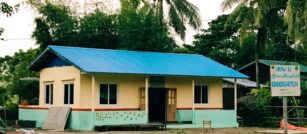
How I donated $300,000 Thanks to My Blog
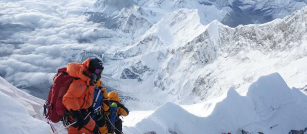
Climbing Mount Everest – Everything You Need to Know from My Experience. Costs, Difficulty Etc

Rowing Across the Atlantic Ocean; My Experience
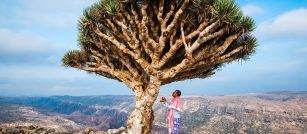
JOIN MY TOUR TO SOCOTRA – April 2024

How To Start A Travel Blog in 2024
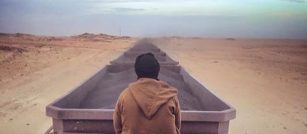
Riding the Iron Ore Mauritania Train across the Sahara Desert
Juicy links.
- About Johnny
- Central Asia
- Destinations
- Getting Started with One Step 4Ward!
- Join a Trip
- My Partners
- One Step 4Ward Blog
- Privacy Policy
- Public Speaking
- Thank you for ordering!
- Travel Resources
- Waiting List
- Where I’ve Been…
- Travel Tips
- My Lifestyle Design
- Travel Bucket Lists; A List of travel things to do before you die!
- Inspirational Quotes
Thanks for deciding to subscribe to my blog, it means a lot to me that people trust a normal guy from Ireland.
You should be proud you’re taking a new step to changing your life.

I talk about how I did it, and how you can do it too, in my COMPLETELY FREE Ebook , all 20,000 words or so. Just finish the process by putting in your email below and I’ll mail it right out to you immediately. No spam ever too, I promise!
Take ownership. Take action, and remember
“If you don’t build your dream, someone will hire you to help build theirs”

Adventures in Destinations Unknown
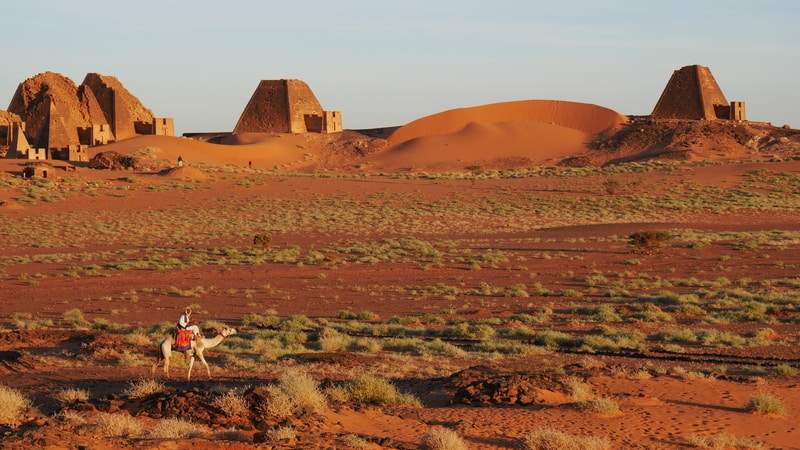
Tourist Attractions in Sudan: Africa’s Nubian Kingdom
Last modified on June 9th, 2020 at 17:13
Over the past few decades, Sudan has made headlines for all the wrong reasons. As a result, the country’s name often conjures images of bloodshed and brutal dictatorships, while its wealth of treasures have been all but ignored. Most people are not even aware that, beneath Sudan’s shifting grains of sand, lie remnants of an empire that once rivaled Ancient Egypt. Or that the country contains more pyramids than any other place in the world.
Sudan offers an unexpected array of things to do, places to see, and experiences to be had. It is a country that boasts tremendous attractions, heaps of natural beauty, and a population that is among the friendliest in the world.
Sure, traveling in Sudan is not for the inexperienced adventurer. Obtaining a visa can be tricky and confusing. Hotel booking websites are largely inaccessible. Information on the tourist attractions in Sudan is scant, at best.
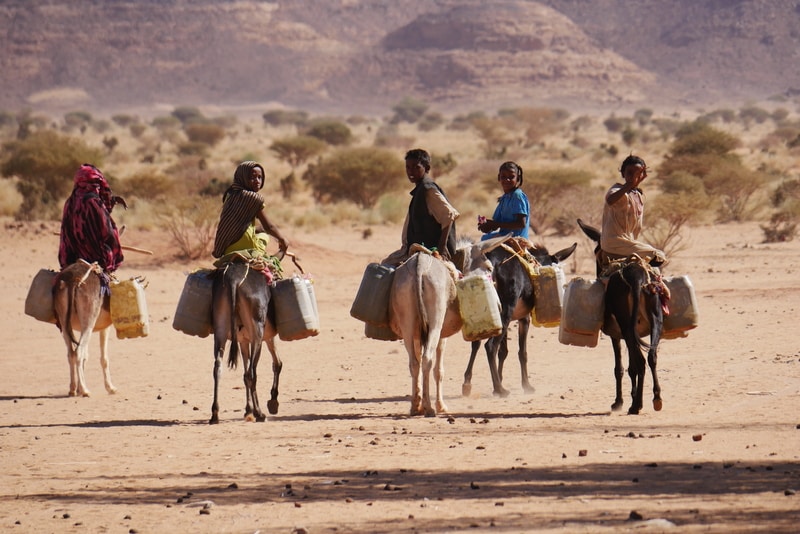
But with a little effort, the vast swath of land flanking the Upper Nile is a wonderland for intrepid adventurers. It is a country that is as welcoming as it is challenging, and as beautiful as it is undiscovered.
Table of Contents
TRAVEL IN SUDAN: AN OVERLAND ADVENTURE
Dan and I traveled to Sudan as part of a larger Egypt vacation. We combined the two countries into one trip because of their inextricably linked histories. Creating a comprehensive Egypt and Sudan itinerary would give our trip continuity and allow us to trace Egyptian Civilization throughout ancient history.
Our itinerary began with the Pyramids of Giza , and continued on a Nile cruise —past Luxor and Aswan—to Abu Simbel. From there, we returned to Cairo and flew to Khartoum for the Sudanese part of our Nile-side adventure.
Due to the offbeat nature of Sudan’s tourist attractions, we chose to explore the country on an overlanding tour with Dragoman. I’d traveled with Dragoman previously, on a three week tour through Togo , Benin and Ghana . In doing so, I’d learned how valuable it is to have someone plan the tricky logistics associated with traveling to off-the-beaten-path destinations in Africa .
With its limited infrastructure for independent travel, Sudan is no exception.
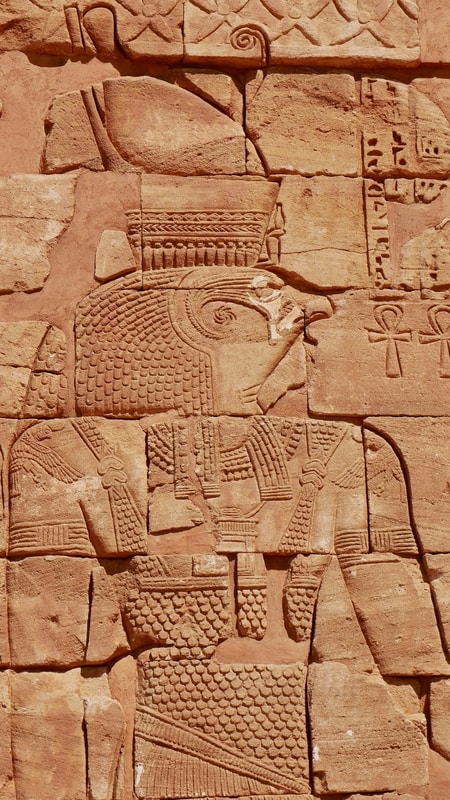
In order to facilitate our travels in Sudan, Dragoman took care of obtaining our Sudan visa invitation letter, setting up visa on arrival at the airport, and completing the registration process. It also allowed us to visit the top tourist attractions in Sudan without having to worry about navigating the roads, figuring out public transportation, or choosing places to wild camp.
TOP SUDAN TOURIST ATTRACTIONS
Sudan is a country replete with things to see. Its tourist attractions include fascinating urban delights, natural landmarks, and the long-lost relics of ancient civilizations. Our eight day overlanding tour with Dragoman began and ended in Khartoum. Along the loop, it brought us to many of the top places to visit in Sudan—including the spectacular massif of Jebel Barkal, the solitary Temple of Soleb, the elaborate carvings of Naqa and Musawwarat, and the majestic Pyramids of Meroe.
THE OLD KINGDOM OF DONGOLA
After an orientation day in Khartoum, we hopped on our big orange tour truck and headed northward, into the reaches of the desert. The first stop on our Sudan itinerary was the deserted town of Old Dongola, halfway between Khartoum and the Egyptian border. Old Dongola lies at the center of Sudanese Christian tradition. It was once an important city in Medieval Nubia and the capital of the Makurian State.
For about an hour, we walked atop a blanket of pottery shards that probably should have belonged in museums, and admired ruins that once represented basilicas.
The Throne Hall of Old Dongola dates to the 5th century, though many of the city’s remaining structures are the product of subsequent generations. A 17th century Islamic cemetery with beehive tombs is a testament to the importance of Old Dongola in post-Medieval times as well.
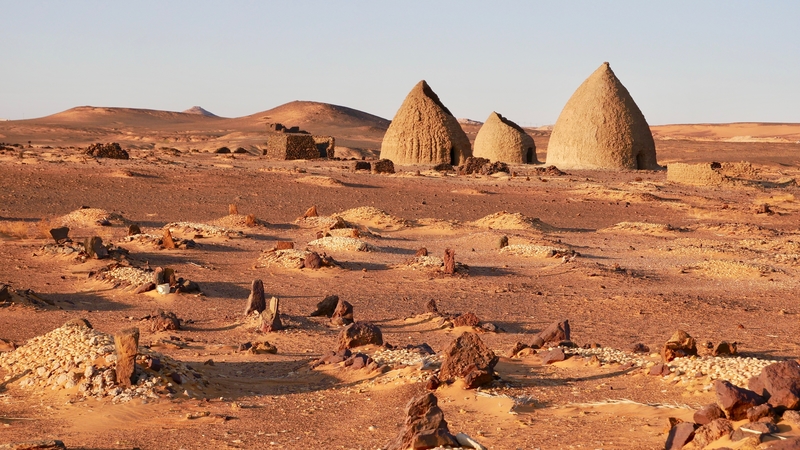
Visiting Old Dongola may be one of the top things to do in Sudan, but we did not encounter any other tourists during our tour. The archeological site was completely deserted—like an abandoned ghost town that has been completely neglected by the world at large.
THE KERMA ARCHAEOLOGICAL SITE
The second day of our Sudan tour brought us back in time, to the beginnings of the Kushite Kingdom. Kush is a Nubian land that lies between the first and fourth cataracts of the Nile, in modern-day Sudan. The legendary Kingdom of Kush helped define the political and cultural landscap of northeastern Africa for more than a thousand years.
The Ruins of Kerma are remnants of an the early Kushite Kingdom that ruled Nubia between 2450 BC and 1450 BC. The ancient city’s sprawling ruins center around a large adobe temple known as the Western Deffufa.
From the top of the ancient structure, a blueprint of the city stretches toward a forest of palms on the banks of the River Nile.
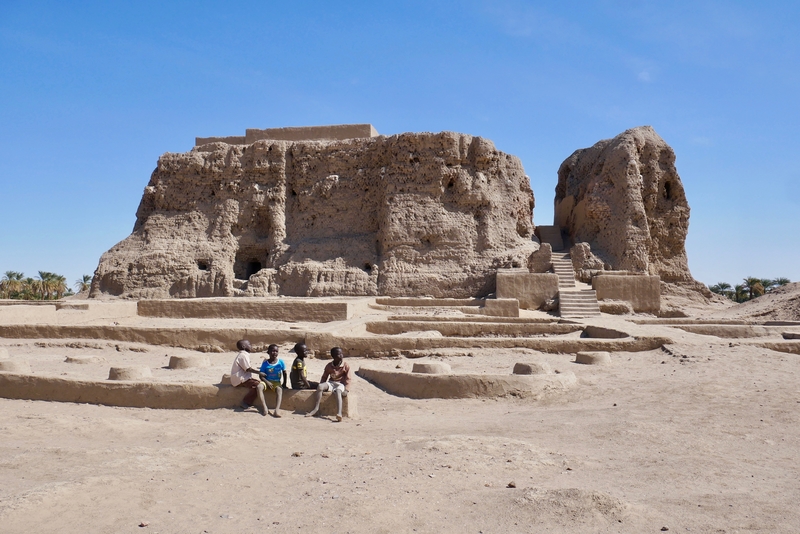
Kerma is one of the largest archaeological sites in ancient Nubia. It has produced decades of extensive excavations and research.
Today, aside from lumpy remnants of the Western Deffufa and the delineated markings of old living quarters, not much remains of Kerma’s once-powerful city.
Still, it is a fascinating place to visit and a testament to the little-known wonders that lie lost amongst the vast expanses of Sudan’s desert.
THE TEMPLE OF SOLEB
After visiting the remnants of the Kerma Kingdom, we continued toward the village of Wawa in time for nightfall. There, we settled into a small guesthouse and prepared for a sunrise visit to the Temple of Soleb the following morning.
To reach the Temple of Soleb from Wawa, we walked to the shores of the Nile through a groves of palms, took a small boat across the river, and made our way past cultivated fields of beans and wheat. When we reached the confines of the archeological site, we found a place to sit and watch the sun illuminate the temple’s rose-hued columns.
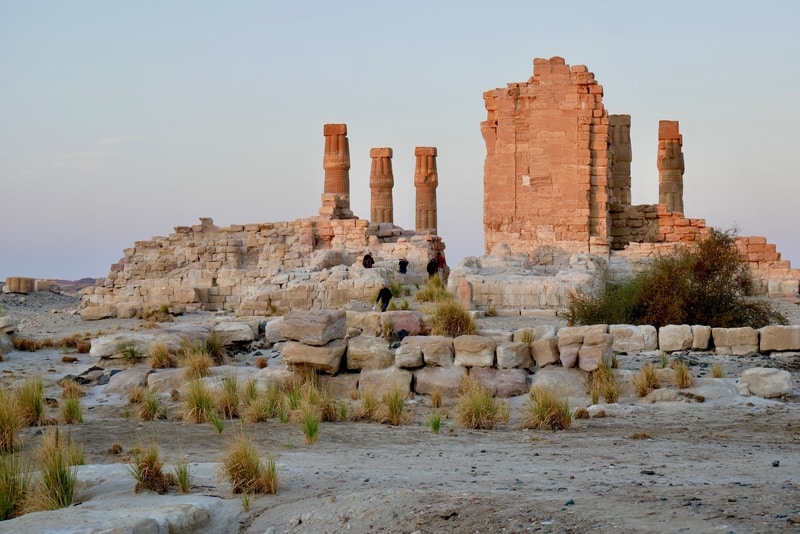
The Temple of Soleb is the southernmost temple built by eighteenth dynasty Pharaoh Amenhotep III—the builder of the extraordinary Temple of Luxor in Egypt. It may be much more modest than its Egyptian counterpart, but Soleb’s comparative isolation makes it nonetheless evocative and magical.
Like most other tourist attractions in Ancient Egypt and Nubia, the Temple of Soleb sits on the banks of the Nile, where fertile palm groves give way to the desolation of the desert.
I imagine that reaching the Temple of Soleb is quite difficult without an organized tour or rental car. Despite being one of the top tourist attractions in Sudan, the Soleb Temple has no public transportation links and draws only a small trickle of tourists every year—making it all the more special for those who choose to make the haul.
THE NURI PYRAMIDS
Everyone has heard of the Pyramids of Egypt . The mighty ancient wonders are emblazoned on travel brochures, impressed on the imaginations of young scholars, and at the forefront of many travel bucket lists. Yet, few people know that Egypt only contains a small percentage of the ancient Pharaonic structures. In fact, Sudan claims dozens—if not hundreds— more pyramids than Egypt.
Situated near Jebel Barkal, the Nuri Pyramids are among the most impressive of their kind in Sudan.
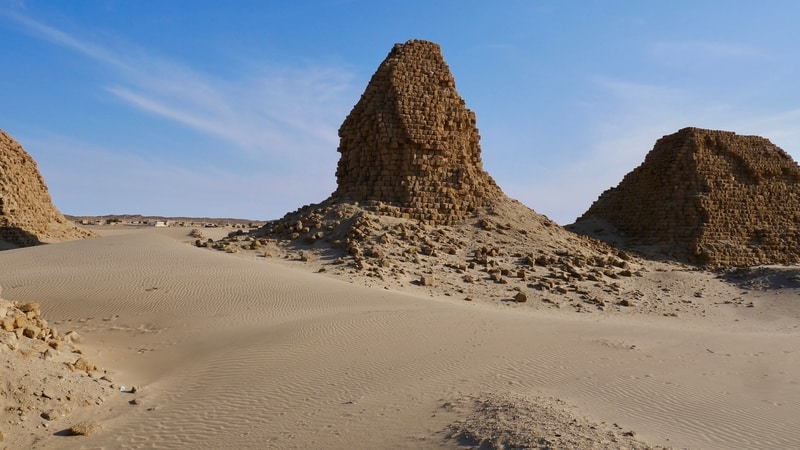
We explored the Nuri Pyramids on the third day of our Sudan tour, following a sunrise visit to the Temple of Soleb.
The dilapidated Pyramids of Nuri—among the largest in Sudan—lie scattered amidst low-lying sand dunes. Dating from around the 7th century BC, they are the oldest and largest pyramids in Ancient Nubia.
We spent about an hour clambering around the archeological site and admiring the unobstructed views of its age-old treasures.
Once again, a lack of other tourists made our experience all the more surreal.
JEBEL BARKAL
From afar, Jebel Barkal is a nondescript lump of earth that rises above the sandy plains of north-central Sudan. Yet, upon closer examination, the sacred mountain reveals its magic.
Visiting Jebel Barkal is, without a doubt, one of the top things to do in Sudan. The sacred mountain boasts unparalleled views of the Nile River and its nearby pyramids and temples. And beneath its towering massif, it conceals the ruins of an ancient temple that has been consumed by the elements and nearly lost in time.
Following an afternoon visit to the Nuri Pyramids, our tour group scrambled to the top of Jebel Barkal for sunset.
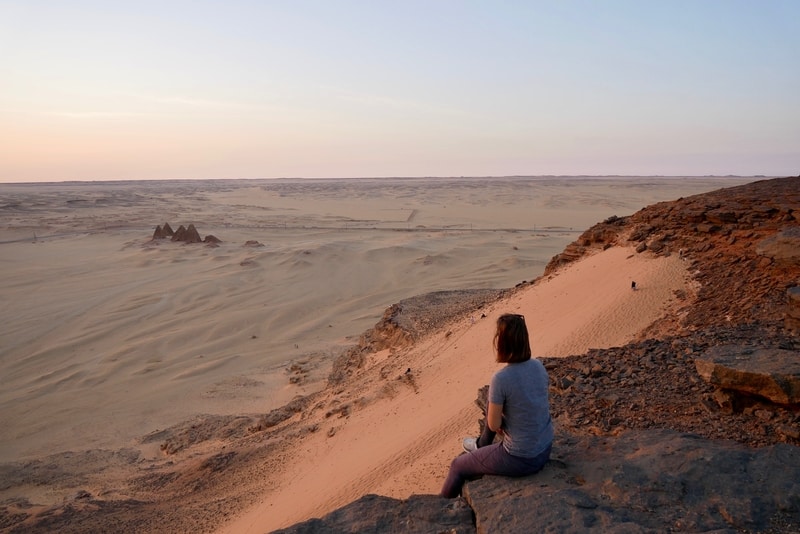
I’m not sure what I expected of Jebel Barkal, but I certainly didn’t imagine it to be such a prominent highlight of our itinerary. Photos I found online did little justice to the area.
From its summit, surreal 360 degree panoramas took our breaths away. We could see a small pyramid grouping on one side, and unparalleled views of the Nile River and Amun Temple on the other.
In 2003, the mountain (in conjunction with the historical city of Napata) was named a UNESCO World Heritage Sites. I can certainly understand why.
THE TEMPLE OF AMUN AT JEBEL BARKAL
The Napatan Ruins of Jebel Barkal represent the southernmost permanent settlement in the New Kingdom of Egypt. They are the main Nubian cult centre of the god Amun and were once of great importance to the Kushite Kingdom.
Napata was an ancient Nubian city, at the site of modern-day Karima. The entire complex encompasses both the Nuri Pyramids and the Temple of Amun at Jebel Barkal.
The Nubian king Piye expanded Barkal’s Amun temple complex, creating a southern version of the Amun temple at Thebes (near Luxor in modern-day Egypt).
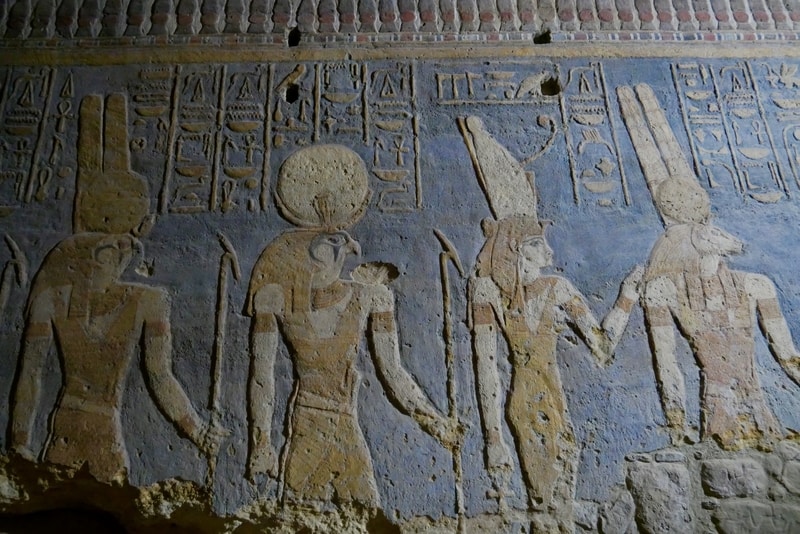
Today, the great Amun Temple of Jebel Barkal lies largely in ruins. A few piles of rocks lies scattered about, and some statues of rams remain relatively well-preserved.
A small temple dedicated to Mut lies adjacent to the Amun Temple. The Mut temple contains two pillars adorned in carvings of the cow-headed goddess Hathor.
After about half an hour of exploring the area, our guide tracked down the keys to a small hidden chamber that lies hewn inside the rocks of Jebel Barkal, behind Mut’s temple. When we entered inside, we were wowed by the vivid and colorful depictions of Egyptian gods. We felt privy to a secret world that few know exist.
It was incredibly special.
THE MEROE PYRAMIDS: SUDAN’S TOP TOURIST ATTRACTION
The Meroe Pyramids are, without a doubt, the top place to visit in Sudan. They are a mainstay of nearly every Sudan itinerary, and among Africa’s most impressive archeological sites. The Meroe Pyramids are a group of roughly 200 structures that are over 2,500 years old. Though smaller than the Great Pyramids of Giza and Dashur, the Pyramids of Meroe lie beautifully situated among low-lying dunes of blood-red sand.
The site’s 200 pyramids have varying levels of preservation. Most pyramids have no tops, thanks to an Italian treasure hunter who blew them off in the 19th century in order to loot their tombs for buried valuables.
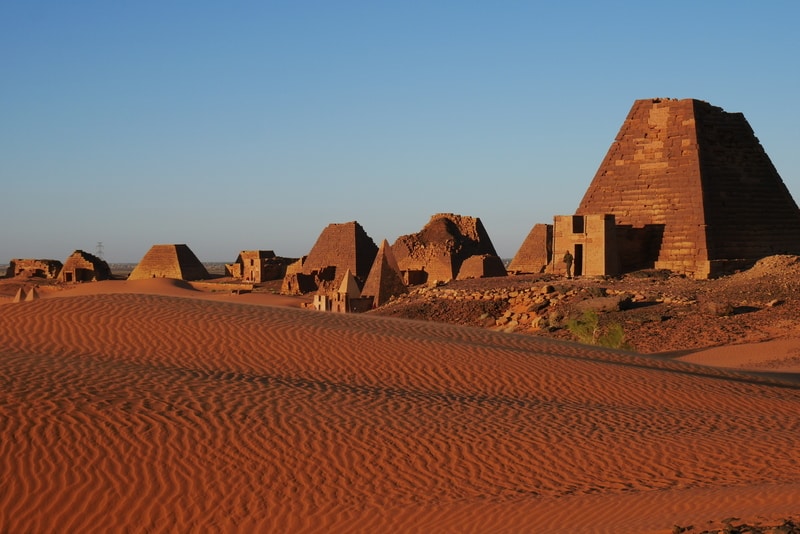
Our group set up camp near the gates of the Meroe Pyramids Archeological Site, just over the dunes from the area’s main cluster of temples. The landscape surrounding our camp consisted of purple-hued hills, interrupted by a snaking sea of orange sand.
Despite the fact that the Meroe Pyramids are Sudan’s only well-established archeological site, we had the entire area to ourselves during our early-morning visit. For over an hour, we watched the sun rise above the majestic ruins and paint the surrounding landscape in warm shades of pastel.
It was surreal. Enchanting. Magical.
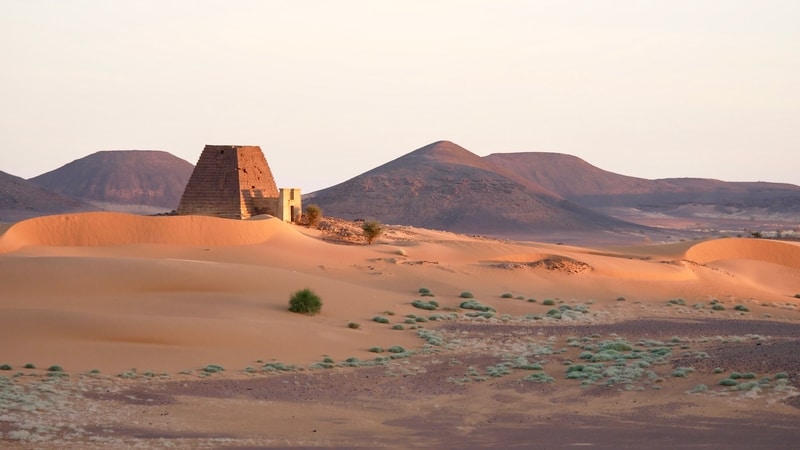
We visited the Meroe Pyramids on my 30th birthday. I couldn’t have asked for a more striking and memorable location to celebrate three decades on Earth.
THE MUSAWWARAT ES SUFRA TEMPLE
Musawarat es Sufra is the largest Meroitic temple complex in Sudan. Constructed in sandstone, the site’s main features include a Great Enclosure and a Lion Temple.
Though it resembles the temples of Egypt in many ways, Musawwarat es Sufra has distinct influences that are wholly unique to Sudanese temples. Most significant are the representations of elephants and other wild animals that once roamed around this region of Africa.
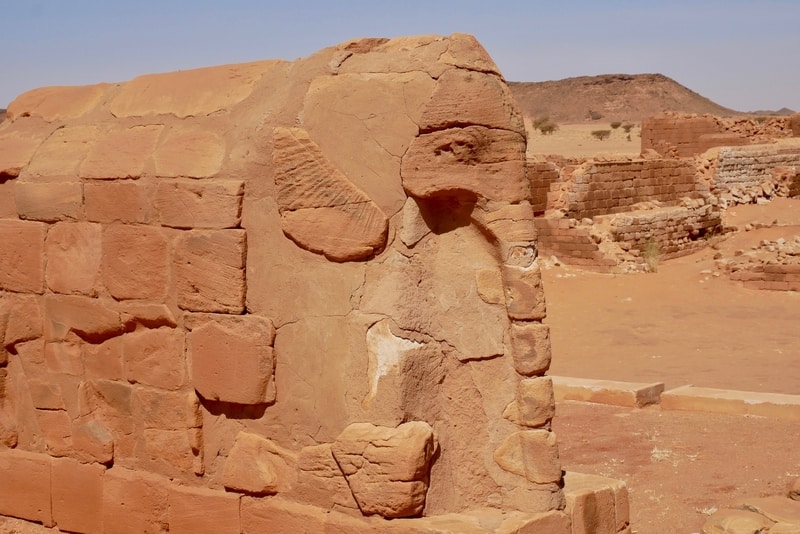
The engravings of lions, elephants and giraffes made Musawwarat es Sufra’s Great Enclosure one of the more interesting temples we saw during the entirety of our trip through Egypt and Sudan.
Situated a few hundred meters away from the Great Enclosure, the intricately-carved Lion Temple of Apedemak dates to the 3rd century BC. Its ornate reliefs are remarkably well preserved.
THE NAQA TEMPLE
Like Musawwarat es Sufra, Naqa lies in the heart of the Sudanese Desert. Its location away from the Nile makes it unique among the temples of Ancient Egypt and Nubia.
The Naqa archeological site consists of a large and well-preserved Temple of Amun that dates back to the first century BC. Notable features include a Hypostyle Hall with splendid columns and hieroglyphics, and a row of statues representing rams (reminiscent to those at the Karnak Temple in Luxor).
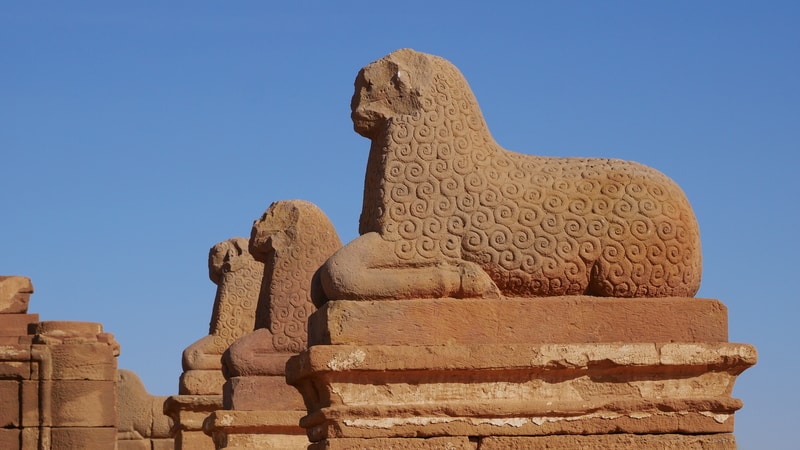
Another small Lion Temple lies within walking distance of the Amun Temple at Naqa. It has some of the most incredible exterior carvings of any place that we visited during our month in North Africa.
Adjacent to the Lion Temple, a stunning Roman kiosk boasts Hellenistic elements and floral embellishments.
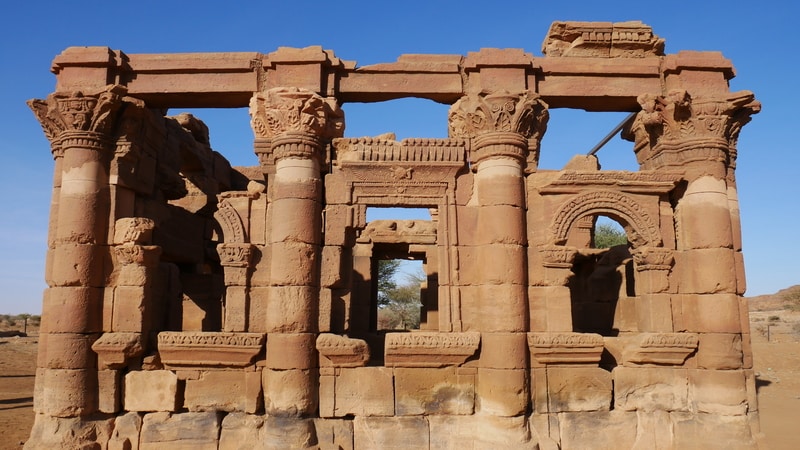
Since there is so little travel literature on Sudan, I really didn’t know what to expect of the country’s Nubian temples. I hadn’t seen pictures of Musawwarat and Naqa prior to visiting, nor did I even know they existed.
I simply booked a tour to Sudan and let myself be slowly blown away by the unexpected magic that lies deep in the reaches of the Sahara.
KHARTOUM: SUDAN’S CAPITAL CITY
Our Sudan travels began and ended in Khartoum. So, at the tail end of our week-long adventure, Dan and I dedicated a day and a half to the country’s bustling capital city.
Khartoum isn’t exactly a beautiful city in the classical sense of the word. It is dusty and sprawling, and relatively lacking in things to see. Yet, situated at the confluence of the Blue and White Niles, Khartoum defies expectations with its pleasant atmosphere, laid-back vibe, and friendly residents. The city’s excellent museum, its fascinating markets and its idyllic Nile-side views make it a relaxing antidote to the hubbub of some of Africa’s other large metropolises.
- THE SUDAN NATIONAL MUSEUM
With limited time in Khartoum, visiting the Sudan National Museum should be a top priority. Though the museum’s collection of artifacts pales in comparison to that of Cairo’s Museum of Antiquities, its exhibits paint a picture of Nubian Civilization that I doubt can be rivaled anywhere else in the world.
Outside of the museum’s main enclosure, the three reassembled Nubian temples are some of the country’s finest architectural gems.
- THE FRIDAY SUFI GATHERING
You won’t see many tourists wandering the streets of Khartoum on a daily basis. But during the weekly Sufi ceremony that takes place every Friday, they all seem to emerge from the shadows.
On our last day in Sudan, we headed to to the Omdurman neighborhood of Khartoum for an opportunity to witness the Sudanese whirling dervishes.
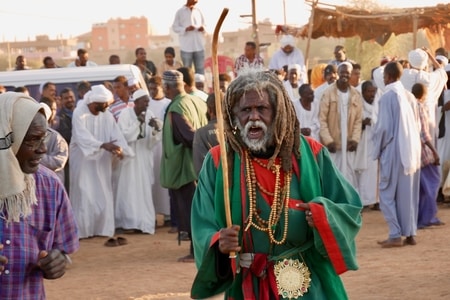
Each Friday afternoon, at around 4pm, adherents of Sufism gather to dance and pray—attracting large crowds of observers and participants. Since the procession draws more tourists than just about anything else in Sudan, it also attracts large numbers of Sudanese youth hoping to improve their English.
The gathering isn’t exactly what one might expect of a typical whirling dervish ceremony, but the procession and chanting of red-and-green-clad faithfuls is a fascinating spectacle nonetheless.
- THE KHARTOUM CAMEL MARKET
On the morning of our departure from Khartoum, Dan and I chose to travel to the outskirts of the city in search of the sprawling camel market that takes place twice a week. Every Wednesday and Saturday, hundreds of people travel to Khartoum’s outskirts for what I can only assume is one of the world’s great camel markets.

Reminiscent to the livestock market in Karakol Kyrgyzstan, it is a place in which vendors and buyers converge to barter for the finest animals in the area.
- THE CONVERGENCE OF THE BLUE AND WHITE NILES
The great Nile River sustains life in one of the harshest habitats on earth. Since Khartoum lies at the convergence of the Blue and White Niles, its location provides an opportunity to witness the place in which two tributaries combine to create the longest river on Earth.
Though I wouldn’t prioritize it over a visit to the Sufi gathering or museum, a boat trip up the Nile is worthwhile for those who have the time.
Traveling to Sudan had been on the back of my mind since I first laid my eyes on a photo of the Meroe Pyramids.
I don’t know what it was about the photo that left me breathless, but I can only assume it had to do with the fact that such a remarkable wonder of the world remains largely secret. I knew I would find a way of visiting, safety permitting.
Traveling in Sudan is by no means easy or straightforward. The visa hassle alone discourages many travelers from setting foot on the country’s sandy soil. Add that to Sudan’s lack of public transit infrastructure, its elevated position on most travel advisory lists, and its lackluster accommodation options. It is no wonder so few people choose to visit.
Yet, Sudan and its people deserve more credit than they receive. The country is safe, beyond hospitable, and replete with jaw-dropping tourist attractions.
For adventurers willing to put in a little extra effort, the rewards of seeing some of the world’s greatest wonders without anyone else in sight, are truly indescribable.
________________
Did You Enjoy this Guide to the Top Tourist Attractions in Sudan? Pin It!
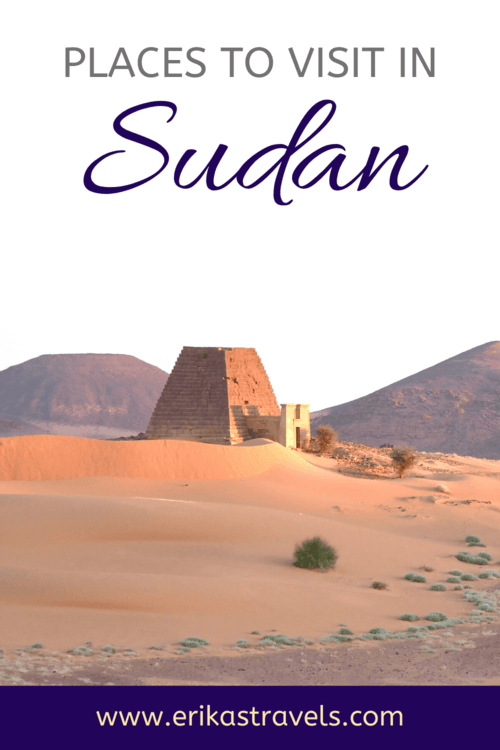

Why Should You Visit Sudan? Plus A 7 Day Sudan Itinerary
This is a country very unlike most of Africa and mostly off the tourist trail. If you really want an incredibly different and peaceful trip in Africa, I recommend a visit to Sudan . Read on to discover why!
Sudan has gone through a big transitional period in recent years and you might be wondering if it’s ok to visit Sudan. President Omar al-Bashir was ousted from power on 11 April 2019 after 30 years in charge. The country was stable for a period but unfortunately it slipped into civil unrest.
2024 update: At the moment the civil unrest means it is unsafe to visit Sudan and it is marked as red on the FCO website. However, hopefully this will change in the future and Sudan can begin welcoming tourists once again. (See https://www.gov.uk/foreign-travel-advice/sudan for latest advise)
Here are my top 3 reasons to visit Sudan along with some things to consider before you go.
Disclaimer: Some links in this article are affiliate links, which means that if you purchase through them I receive a small commission, at no extra cost to you. Thanks for your support!
Why Visit Sudan?
1. the people.
Sudanese people are incredibly friendly, helpful and generous. During our visit at the end of March 2019, upon crossing the border from Ethiopia we went to immigration to get our passports stamped. We were told we could get our passports registered for a fraction of the price agents charge in Khartoum so we went ahead told them to do it.
Just as they were about to start, a gentleman came in carrying a huge plate of food. The passport control officer then told us to come behind the desk and join all the workers in the office for for their breakfast meal – a mutton stew with freshly baked bread – delicious.
I tried to be polite and not take too much but the chief told me off for not eating enough, so I dutifully got stuck in with everyone else!
After breakfast our passports were stamped, visas registered and we were on our way. What a welcome to the country!
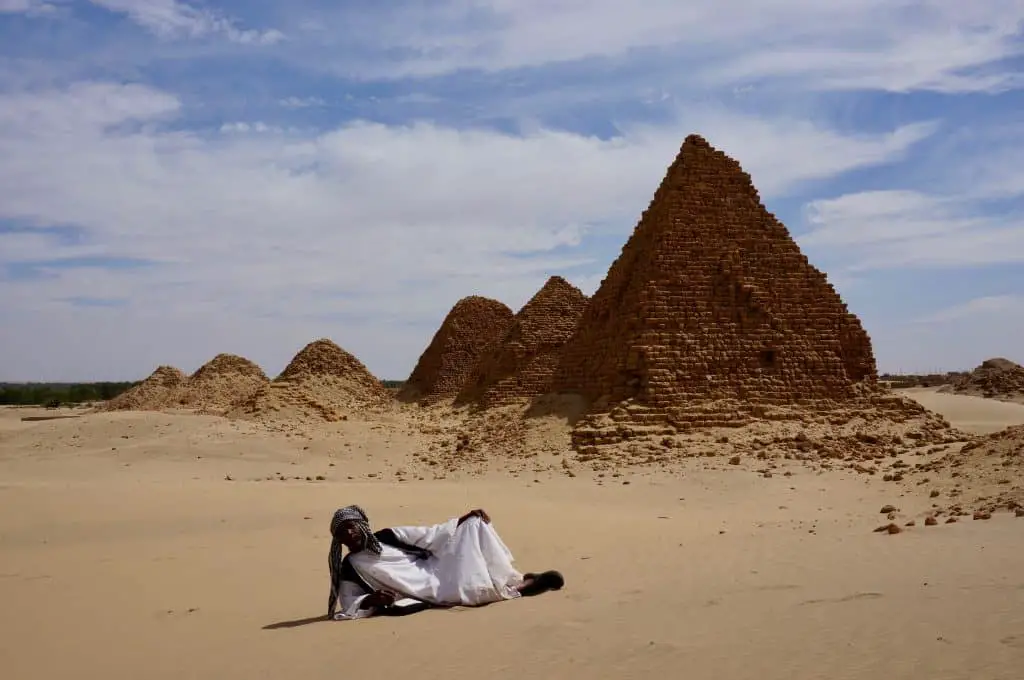
2. The Sights
The historical sights are incredible! Sudan has an amazingly rich history with a mix of cultures and religions. From Egyptian Pharaohs to Ethiopian Axumites, Christian Missionaries to Muslim Arabs, Sudan has had many influences which can be seen at the various archeological sights.
To get a good understanding of Sudan’s archaeological sights I would strongly recommend the use of a guide, as well a visit to the National Museum of Sudan to put everything into context.
Top Sudan tourist attractions:
- The Temple of Soleb – The name Sudan has it’s influence from the Arabic phrase bilād al-sūdān meaning “The Land of the Blacks” so historically the Nubians were known as the Black Pharaohs.
- The Pyramids of Meroe – pyramidal tombs from the Kushite empire. They’re mostly intact apart from missing their tops. These were blown off in the hunt for treasure during the 1830s, curtesy of Giuseppe Ferlini.
- The Temple of Mut at Jebel Barkal – Most people will visit Karima to see the pyramids and climb to the top of Jebel Barkal Hill. These are great and I definitely recommend doing these especially the at sunset. But the real gem is underneath the hill in the Temple of Mut, the Egyptian Sky Goddess. Here you will see incredibly colourful paintings from around 600 BC.
- Old Dongola – This Christian site was once the capital of Makuria.
- Naqa Temples – An almost intact, Egyptian inspired Colonnade of rams on show in one temple and a Greco-Roman inspired Kiosk on show at the other. Buildings with clear influence from two of the most powerful civilisations the world has known, on show in the middle of the Sudanese desert!
Sudan Itinerary
Here is the itinerary I put together for my group when we travelled around Sudan. This could easily be modified if you are travelling overland from Ethiopia to Egypt (or vice versa), by adding 2 extra nights to allow for travel from/to the borders.
Want to know more about overland travel? Take a look at this article!
Day 1: Sightseeing in Khartoum
Day 2: Drive to Old Dongola. Early evening tour of Old Dongola site and camp nearby
Day 3: Drive to Kerma for a tour of Western Deffufa site and museum. Continue drive to Wawa and stay at local guesthouse
Day 4: Sunrise tour of the Temple of Soleb. Drive to Karima with a stop en route at the 3rd cataracts of the nile. Early evening tour of The temples of Amun and Mut and sunset on Jebel Barkal. Stay in local guesthouse in Karima.
Day 5: Sunrise visit to the Karima pyramids then drive to Nuri pyramids for tour of that site. Finally, drive to Meroe, evening walk through site and camp nearby.
Day 6: Sunrise tour of the Meroe site followed by a visit to the newly opened museum. Drive to Mussawarat for a tour of the sites and finally on to Naqa for site tours and camp nearby.
Day 7: Drive to Khartoum
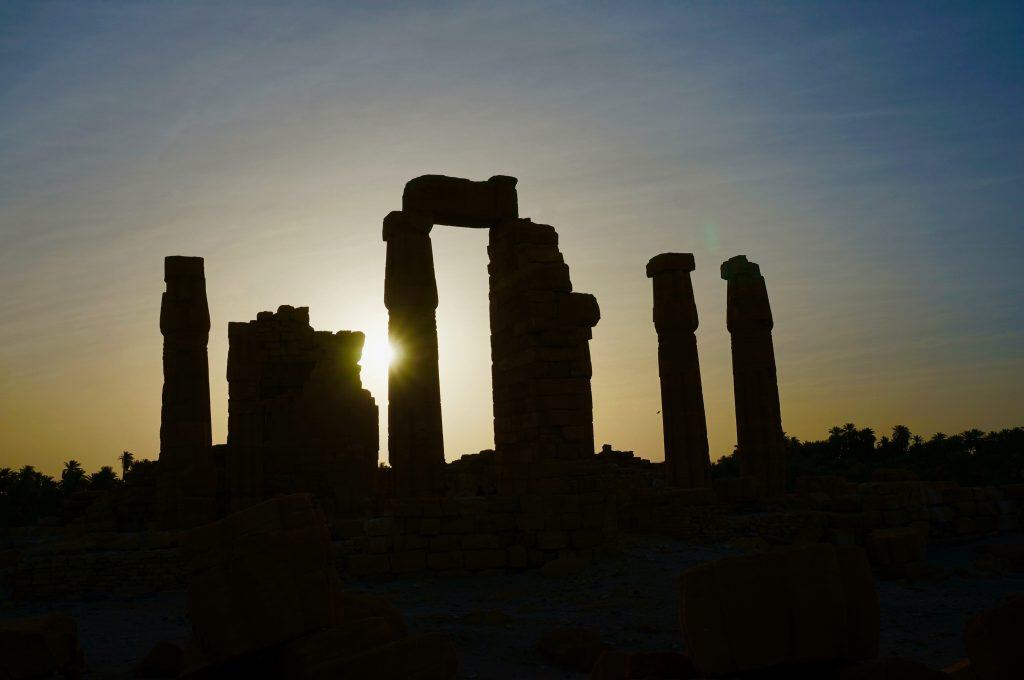
Things to do in Khartoum
Visit the national museum of sudan.
I highly recommend visiting the National Museum of Sudan to view artefacts found in the archaeological sites of Sudan and to provide an overview of the country’s long and complex history.
On the ground floor you will find the main part of the museum and then on the second floor you will find a whole host of incredible Christian frescos. I bet you weren’t expecting that!
Finally, outside there is an outdoor museum where entire archaeological sites from the Lake Nasser area have been dismantled and reassembled, alongside a water feature resembling the Nile. Neat!
Visit The Camel market
If you have never been to a camel market I strongly recommend you visit this one. There are thousands of camels and other cattle on show and up for grabs. The wheelers and dealers there are all very friendly and welcoming to tourists and you might even find yourself a bargain.
The best quote we got for a camel was about $2000 so a little out of our price range unfortunately. It’s not the easiest place to get to as it is in the Omdurman area but definitely worth the trip.
Visit the confluence of the Nile
In Khartoum you can visit the place where the white and the blue niles meet. The White Nile bridge overlooks the confluence but no photographs are allowed.
If you want pictures it’s best to take a ride on the Ferris wheel in the Mogran Family Park which is next to the bridge. You can also take a ferry to Tuti Island and view the confluence from there.
Visit the Whirling Dervishes ceremony
The Sufi muslims in Sudan practise their ceremony every Friday at around 4pm. This is like nothing else I’ve ever seen. I was expecting something similar to what I’d observed in Turkey but it is completely different. It’s like Sufism meets Reggae! I’m not kidding, go check it out, you won’t regret it!
3. The Tourists
There are none! Very few foreigners visit Sudan so you’re likely to get these amazing sights all to yourself. For example Meroe, arguably Sudan’s most famous sight, is approximately 2800 years old and is UNESCO listed, however, during our sunset and sunrise visits we saw only one couple. Cue lots of photographs of empty archaeological sites !
Since there are very few tourists it also means that you are welcomed with open arms by the locals as they are keen to show you their country.
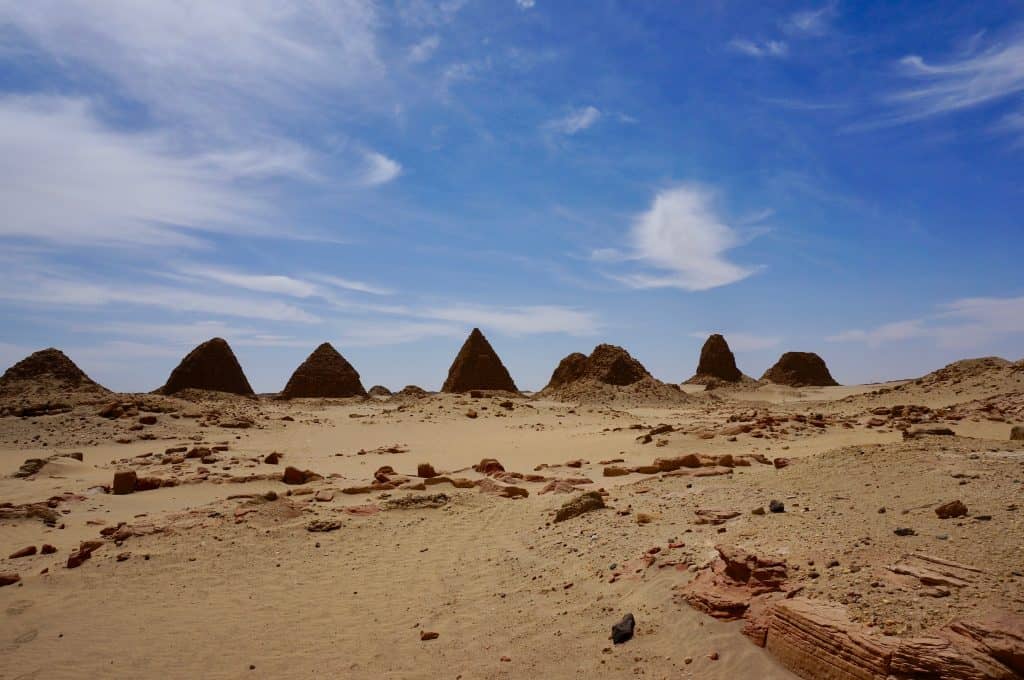
Visas and registration
Although most nationalities can get visas on arrival at Khartoum Airport (cost $100-150), you will need an entry permit before you can board the plane (Also known as an authorisation code) These are provided by Sudanese Tour Operators in exchange for a fee typically of $150.
Upon arrival in Khartoum you will also need to get your passport registered, which again the tour operator can do for around $50. So be prepared for these costs. You can register your passport yourself in Khartoum but it’s a bit of a run around! The agency we used was Lendi Travel
If you are arriving from a land border you will need to get your visa in advance . Costs vary depending on nationality but we got ours at Addis Ababa and they cost $68. You need to arrive at the consulate around 8am then you can collect it the following day after 2pm. To obtain the visas you need:
- 2 passport photos
- A photocopy of the ID page of your passport
- A photocopy of the Ethiopian visa in your passport
- A contact name, number and address for your sponsor or hotel
- A visa or flight details for the next country you are travelling to after Sudan
- Money in USD with notes newer than 2006
Note: The border between Ethiopia and Sudan commonly has civil unrest. We spoke to travellers in Addis who were concerned about travelling overland to Sudan due to stories they’d heard from other travellers. However, we were able to cross the border both directions without any trouble (March 2019). You are now able to register your visa at this border.
Visas take up 1 full page in your passport and the registration stamp will take up another so be prepared for that. If you have an Israeli stamp in your passport you will not be able to get a Sudan visa. If you have Sudanese visa in your passport you will then require an interview before you can travel to the USA. (The same for Iran Visas)
Foreign bank cards do not work in Sudan so you will need to take enough USD to cover your costs for the duration of your stay. If you think you have enough, take some more, just in case! That being said the cost of food and accommodation is extremely cheap, for example we stayed in guest houses for around $2 per night!
Changing money is pretty easy to do at hotels or banks and they will give you the official rate. Due to Sudan’s struggling economy there is a very healthy black market for changing money but it’s up to you whether you want to take this option. During our visit to Sudan in March 2019 the official rate was 47 SDP to 1 USD and the black market was 60-65 SDP to 1 USD, so quite a big difference.
Sudan Essentials
- A Headscarf – As mentioned below, as a tourist you aren’t required to wear a headscarf but it’s really hot in Sudan so it’s handy to keep the sun off and it covers up bad hair days!
- A SIM card – I bought a SIM card, calling time and 2GB data for 150 SDP. I had 3G coverage for most places, so it was pretty cheap and convenient to have.
- Google Translate or a phrasebook for Arabic – Not too many people speak English so it’s very handy to know a f ew basic phrases in Arabic.
- European and British plug adaptors – As a previous British Colony, Sudan has a few leftovers.
- net – March is breeding time for the annoying little midge type flies that live near palm trees, so you’ll get hounded by these at sites like Old Dongola and The Temple of Soleb.
- Water – It’s a desert and it’s hot so remember to drink lot’s of water! Use a water bottle to reduce plastic consumption.
Things to remember about travelling in an Islamic country
The weekends in Sudan are on Friday and Saturday as per the Islamic calendar. This will affect shop opening times, particularly on Friday during Friday prayers (between 12 and 2pm).
Women and men are expected to dress conservatively, which means shoulders and knees covered at all times. Sudanese women wear headscarves but as tourists you are not expected to follow this custom and locals won’t look down on you if you don’t.
Vaccinations
Sudan requires you to have a Yellow Fever vaccination before entry however we were not asked for them when we crossed from Ethiopia. (March 2019).
Malaria is present so anti malarials are recommended as are the usual anti mosquito precautions. For our most recent travels in Africa I found a non-Deet anti mosquito spray which worked really well. When I see what Deet does to plastic I hate to put it on my skin!
But is it safe to visit Sudan?
Er yes! That’s the short answer! Obviously you will need to stay clear of the protests still taking place in Khartoum but away from that you should have no issues. Enjoy the best hospitality you’re likely to receive anywhere in Africa or even in the world!
Subscribe to my newsletter
By checking this box I consent to the use of my information provided for email marketing purposes.
Like it? Pin it for later!
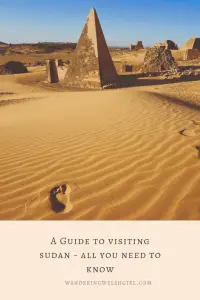
Louise is an Adventure Tour Guide, Snowboard Instructor & Mountain Leader from South Wales. Through working as a tour guide and snowboard instructor, she has spent the last 15 years travelling Asia, Africa and the Americas. Louise is a published photographer and currently guides mountain trips in the UK.
Recent Posts
The 11 Best One-Day Hikes In Wales
Wales, a land of myth and legend, is a hiker's paradise with its dramatic landscapes, verdant valleys, and rugged coastlines. From the towering peaks of Snowdonia to the serene shores of...
The Best Castles in Wales: A Guide To The Majestic Fortresses of Wales
Wales is a country steeped in history and the castles that dot its landscape are a testament to this rich heritage. From towering fortresses to romantic ruins, there are over 600 castles in Wales to...


- DESTINATIONS
- EXPERIENCES

Sudan Travel Guide: A Melting Pot of Cultures & Ancient Wonders
Africa is a continent that I have visited ever since I can remember. It has always been a place of dreams, where part of my family comes from and where cultural crossroads originate. During the past 10 years, I have been drawn to Africa and chose it as a primary destination. I have been to 13 different countries in Africa but previously I had never been to Sudan.
The Sahel region, and Sudan in particular, piqued my interest. When the pandemic was raging around the world, and Sudan was still open, I knew I had to go. Sudan is a melting pot between the Arab world, African culture, the Sub-Saharan region, bedouins and the Mediterranean North. Most people don’t realize that Sudan is also a land of pharaohs – a place with more pyramids than Egypt! But what it lacks is recognition and investment.
I always get this overwhelming sense of adventure when I land in a new place. It’s a premonition of how much there is to discover and a slight anxiety of the unknown. As soon as you walk outside the airport in Sudan, you’re met with surprised looks. There were people wondering why I was there in the first place. Of course I stand out: I’m European and dressed in something different than the traditional and ubiquitous jalabiya garment.
It was this reciprocal sense of curiosity that I first felt in Sudan: both with myself toward the country and the country toward me. It wasn’t a culture shock per se, as I had already traveled to Africa and the Middle East. It was a new place, so it inspired me and I was surprised in many ways.
I was in Sudan for just under two weeks. My first plan was to enter through the Egyptian border and then travel overland. However, that turned out to be complicated for me since I had very little time to explore there and had to figure out the visa situation at the Sudanese consulate in Aswan, Egypt – there was no guarantee that it would be granted during the pandemic.
Plus, needing to have two negative PCR tests (one to enter Egypt and then another one to enter Sudan) made it tricky to deal with. So I settled for landing in Khartoum and driving north, then working my way back to Khartoum slowly and stopping at all of the places I wanted to on the way. After a strenuous first day, it paid off and proved to be quite an effective way to work a slow-paced trip southwards.
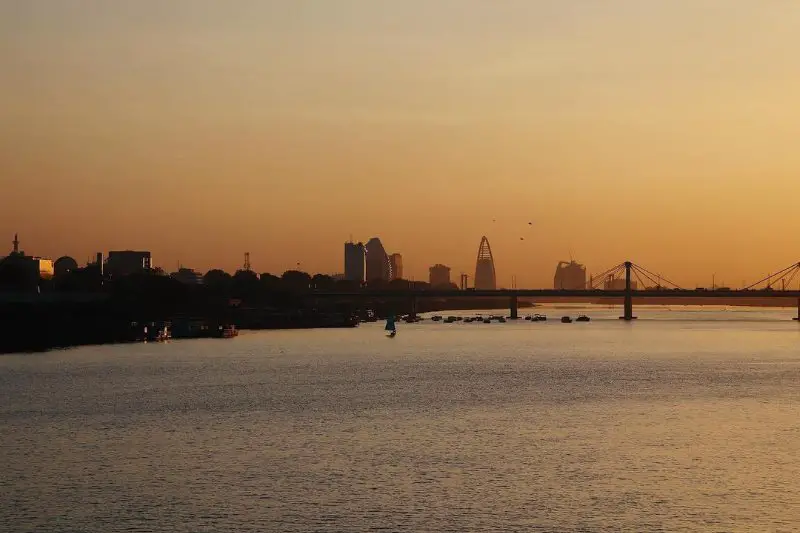
Favorite Spots in Sudan: Kerma Museum & El-Kurru
Sudan is actually a very easy place to photograph because the landscape is very arid and the buildings and landmarks are mostly unobstructed. The majority of the year is very sunny, and with that comes perfect light too.
I enjoyed the country thoroughly, but the Kerma Museum was a definite highlight due to its Nubian architecture and contrast with the ancient Daffufa in its vicinity. Another highlight was the tomb of El-Kurru near Karima with its wonderfully preserved chamber covered in hieroglyphics.
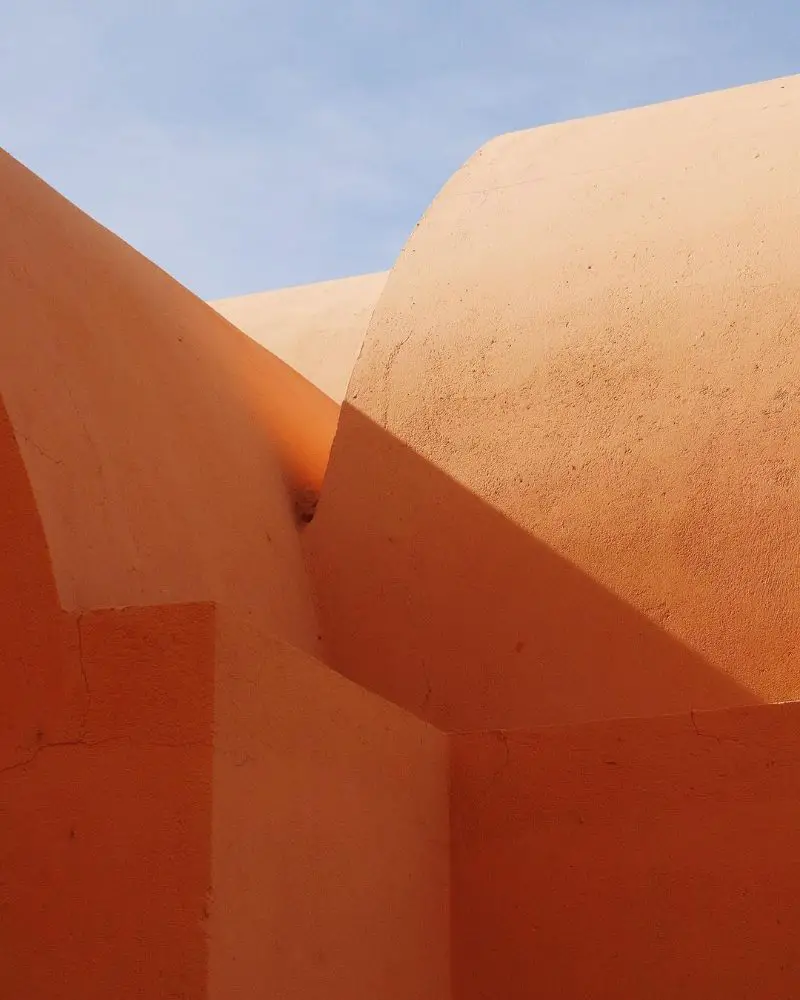

7 Best Things To Do in Sudan
- Enjoy a Drink at the Tea & Coffee Stalls in the Villages: People come here to sit together and overcome every difference they may have.
- Visit the El-Kurru Tomb: See these stunningly well-kept motifs.
- Cimb Jebel Barkal Mountain: Go at sunset and see the kids playing. They do somersaults down the sand slopes, it’s pretty cool!
- Marvel at the Meroe Pyramids: A UNESCO World Heritage Site that is home to a series of necropolises that are the postcard of the country.
- Experience the Friday Afternoon Sufi Rituals in Omdurman: This is the absolute best experience in Sudan. It’s frowned upon by the majority of the traditional population, but it’s an expression of art and devotion in a way that I have never seen before. Truly incredible!
- Stumble upon Desert Landscapes and Canyons as you Drive the Country: Sudan has some beautiful, inhospitable and vast nature.
- Check out the Kerma Museum: Home to an immaculate collection of artifacts and epic architecture, you will have a fascinating time here.
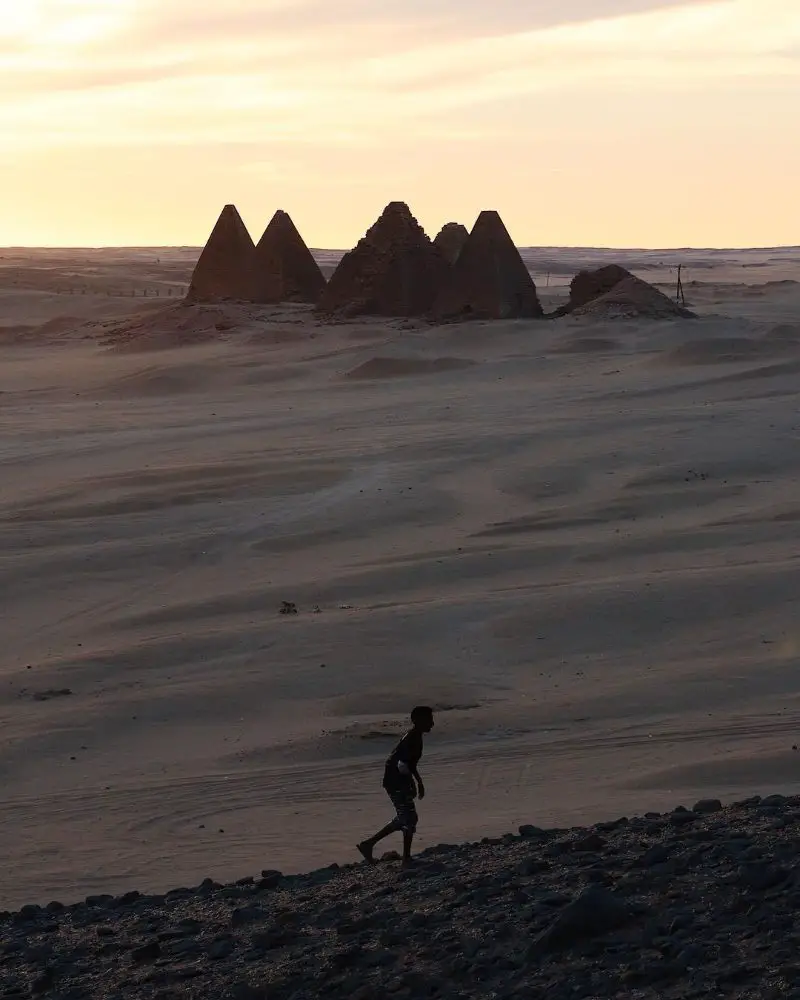
Melting Pot of Cultures in Sudan
Sudanese culture, in the Nile region I visited, is a melting pot. People from all over the country come here to live and work. It’s a combination of Arab and African traits – a traditional society ruled by religious values and unmatched hospitality. Locals will invite you for lunch, offer you coffee and ensure you feel welcome. The ones who speak English will ask questions, while others will share snacks, throw smiles your way and open their arms.
Sudan doesn’t have a strong food scene. There is a staple dish, fuul, available everywhere. It’s a bean paste that goes with flatbread, washed down with coffee or tea. Sometimes shawarma and roasted chicken can be found, but it’s hard to come by any restaurants outside the capital. Most options are little hole-in-the-wall restaurants and stalls but the service is always good, driven by people’s curiosity and will to make you feel at home.

Need to Know Before you Go
I ultimately ditched my hitchhiking and public transport strategy for a jeep with a driver and fuel. Why? Sudan has issues with fuel shortages, lines at gas stations can last for days. Since it’s not a touristy place, many of the so-called attractions were closed and locked. I had to scramble to find the guy in charge several times, and it involved multiple phone calls to get him to rush over and let me in. That being said, be ready to wait and be patient.
People are kind and welcoming. Be sure to be respectful and smile back. I always carry school supplies to give kids in less developed places, it makes a difference. Be ready for the heat, it can be unbearable and if you’re intending to take some drives into the desert like I did, carry a hat and plenty of water in case your car gets stuck in the sand and you don’t have any shade. In Khartoum, the ride-share app Tirhal can work wonders.
BY ANTONIO AVELAR IG: @ELTRAVELAR
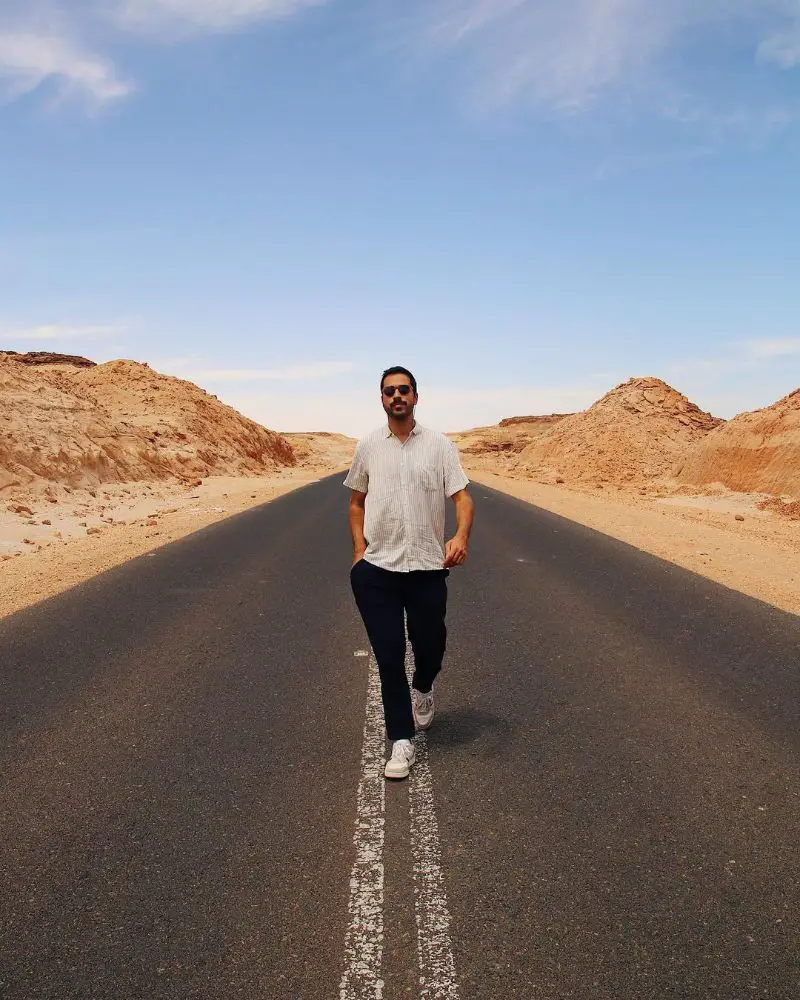
Author: Antonio Avelar
Antonio Avelar was born and raised in Lisbon, Portugal. From a young age, his parents took him on trips across the world - so a sense of adventure and exploration was embedded in him from his early years. You can follow his travels around the world on Instagram at @eltravelar.
Related posts

Leave a Reply Cancel reply
Your email address will not be published. Required fields are marked *
Save my name, email, and website in this browser for the next time I comment.
Post comment
Travel experiences
Accommodation.
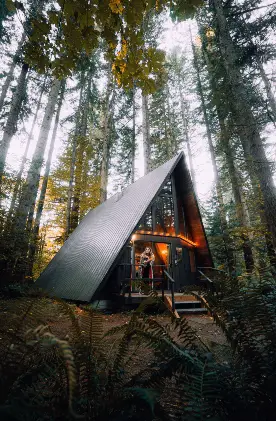
Beaches & Islands
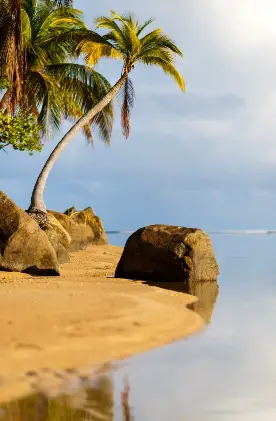
Food & Drink
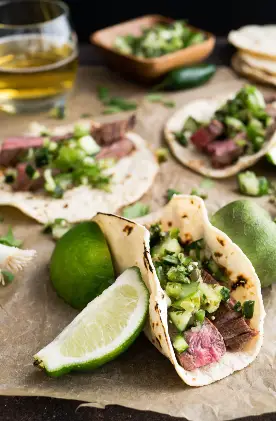
Historical Sites
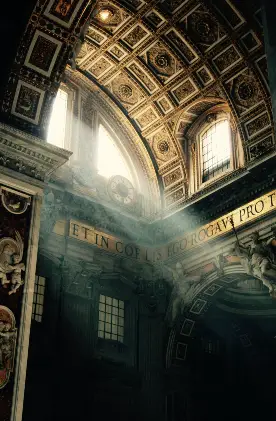
Living Abroad
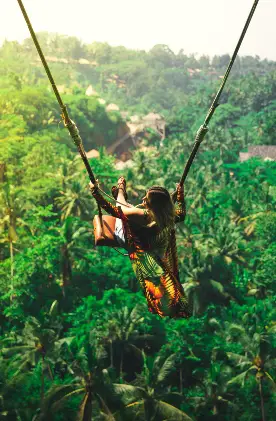
National Parks
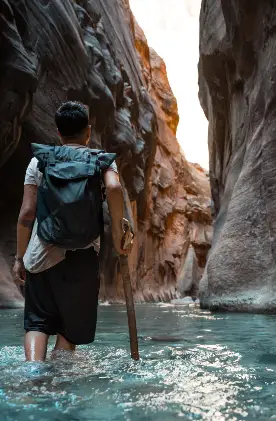
Towns & Villages
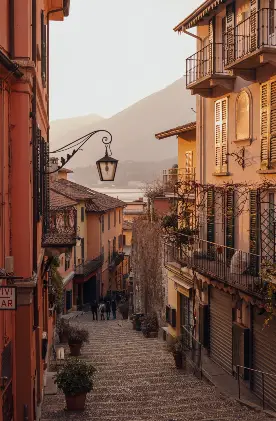
Travel Tips
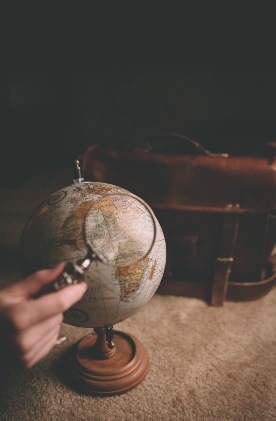
Sign up to our newsletter

Our Top 5 Best Places To Visit In Sudan:
Hidden treasures: exploring sudan’s enigmatic beauty.
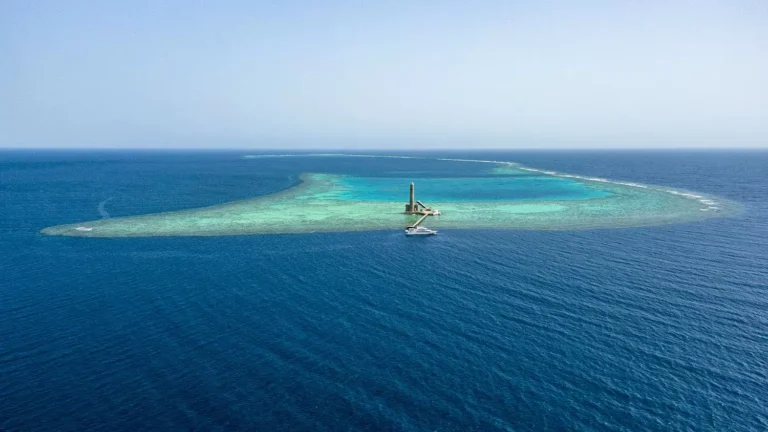
If you’re craving a journey off the beaten path, Sudan might just be the destination you’ve been dreaming of. This African gem is brimming with historical wonders, breathtaking landscapes, and a warm culture that will capture your heart. Let’s dive into some of the must-visit places in Sudan that will leave you awe-inspired and yearning for more.
Map of Sudan:
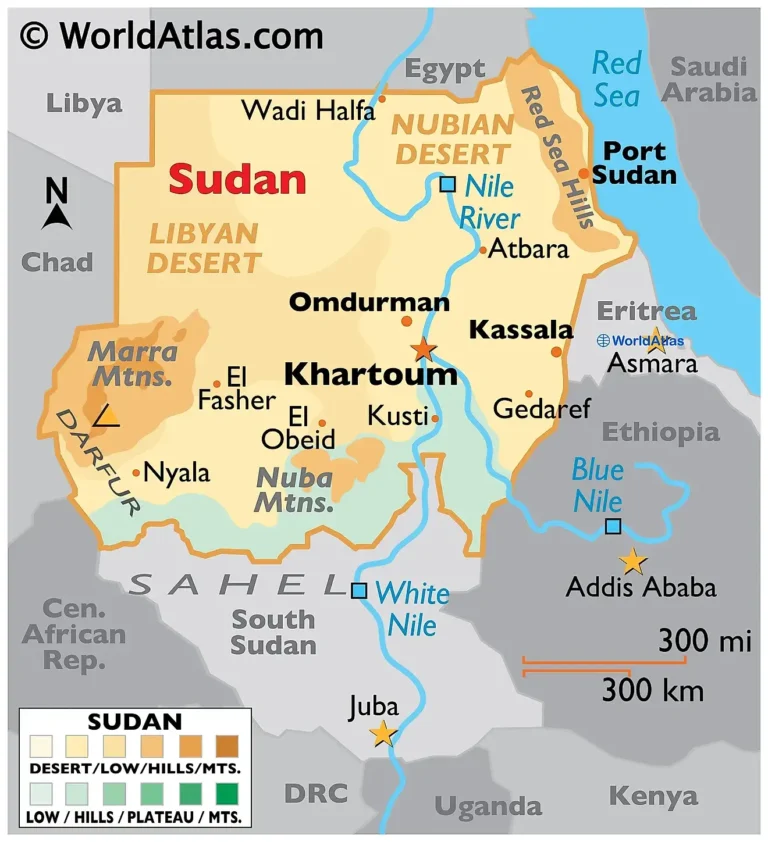
Map Showing Sudan Location in Africa:
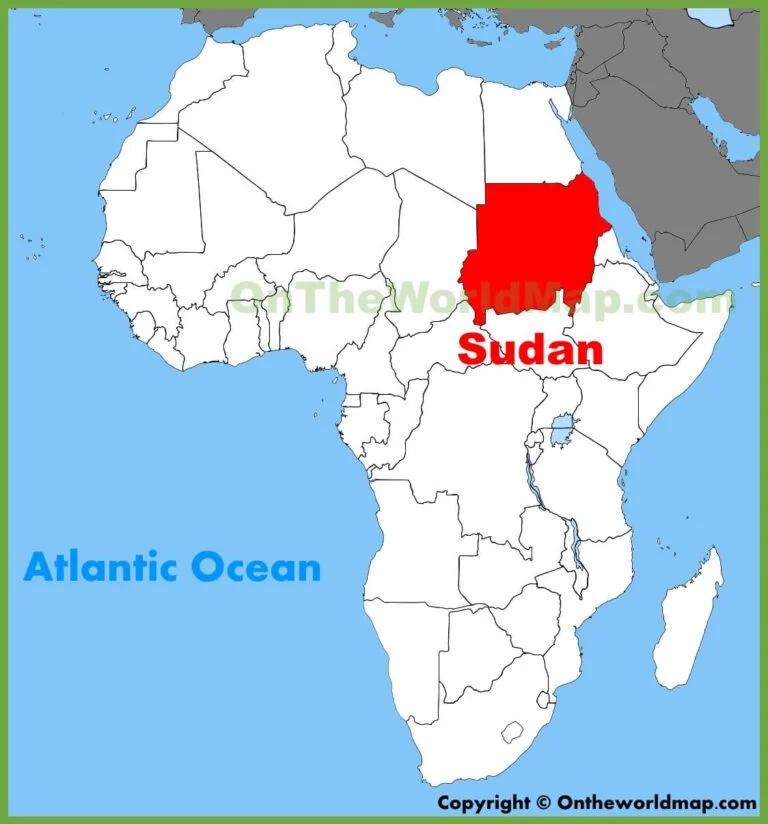
Countries Bordering Sudan:
Sudan is on the continent of Africa and shares its border with seven countries: Sudan is bounded on the north by Egypt , on the east by the Red Sea , Eritrea , and Ethiopia , on the south by South Sudan , on the west by the Central African Republic and Chad , and on the northwest by Libya .
- Central African Republic
- South Sudan
1. Khartoum: Where History Meets Modernity
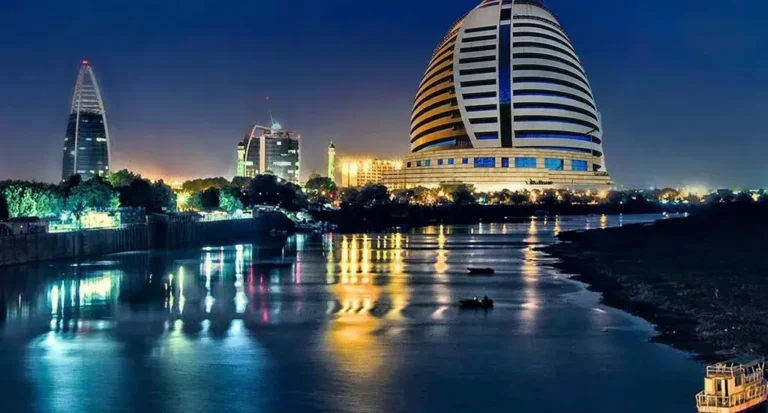
Khartoum: a city where history collides with modern vibes. Picture this: I’m sipping coffee by the Nile, watching the riverboats glide by. Khartoum is all about those magical moments that make your heart skip a beat.
For breakfast, I stumbled upon a charming café called “Bread & Bliss.” Their pastries were like fluffy clouds, and the coffee? Oh, it woke up my taste buds like an alarm clock!
But here’s the kicker: the confluence of the Blue Nile and White Nile rivers. Trust me, it’s like witnessing a secret meeting between two old friends. And guess what? I found a spot by the riverside where I could watch the sunset. Sunsets here are like nature’s fireworks – colors that explode across the sky.
My personal gem? The Sudan National Museum. Imagine standing in front of ancient artifacts, feeling like Indiana Jones. And when the hunger pangs hit, Omdurman Souq saved the day. Spices, fabrics, and street food galore – it’s like a carnival for your senses.
As the stars lit up the sky, I found myself at a rooftop café. The cool breeze and twinkling lights turned the evening into pure magic. Khartoum – a place where adventure meets river magic, and every corner has a story waiting to be discovered.
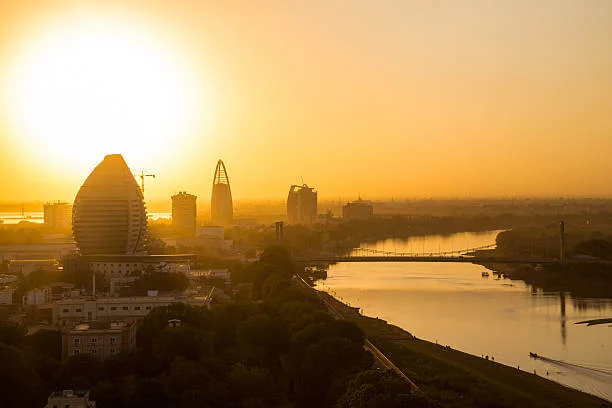
2. Meroë: Pyramids of the Desert
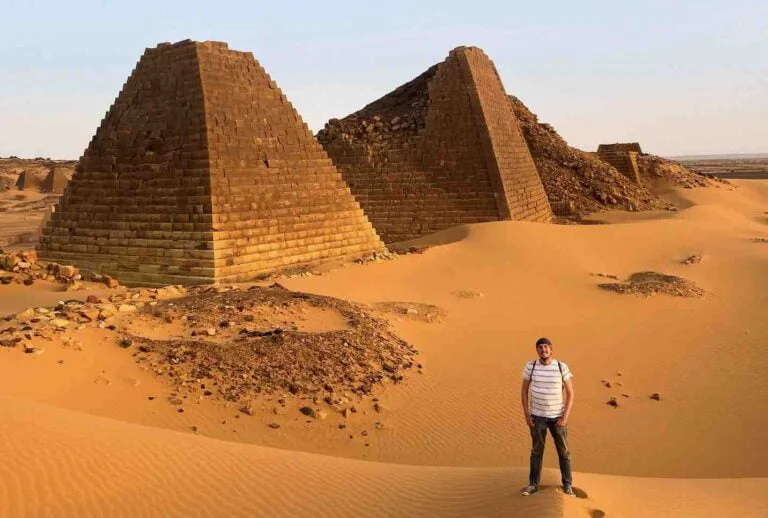
Meroe: home to jaw-dropping pyramids that make you feel like you’re in a history book come to life. As I stood before these sand-kissed giants, the desert wind whispered tales of pharaohs and ancient kingdoms.
My morning in Meroe started with a little gem of a breakfast spot called “Sands & Sustenance.” Fluffy pancakes and a cup of joe – the perfect fuel for a day of exploring. And speaking of exploration, climbing one of the pyramids was like solving a puzzle from the past. The view from the top? Mind-blowing!
But here’s where it gets interesting. As the sun began its descent, I found myself a cozy spot to watch the sunset. Colors painted the sky, turning the desert into a canvas of dreams. And then, a local guide shared stories around a campfire, adding an extra layer of magic to the experience.
As the stars appeared, I headed to a desert camp where traditional music and dance transported me to another world. And yes, sipping tea under the starlit sky was the perfect way to end a day in Meroe.
So, fellow adventurers, if you’re looking to walk in the footsteps of ancient royalty, Meroe is waiting to sweep you off your feet. Pyramids, sunsets, and stories – this desert wonderland has it all!
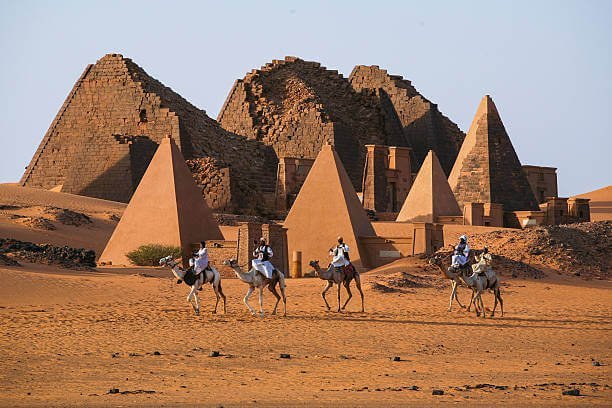
3. Nubian Villages: A Glimpse of Local Life
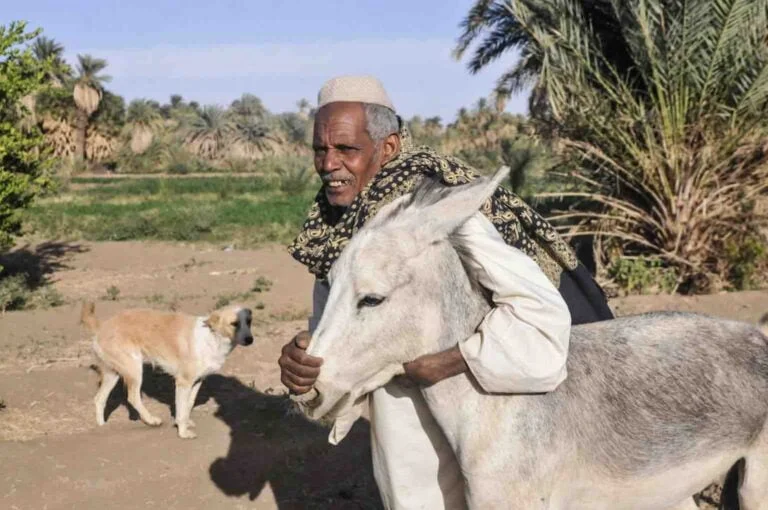
Nubian Villages: a place where the Nile flows and culture blooms like a desert flower after the rain. Can you imagine a place where history and hospitality embrace you like an old friend? That’s the Nubian Villages for you!
Mornings here started with breakfast at “Nile Breeze Café,” a charming spot by the water. Freshly baked bread, aromatic tea – it was like a morning hug for my taste buds. But the real magic was meeting the locals, who welcomed me into their homes with open arms.
One little gem I uncovered was a traditional Nubian dance workshop. Letting loose and dancing to the beat of the drums was a unique experience that made me feel like a part of the community. And speaking of unique, the handcrafted souvenirs I found in the local market were treasures straight from the heart.
As the sun dipped below the horizon, I found myself on a felucca boat, sailing down the Nile. The gentle breeze, the sound of water, and the view of the villages created a symphony of peace. And guess what? The sunset was like a painting – colors that made my heart skip a beat.
My favorite spot for sundowners? A rooftop café where the city lights came alive and the aroma of local coffee filled the air. Sipping coffee as the city twinkled beneath me – it was a moment that captured the essence of the Nubian Villages.
So if you’re ready to embrace a culture that’s as warm as the desert sun, the Nubian Villages are waiting with open arms. From sunrise to sunset, this is a journey that promises to paint your memories in the most vibrant hues.
- Old Dongola
- Wādī Ḥalfā

4. Suakin: A Living Historical Port
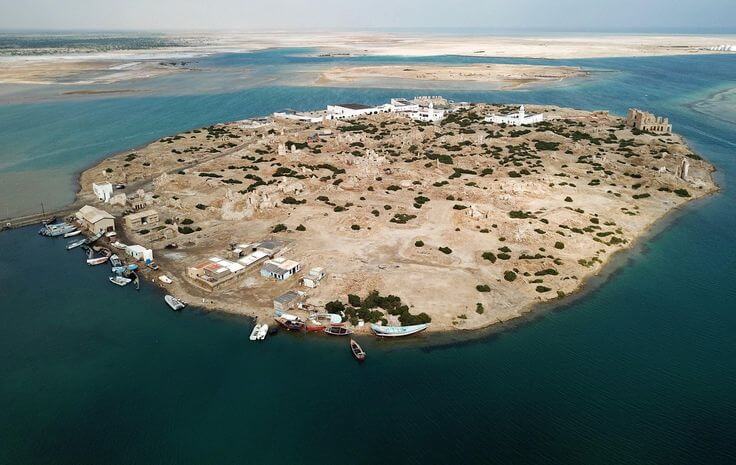
Suakin: a coastal gem that left me speechless. Imagine a place where history meets the sea breeze, and you’ve got Suakin, a coral wonderland waiting to be discovered.
Mornings started with breakfast at “SeaSpray Café,” a quirky spot by the shore. Fluffy pastries and a cup of chai – it was like a morning hug for my taste buds. But here’s the real treasure: the coral city itself. Walking through the narrow alleys, I felt like I was exploring a hidden chapter of history.
As I wandered through the ancient coral buildings, I stumbled upon a local artisan shop. Handwoven textiles, intricate jewelry – I couldn’t resist taking home a piece of Suakin’s soul. And let me spill the beans on a secret: snorkeling in the Red Sea was like stepping into a rainbow of underwater wonders.
But the real magic happened during sunset. I found a spot by the beach, sipping on a fresh coconut as the sky transformed into a canvas of colors. The feeling of sand between my toes and the sound of the waves – it was pure serenity.
For sundowners, I headed to “Sunset Sands Café,” where the view was a blend of sea and sky. Watching the sun dip below the horizon was like witnessing a masterpiece being painted in real time.
So, if you’re up for a coastal adventure that’ll make you fall in love with history, Suakin is your go-to. From coral treasures to sun-kissed beaches, this place has a little bit of magic for everyone. Not far away to the north is Port Sudan too..
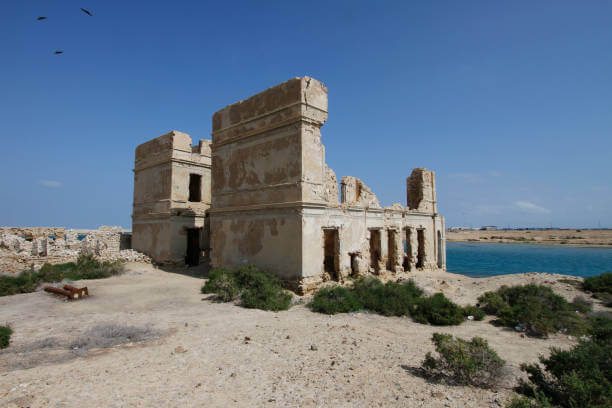
5. Jebel Barkal: A Sacred Mountain
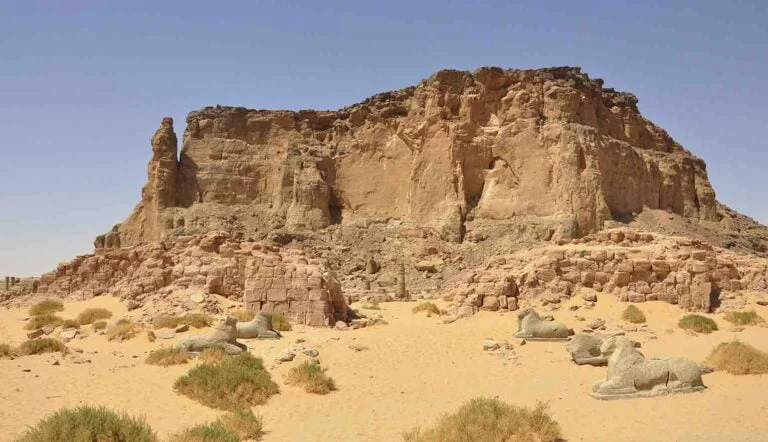
Jebel Barkal: a place where history meets adventure. Imagine this: I’m hiking up a desert mountain, and as I climb higher, secrets of the past start to unravel.
My day kicked off with a hearty breakfast at “Desert Bites Café,” where fluffy pancakes powered me up for the journey ahead. Now, picture me on a desert trail, surrounded by golden sands and a promise of ancient tales. Jebel Barkal isn’t just a mountain; it’s a living history book.
As I hiked up, the view transformed with each step. The ancient temple ruins appeared, carved right into the rock. Can you believe it? I was standing where pharaohs once worshipped, and the feeling was like stepping into a time machine.
But here’s the kicker: the panoramic view from the summit. The sun painted the landscape in warm shades, and the sight of the Nile River in the distance was like finding a hidden treasure.
For a special touch, I headed to “Sunset Oasis,” a little spot where I enjoyed a sundowner mocktail while watching the sky change colors. It was like toasting to the end of an unforgettable day.
So, adventure seekers, if you’re ready to hike through history and witness the desert’s secrets firsthand, Jebel Barkal is waiting to blow your mind. From breakfast to sunset, this place is a treasure trove of experiences that will make your heart race and your soul sing.
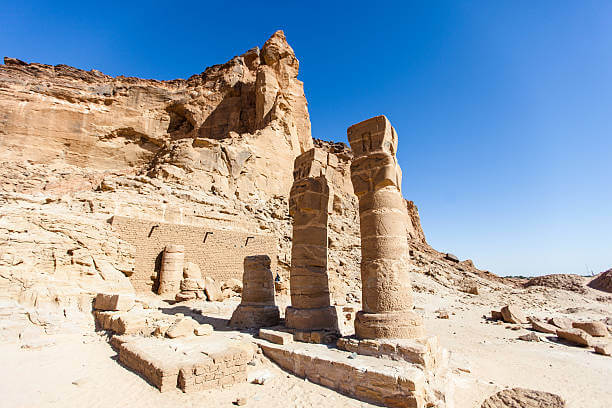
Did we mention the food? EAT!
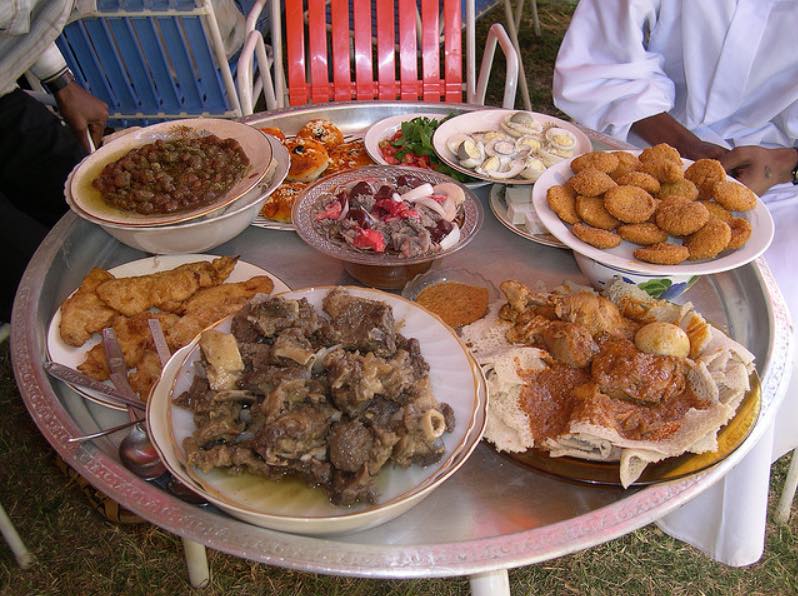
Savoring Sudan: A Culinary Adventure for the Taste Buds
Hey, foodies and explorers! Let’s talk about my delightful journey through Sudan’s flavors – a culinary adventure that left me craving for more. From street corners to hidden gems, Sudan’s food scene is a treasure trove waiting to be savored.
Breakfasts started with “Sunrise Sips Café,” where warm ful medames and freshly baked bread greeted me like an old friend. But here’s the real kicker: the Sudanese tea. A fragrant blend of spices and warmth that felt like a cozy hug for my taste buds.
For lunch, I found myself at a bustling local market. The aroma of kisra – a traditional flatbread – filled the air, and I couldn’t resist trying a bite. And oh, the falafel! Crispy on the outside, tender on the inside – a dance of flavors in my mouth.
Dinner took me to a traditional Sudanese restaurant named “Nile Flavors,” where I sampled the iconic dish called “Shayyah.” Imagine chunks of tender lamb, slow-cooked with spices that made my taste buds do a happy dance.
But here’s the secret gem: the Sudanese hospitality. I was invited to a family’s home for a meal, and the experience was beyond words. Sitting on the floor, sharing stories, and passing around plates of aromatic dishes – it was a taste of authentic Sudanese life.
And for dessert, it was all about “Dessert Oasis,” a quirky café with sweets that felt like a hug for my soul. Dates, nuts, and honey – a symphony of flavors that left a sweet imprint on my heart.
So, fellow food adventurers, if you’re ready to explore a world of spices, warmth, and heartwarming hospitality, Sudan’s culinary scene is calling your name. From sunrise to dessert, every bite is a taste of the country’s vibrant culture and history.
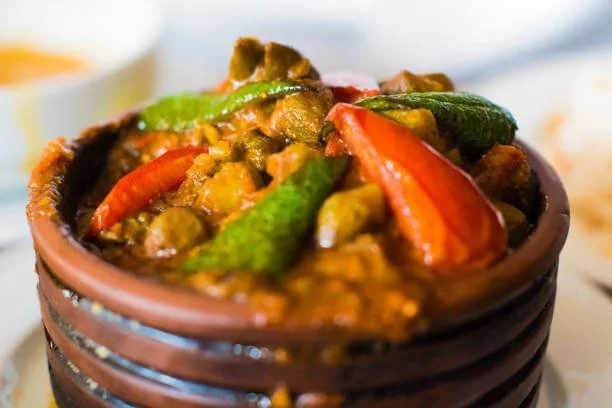
Essential Things to Know Before Traveling to Sudan:
Before embarking on your adventure to Sudan, it’s important to be well-prepared and informed. Here are some essential things to know before traveling to Sudan:
- Visa and Entry Requirements: Check the visa requirements for your nationality before traveling to Sudan. Ensure you have a valid passport and any necessary documents for entry. It’s a good idea to apply for your visa well in advance to avoid any last-minute hassles.
- Health and Vaccinations: Consult your healthcare provider or a travel clinic about recommended vaccinations for Sudan. Malaria is a concern in certain regions, so consider taking antimalarial medication and using mosquito repellent. Make sure you have all necessary medications and a basic first aid kit.
- Cultural Sensitivity: Sudan is a conservative country with strong cultural and religious traditions. Dress modestly, particularly in public places and religious sites. It’s also a good idea to learn about local customs and behaviors to show respect to the local population.
- Currency and Cash: The official currency in Sudan is the Sudanese Pound (SDG). While credit cards might be accepted in some places, it’s wise to carry cash, especially in smaller towns and rural areas. Inform your bank about your travel plans to avoid any issues with your cards.
- Language: Arabic is the official language of Sudan. While English might be spoken in urban areas and tourist spots, it’s helpful to learn a few basic Arabic phrases or carry a translation app.
- Safety and Security: Check travel advisories and stay informed about the current political and security situation in Sudan. It’s recommended to avoid political demonstrations and gatherings. Be cautious when taking photographs, especially near military or government buildings.
- Climate and Clothing: Sudan has a hot desert climate. Pack lightweight, breathable clothing, and consider sun protection like hats and sunglasses. If you plan to visit during the cooler months, bring a light jacket.
- Local Etiquette: It’s customary to greet people with a handshake and a smile. When visiting someone’s home, it’s polite to bring a small gift, such as sweets or fruit. Always use your right hand for eating, shaking hands, and giving or receiving items.
- Transportation: Public transportation might be limited, so consider arranging transportation in advance, especially if you’re exploring remote areas. Taxis are common in cities, but it’s a good idea to agree on a fare before the ride.
- Internet and Communication: Internet connectivity might be limited in some areas. Purchase a local SIM card for your phone to stay connected, or consider using messaging apps with Wi-Fi.
Remember that thorough research and preparation can greatly enhance your travel experience in Sudan. Respect for local customs, an open mind, and a willingness to embrace the culture will help you make the most of your journey.
How to Get to Sudan:
Getting to Sudan typically involves flying into the country, as it’s the most convenient and efficient mode of transportation. Here’s how to get to Sudan:
1. By Air: The main international gateway to Sudan is Khartoum International Airport (KRT), located in the capital city, Khartoum. This airport serves as the primary point of entry for travelers arriving from various countries. You can find direct flights to Khartoum from major cities in the Middle East, Africa, and some European destinations.
2. Connecting Flights: If there are no direct flights from your location to Khartoum, you might need to take connecting flights. Major Middle Eastern airlines like Emirates, Qatar Airways, and Ethiopian Airlines often offer connecting flights to Khartoum via their hub cities.
3. Land Borders: Sudan shares land borders with several countries, including Egypt, Eritrea, Ethiopia, South Sudan, Central African Republic, Chad, and Libya. However, due to security concerns and bureaucratic procedures, crossing land borders might not be the most practical or reliable option for international travelers.
4. Sea Travel: Sudan has a coastline along the Red Sea, but sea travel for tourists is not a common mode of transportation. Most visitors arrive by air due to the limited availability of passenger ferry services.
Before you travel, ensure you have the required visa and necessary travel documents, and check for any travel advisories or entry requirements. Also, consider booking your flights well in advance to get the best deals and ensure a smooth travel experience.
How to Get Around Sudan:
Getting around Sudan involves a mix of transportation options, considering the country’s vast size and diverse landscapes. While transportation infrastructure might not be as developed as in some other countries, there are still ways to navigate Sudan effectively. Here’s how to get around:
1. Domestic Flights: For covering long distances quickly, domestic flights are a convenient option. Sudan has several domestic airports connecting major cities and towns. Airlines like Tarco Air and Nova Airways operate domestic flights, and flights can be booked at local travel agencies or directly through the airlines.
2. Buses and Minibuses: Buses and minibuses are commonly used for intercity travel. While they might not always offer the highest level of comfort, they are often the most affordable option. Be prepared for longer travel times due to road conditions and potential stops.
3. Taxis: Taxis are a popular mode of transportation within cities and towns. In urban areas like Khartoum, you can find both shared taxis (known as “karakits”) and private taxis. Always negotiate the fare before getting into the taxi.
4. Rickshaws and Horse-Drawn Carriages: In some smaller towns and rural areas, you might find rickshaws (cycle rickshaws) or horse-drawn carriages used for short-distance transportation. These can be a unique and local way to get around.
5. Private Hire and Car Rentals: Renting a car or hiring a private driver can be a more comfortable way to explore Sudan, especially if you’re planning to visit remote areas. However, road conditions can vary, so it’s important to choose a reliable rental agency and be prepared for driving challenges.
6. River Transportation: In areas along the Nile River, boats and ferries might be used for transportation. This can be a scenic way to travel, but availability and schedules might be limited.
7. Walking and Bicycling: In smaller towns and areas with compact urban centers, walking and bicycling can be enjoyable ways to explore. Always consider local customs and dress modestly, especially if you’re walking in more conservative areas.
8. Guided Tours and Local Guides: For travelers looking to explore specific regions or historical sites, guided tours or hiring a local guide can provide valuable insights and make navigation easier.
It’s important to note that transportation options and conditions can vary across different regions of Sudan. Be flexible in your travel plans, and consider local advice and recommendations when choosing transportation modes. Additionally, be respectful of local customs and traditions when using public transportation or interacting with locals.
FAQ – Our Top 5 Best Places To Visit In Sudan and Traveling to Sudan in General
Frequently asked questions (faq) about traveling to sudan.
- Do I need a visa to travel to Sudan? Yes, most visitors require a visa to enter Sudan. Check with the Sudanese embassy or consulate in your country to find out the specific visa requirements for your nationality.
- What is the best time to visit Sudan? The best time to visit Sudan is during the cooler months from November to February. This is when the weather is more pleasant for outdoor activities and exploring historical sites.
- Is Sudan safe for travelers? Sudan is generally considered safe for travelers, but it’s important to stay informed about the current political and security situation. Check travel advisories and avoid political gatherings or demonstrations.
- What languages are spoken in Sudan? Arabic is the official language of Sudan. While English might be spoken in urban areas and tourist spots, having some basic knowledge of Arabic phrases can be helpful.
- What currency is used in Sudan? The official currency of Sudan is the Sudanese Pound (SDG). Cash is commonly used, especially in smaller towns and rural areas.
- What is the local cuisine like? Sudanese cuisine is influenced by Arab, African, and Middle Eastern flavors. Expect dishes like ful medames (fava bean stew), kisra (sorghum flatbread), and various meat and vegetable dishes.
- Can I use credit cards in Sudan? While credit cards might be accepted in some hotels and larger establishments in urban areas, it’s recommended to carry cash, especially in rural areas.
- What should I wear when visiting Sudan? Dress modestly, particularly in public places and religious sites. For women, loose-fitting clothing that covers the arms and legs is recommended. Men should also avoid wearing shorts in more conservative areas.
- Are there any cultural customs I should be aware of? Yes, Sudan has conservative cultural customs. It’s important to show respect for local traditions and customs, such as using your right hand for eating and greeting others with a handshake.
- What are some must-visit places in Sudan? Some popular attractions in Sudan include the Pyramids of Meroe, the Nubian Villages, Khartoum’s historical sites, and the ancient city of Suakin.
- Is it safe to drink tap water in Sudan? It’s advisable to drink bottled or purified water to avoid any potential health issues. Carry a reusable water bottle and refill it with purified water when needed.
- Can I use mobile data and the internet in Sudan? Internet connectivity might be limited in some areas. Purchase a local SIM card for your phone to stay connected, or consider using messaging apps with Wi-Fi.
Remember that local customs and practices may differ from what you’re accustomed to, so approaching your travels with an open mind and respect for the local culture will enhance your experience in Sudan.
Frequently Asked Questions (FAQ) About Places to Visit in Sudan
- What are the must-visit historical sites in Sudan? Some of the must-visit historical sites include the Pyramids of Meroe, the ancient city of Suakin, and the temples at Jebel Barkal.
- Are there any natural wonders to explore in Sudan? Yes, Sudan has its share of natural wonders. The Red Sea coastline offers opportunities for snorkeling and diving, and the Nubian Desert offers unique landscapes for adventurers.
- What is unique about the Pyramids of Meroe? The Pyramids of Meroe are a UNESCO World Heritage site and boast more than 200 ancient pyramids. These pyramids served as royal burial grounds and showcase intricate carvings and designs.
- Tell me more about the Nubian Villages. The Nubian Villages offer a glimpse into Sudan’s rich history and culture. Traditional homes, vibrant markets, and the warmth of the local people make it a unique cultural experience.
- What can I explore in Khartoum? Khartoum, the capital city, is home to the confluence of the Blue Nile and White Nile rivers. You can visit the National Museum, the Presidential Palace, and explore the bustling markets.
- Are there any ancient ruins to discover? Yes, the ancient city of Suakin boasts well-preserved coral architecture and is a testament to Sudan’s historical maritime importance.
- Can I explore the Red Sea coastline? Absolutely! The Red Sea offers stunning coral reefs, making it a fantastic destination for snorkeling and diving enthusiasts.
- Are there any unique cultural experiences in Sudan? Engaging with the locals in the Nubian Villages, visiting traditional markets, and attending traditional Nubian dance workshops are just a few examples of unique cultural experiences.
- What are the best places for nature enthusiasts? Nature enthusiasts will enjoy exploring the Nubian Desert, hiking Jebel Barkal for panoramic views, and relaxing by the Red Sea beaches.
- Can I visit ancient temples in Sudan? Yes, the temples at Jebel Barkal and the Pyramids of Meroe are fascinating examples of ancient architecture and offer insights into the region’s rich history.
- How do I get to these places within Sudan? Domestic flights, buses, taxis, and private vehicles are common modes of transportation within Sudan. Domestic flights are convenient for covering long distances.
- What should I keep in mind while visiting historical sites? Always respect local customs and follow any rules or guidelines set by authorities at historical sites. Be mindful of preserving the sites for future generations.
Exploring Sudan’s historical, cultural, and natural treasures can be a rewarding adventure, offering insights into a rich and diverse country with a history that spans millennia.
You want more on Places to Visit in Sudan? ⬇️ ⬇️ ⬇️
BONUS HIDDEN GEM: Sanganeb Marine National Park

Sanganeb Marine National Park in Sudan is a true hidden gem for nature enthusiasts and adventure seekers alike. Located in the heart of the Red Sea, this park boasts some of the most breathtaking underwater vistas you’ll ever encounter.
The crystal-clear waters teem with vibrant coral reefs, home to an incredible diversity of marine life, from colorful fish darting among the corals to graceful sea turtles gliding effortlessly through the depths. Snorkeling and diving here are unparalleled experiences, offering a front-row seat to the mesmerizing dance of marine creatures in their natural habitat.
Whether you’re an experienced diver or a novice snorkeler, Sanganeb Marine National Park promises an unforgettable journey into the mesmerizing world beneath the waves, making it a must-visit destination for anyone seeking a unique and awe-inspiring marine adventure.
Our Top 5 Best Places To Visit In Sudan – Final Thoughts:
Sudan is a destination that rewards the curious traveler with a wealth of experiences that are off the tourist radar. From ancient ruins to vibrant markets, it’s a place where history, culture, and nature seamlessly intertwine. So pack your sense of adventure, your curiosity, and your camera, and get ready to uncover the hidden treasures of Sudan. Your journey awaits!
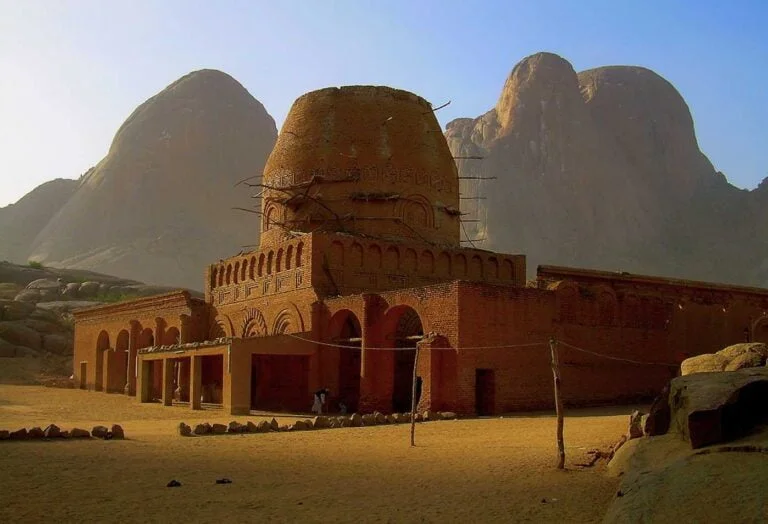
Best Places to Visit in Spain 2023
Spain, a country rich in history, culture, and breathtaking landscapes, beckons travelers with its vibrant cities, stunning beaches, and captivating architecture. From the enchanting streets of Barcelona to the sun-kissed shores of the Costa del Sol, Spain offers a diverse array of destinations to explore..
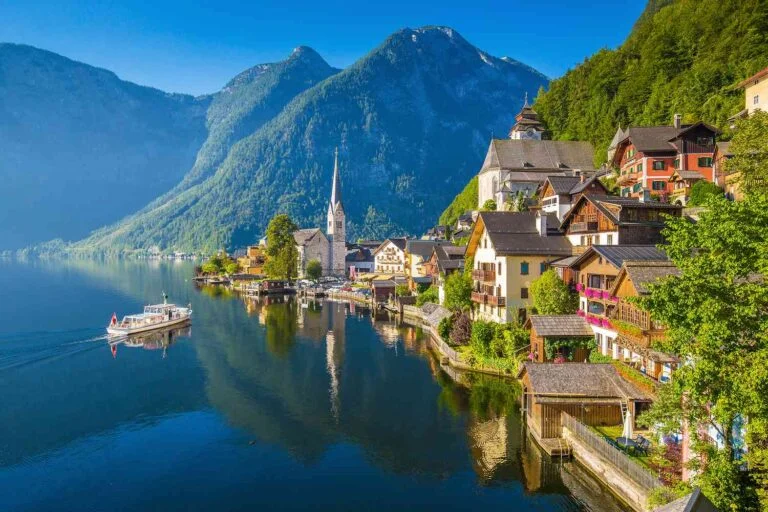
Europe: A Tapestry of Diversity, Culture and Adventure
Europe, a continent as diverse as it is beautiful, is a traveler’s dream come true. From the snow-capped peaks of the Alps to the sun-kissed beaches of the Mediterranean, Europe offers an enchanting mix of experiences for every type of traveler. Join us as we embark on a journey through the heart of Europe, discovering…

Our Top 5 Best Places to Visit in Kuwait
Discovering Kuwait: Journey Through its Hidden Treasures Hey fellow wanderlusters, let’s dive into Kuwait’s kaleidoscope of culture, where the past meets modernity. I’ve uncovered five must-visit spots for the young and adventurous traveler. From sipping on sweet tea under Bedouin tents to catching epic sunsets, Kuwait is an adventure waiting to happen. Map of Kuwait…
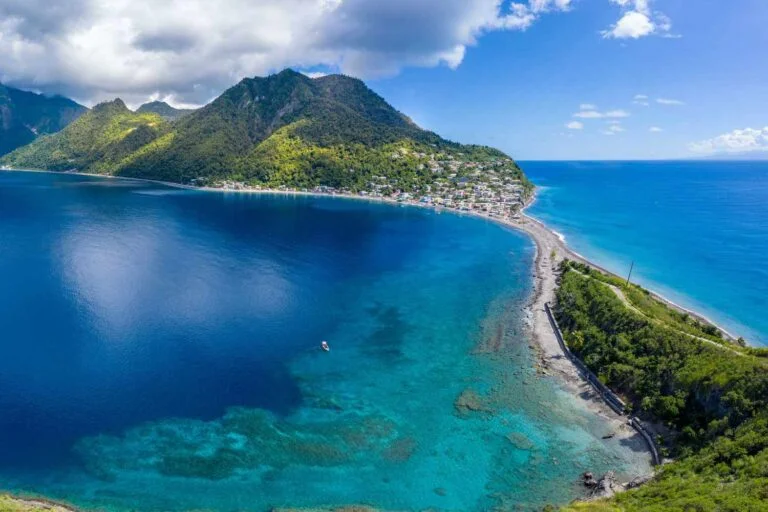
Our Top 5 Best Places to Visit in Dominica
Dominica: Where Adventure Meets Paradise Welcome to Dominica, the “Nature Island” of the Caribbean. If you’re seeking a destination that’s off the beaten path, brimming with natural wonders and adventure, you’ve found it. Here, you’ll explore lush rainforests, soak in rejuvenating hot springs, and dive into sparkling turquoise waters. Let’s embark on a journey to…

Our Top 5 Best Places to Visit in Jordan
My Journey Through Jordan’s Top 5 Destinations If you’re ready to dive into a world of ancient wonders, surreal landscapes, and incredible experiences, then Jordan is calling your name. Let me take you on a ride through my unforgettable journey as I uncovered the 5 best places to visit in this captivating country. Map of…
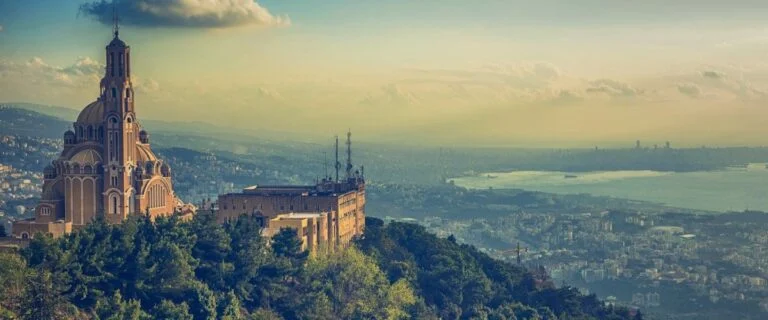
Our Top 5 Best Places to Visit in Lebanon
Lebanon Unveiled: Exploring the Mystique of the Middle East Welcome to the captivating land of Lebanon! Nestled along the Mediterranean Sea, this enchanting country is a treasure trove of history, culture, and natural beauty. Let’s embark on a journey to discover some of the most mesmerizing places that Lebanon has to offer. Map of Lebanon…

Our Top 5 Best Places to Visit in Guinea
Unveiling Guinea’s Hidden Treasures: 5 Must-Visit Places Are you ready for an off-the-beaten-path adventure in West Africa? Guinea, a hidden gem nestled between Guinea-Bissau, Senegal, Mali, Cote d’Ivoire, Liberia, and Sierra Leone, awaits your discovery. Prepare to be captivated by its vibrant culture, stunning landscapes, and welcoming people as we explore some of the must-visit…
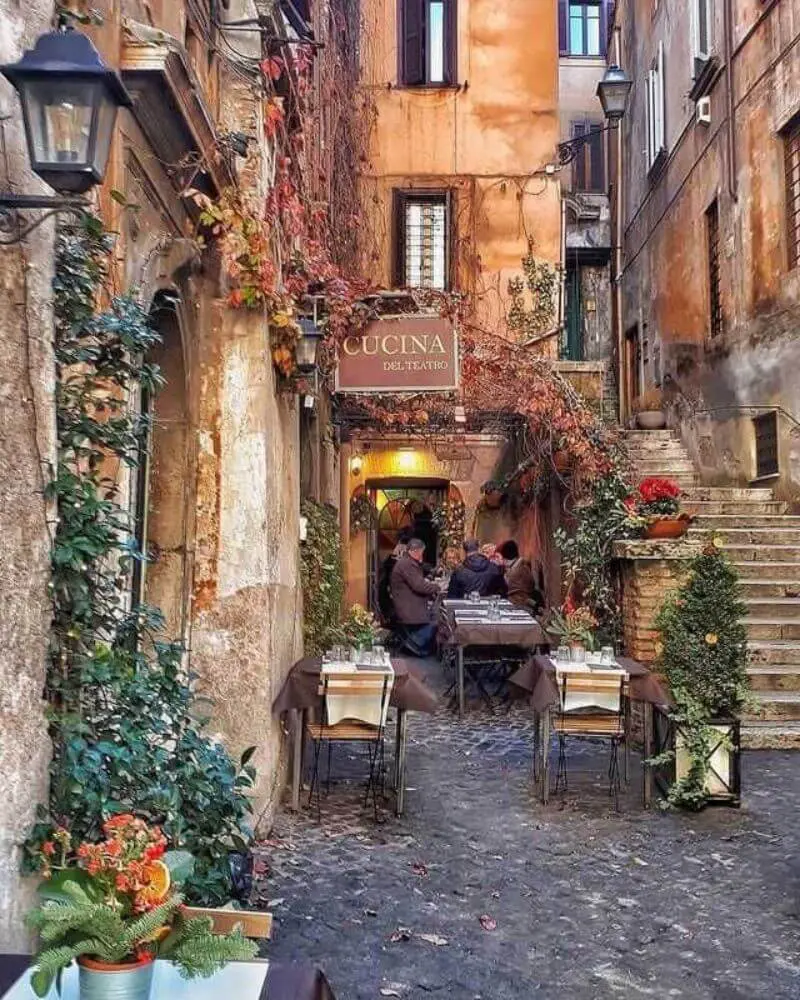
Best Places to Visit in Italy 2023
Italy, a land of romance, rich history, and breathtaking landscapes, beckons travelers with its magnetic allure. From the captivating cities adorned with timeless architecture to the picturesque coastal towns and rolling vineyards, this Mediterranean gem offers a plethora of unforgettable experiences..
Exploring Greece’s Timeless Treasures: Greece Best Places to Visit Top 10
Exploring Italy’s Treasures: The Best Places to Visit in Italy in 2023
Our 10 Best Places to Visit in Venice : Come Explore the Enchanting Floating City
Unveiling the Enchanting Beauty: Our Best Places to Visit in Florence
Our Best Free Places to Visit in New York That are yes, Absolutely FREE!
Our Best 10 Affordable Vacation Destinations if you are on a tight budget.
Our 10 Best Budget Travel Tips : Explore the World Without Draining Your Bank Account.
These are our Top 10 Best Travel Destinations Worldwide 2023
Our Absolute Best list of 10 Less Touristy Places to Travel in Europe 2023
Australia: A Traveler’s Paradise: Best Australian Destinations 2023
Our Top 5 Best Places To Visit In Sudan – By David John
5 Best Places To Visit In Sudan: Cover Image Meroë Pyramids Courtesy: te
Best Places To Visit In Sudan: flickr images licensed under CC BY 2.0
Additional images: adobe , colourbox , istock , pexels , shutterstock , unsplash unless otherwise stated .
Were our Top 5 Best Places To Visit In Sudan: helpful to you?
Let us know your thoughts in the comments below..
And if you are looking for a specific piece of information, please do comment below..
Similar Posts
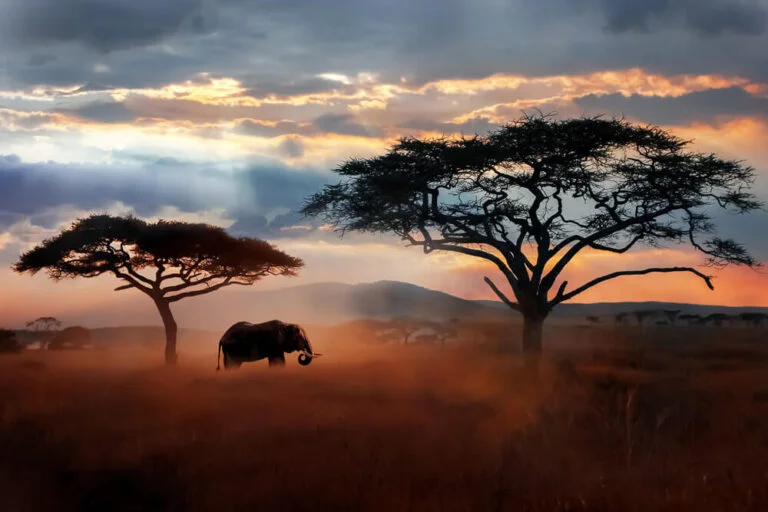
Africa: A Journey of Exploration
Discovering the Enchanting Tapestry of Africa: Africa, a continent as diverse as it is vast, beckons adventurers and dreamers alike to embark on a journey of discovery. From the breathtaking landscapes and incredible wildlife to the rich cultures and histories that span millennia, Africa offers an experience like no other. In this travel blog post,…
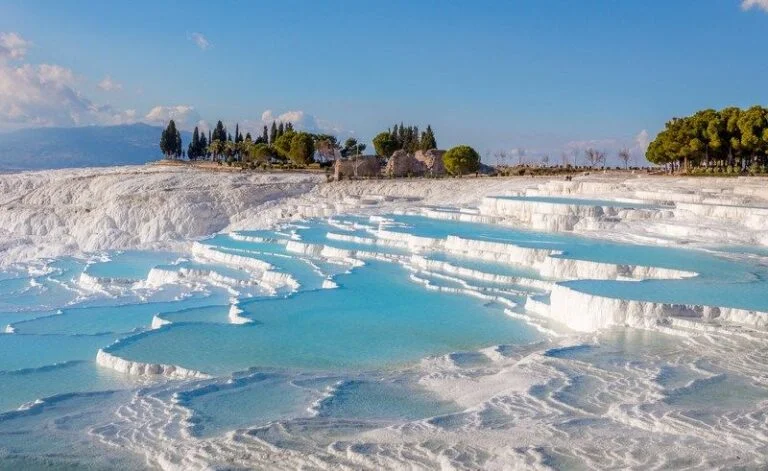
Unforgettable Travertines in Pamukkale and Hierapolis:
Pamukkale’s Travertines: A Natural Wonder of Turkey Nestled in southwestern Turkey, Pamukkale is a mesmerizing destination renowned for its captivating travertine terraces. Known as “Cotton Castle” in Turkish, the travertines in Pamukkale are a true natural wonder, with their dazzling white formations and crystal-clear thermal pools. In this blog post, we will delve into the…
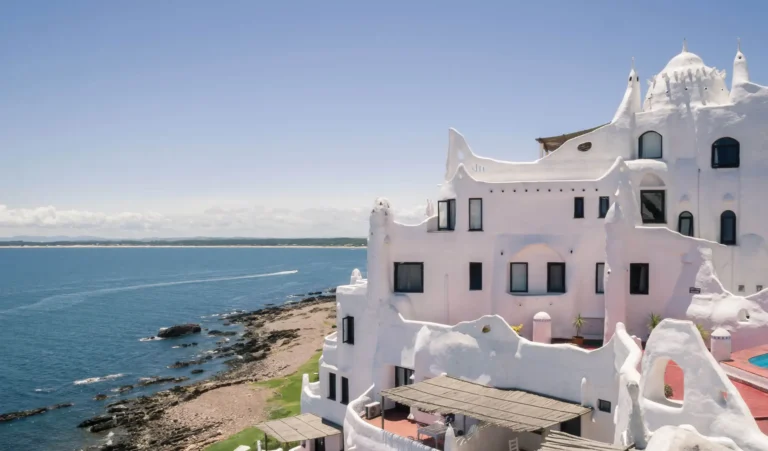
Our Top 5 Best Places to Visit in Uruguay:
Uruguay: Exploring the Top 5 Destinations Beyond Expectations Uruguay, a country often overlooked by travelers, pleasantly surprised us with its rich cultural heritage, stunning coastlines, and charming towns. As we explored this hidden gem, we uncovered the five best places that made our journey truly unforgettable. Join us as we share our personal experiences, hidden…
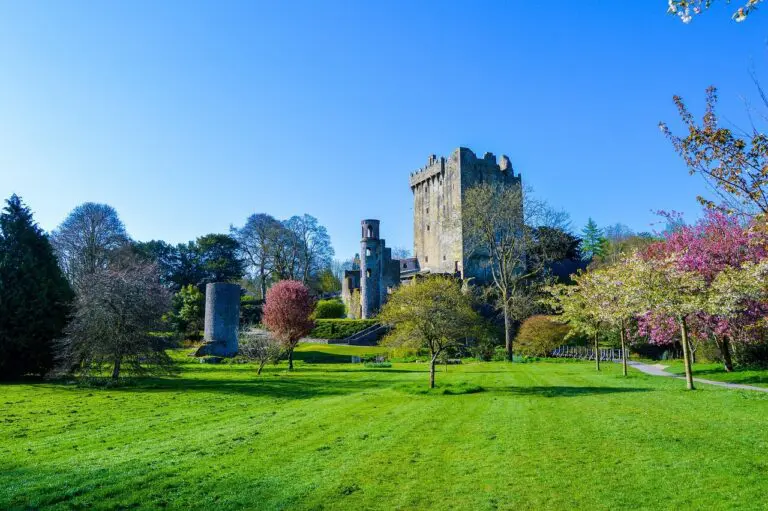
Blarney Castle Ireland: Get The Gift of Eloquence..
Have you ever wished that you could talk more freely and eloquently? The Irish call this “the gift of the gab” and you can supposedly gain this power by kissing the Blarney Stone, which is housed in Blarney Castle Ireland. This is a large block of limestone that is built into the castle, just a…

Our Top Things to Do in Maidenhead:
Our Top 6 Things to Do in Maidenhead will build lasting memories to look back on: Yes, really.. 🙂 You might be surprised to find that there are more interesting things to do in Maidenhead than you originally think. In fact, this is a fantastic, historic part of England where you can enjoy a fine time…
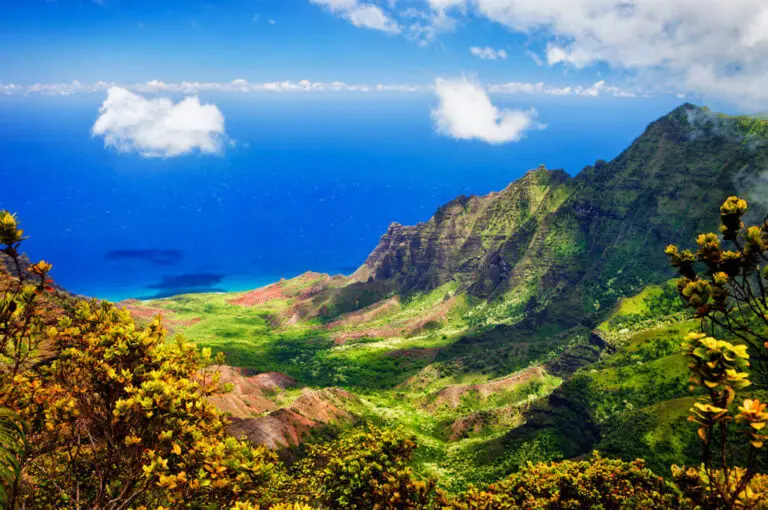
Top 13 Best Things to Do in Hawaii:
Aloha Paradise: Our Guide to an Unforgettable Vacation Aloha to the tropical paradise of Hawaii! With its pristine beaches, lush landscapes, and vibrant culture, Hawaii is a dream destination for travelers seeking a slice of paradise. From the majestic volcanoes to the turquoise waters teeming with marine life, this archipelago offers an array of unforgettable…
Leave a Reply Cancel reply
Your email address will not be published. Required fields are marked *
Save my name, email, and website in this browser for the next time I comment.
Young Pioneer Tours

21 Best Places to visit in Sudan 2024
Sudan is an absolute hidden gem when it comes to tourism, boasting more Pyramids than even Egypt. What though are the best places to visit in Sudan? Well, YPT have compiled the top 21 tourist sites of Sudan you have to visit, and yes, we go to them on our tours.
To read if Sudan is safe click here
21 – Camping in the desert
When it comes to top places to visit in Sudan camping in the desert might seem broad, but we cannot underestimate how cool it is. The best place to do this is probably on the way to Bir Tawil from Abu Hamad
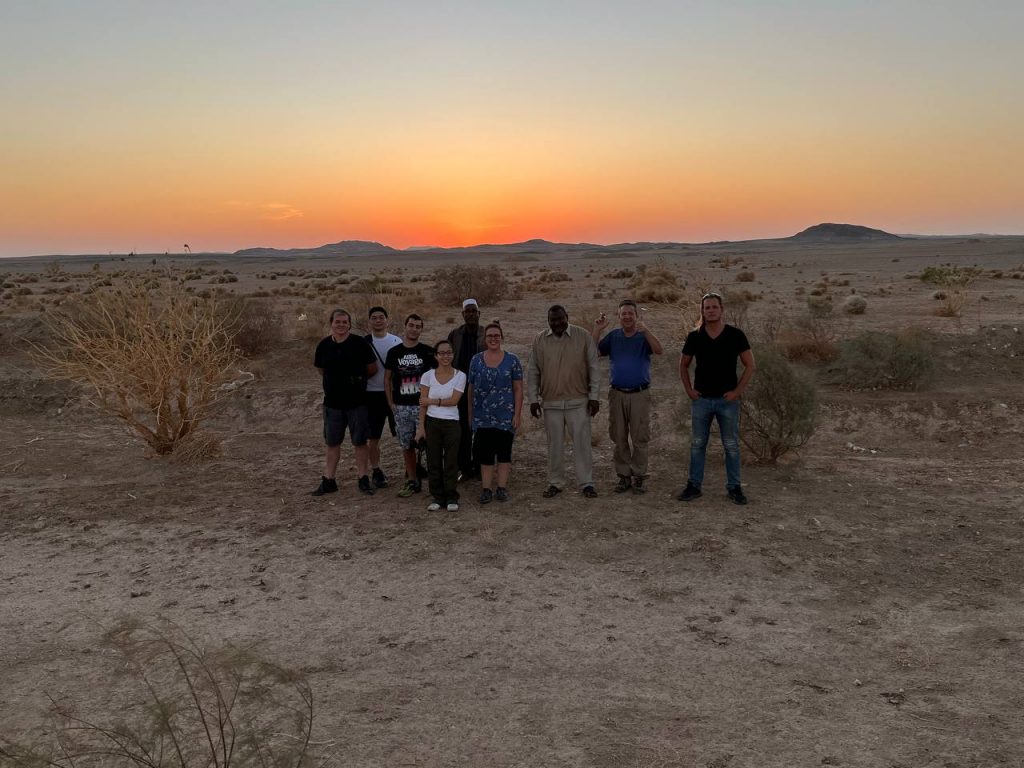
20 – Khartoum Fish Market
Not the biggest market in the world, but still one of the best places to visit in Khartoum. Fish is brought daily from Port Sudan and there is truly a great atmosphere around this bustling market.
To read about Khartoum click here
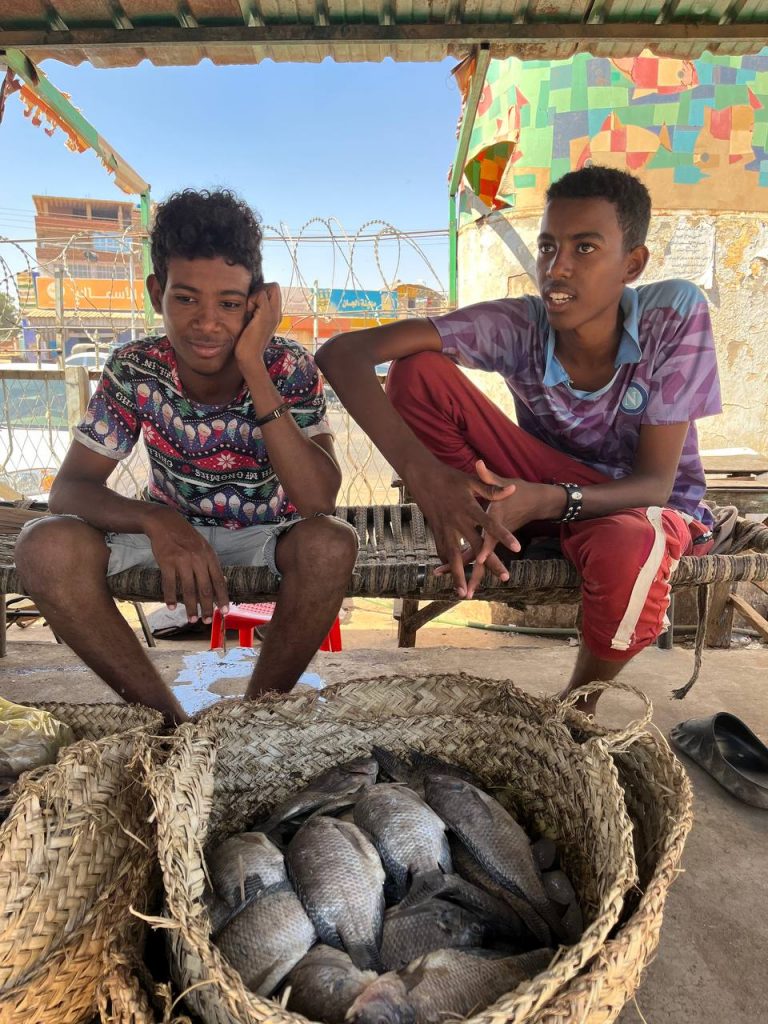
19 – Etnographic Museum
One of the best museums to visit in Sudan and Khartoum, although closed on a Monday as we later learned! Talks about the different ethnicc groups of both the Sudan’s and is genuinely interesting.
18 – Halaib Triangle
Best places to see in Sudan, well this is a controversial one as it is disputed between both Egypt and Sudan and for now at least only gettable from the Egypt side with permission.
To read about the Halaib Triangle click here .
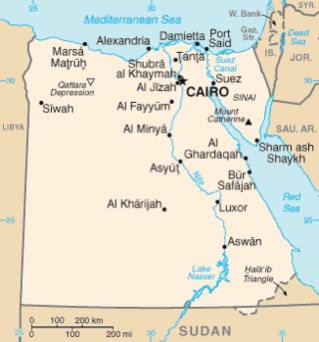
17 – Bir Tawil
Neither Egypt nor Sudan, but only accessible through YPT and indeed only gettable from Sudan. What makes this one of the best places to visit in Sudan? Remote desert, camping, guns and the bragging rights.
To read about the strange tale of unclaimed land click here
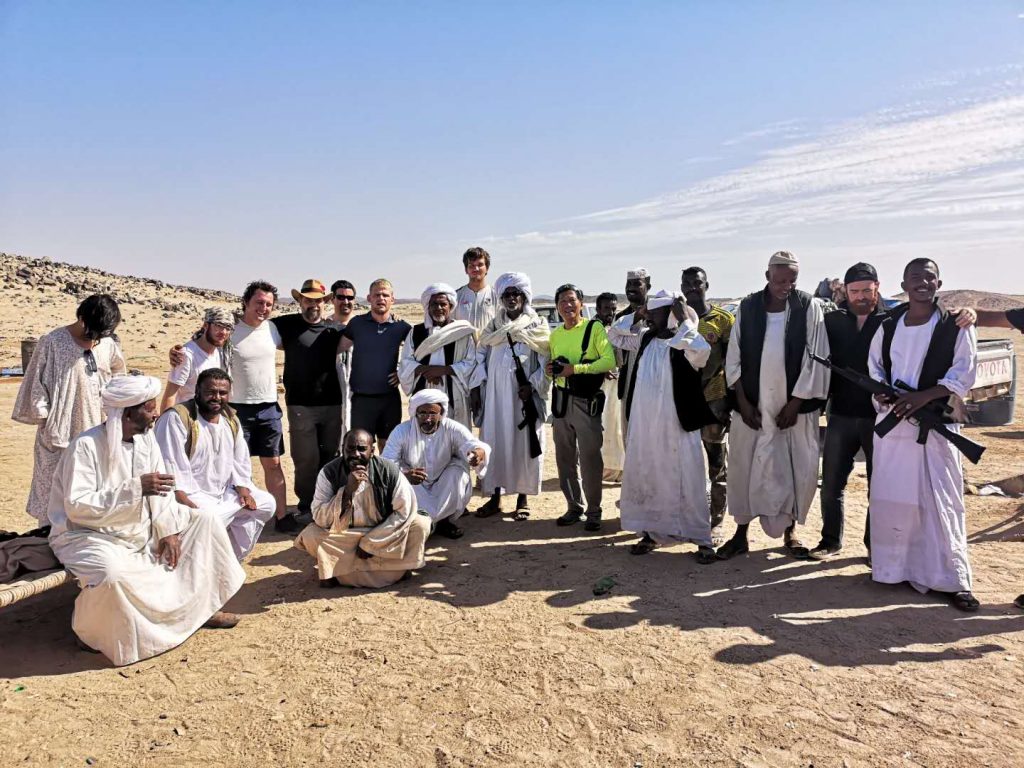
16 – Station Number 6
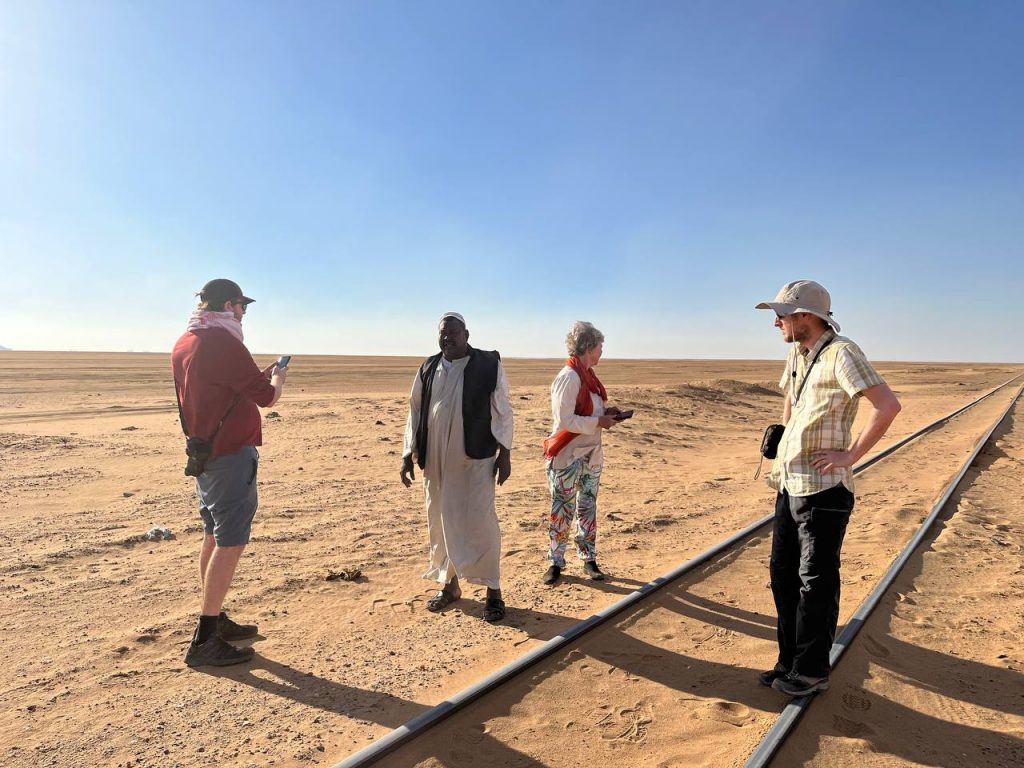
From Abu Hamas right the way up to the border of Egypt and Sudan are weird train stations that were seemingly catering for well, no one, to at best the local tribes. Station Number 6 is but one of many, but there ghost like eeriness makes them a must
15 – Abu Hamad
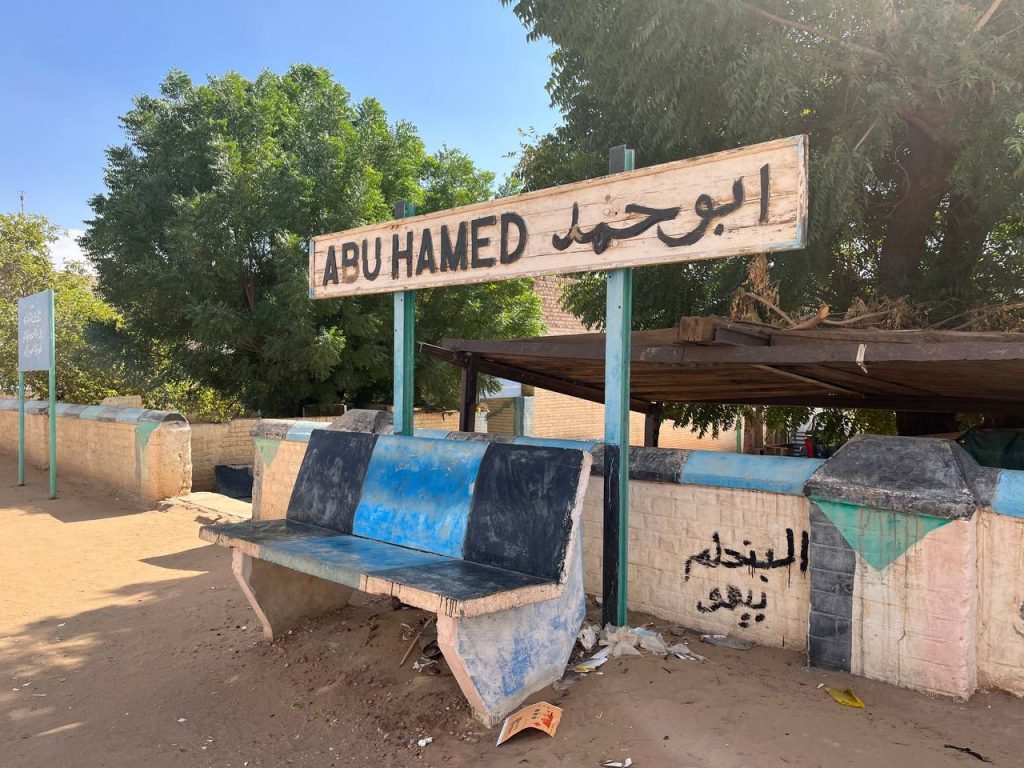
The last big stop if you are heading to Bir Tawil. One of the best places to visit in Sudan due its remoteness, street food, markets and a very cool train station. This is also the home of the Ababda nobility of whom permission must be sought in order to head north into Bir Tawil and beyond.
To read the Men in No Mans Land click here .
14 – The Gaddafi Eggno
The most deluxe hotel in Khartoum and famously a gift from Gaddafi to Sudan. Offers great views a restaurant and even takes visa, although at $8 bucks a coffee it is not cheap.
To read about the Gaddafi Egg click here .
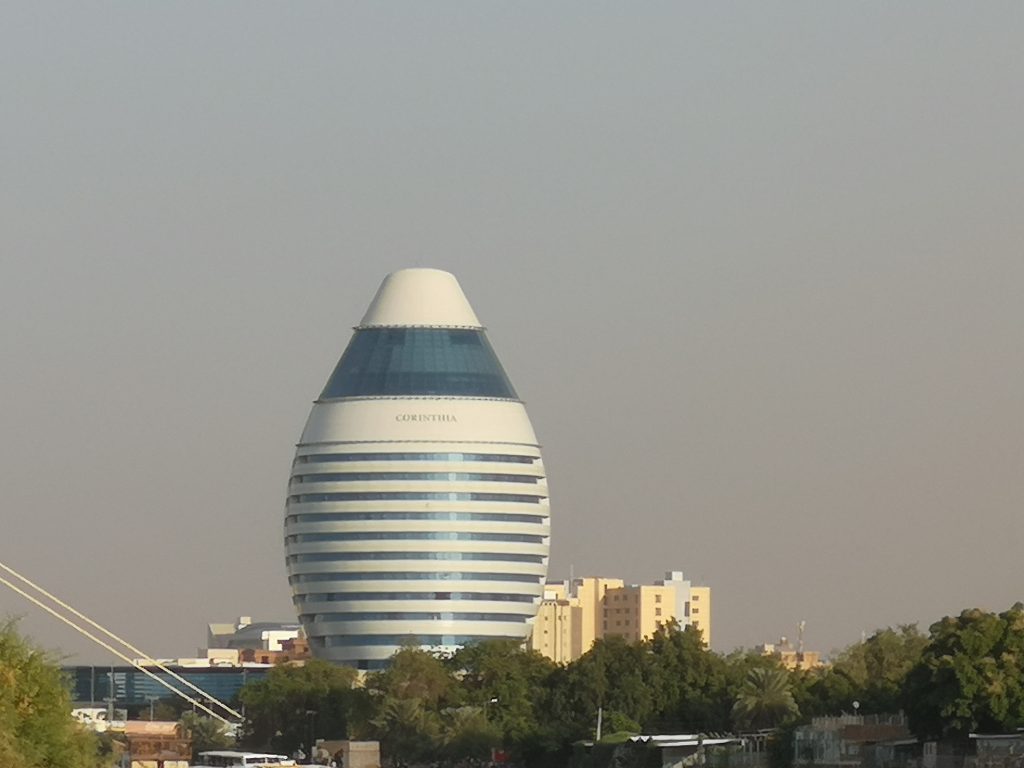
13 – Abyei
OK, so you cant actually visit here right now as it is not safe, BUT if you could you would legitimately be in South Sudan and Sudan at the same time, which for us makes this a very cool place.
Yo read about Abyei click here .
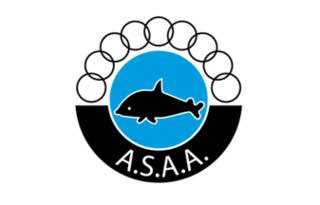
12 – Omdurman Market/Khartoum Souk
One of the best places to visit in Sudan and Khartoum. This souk is full of hidden gems for tourists, spices and cuisine for anyone looking to see what Sudanese food is like and just a great place to people watch. We lovee the Khartoum Souk!
To read about Khartoum market lick here .
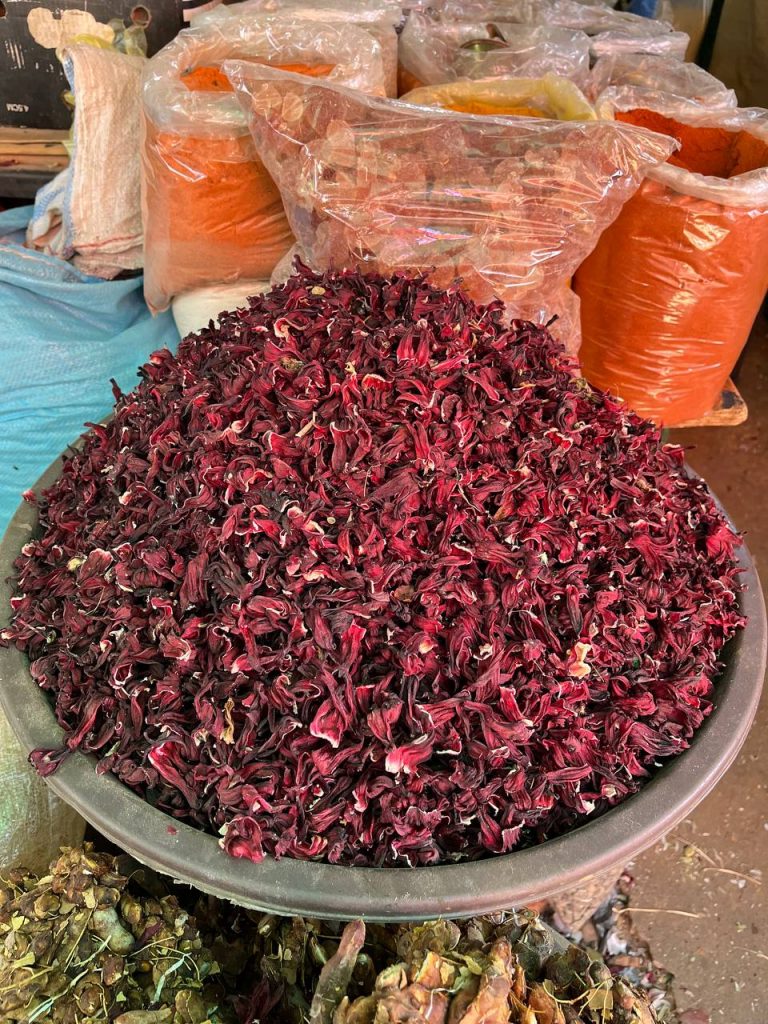
11 – Nubian House
Not exactly a pace to visit to visit in Sudan, but more a place o stay when you visiting Sudan. A great change from camping, or a dank hotel, but also a great place to seep in Nubian culture! And they tend to be big enough to afford you you your own room.
To read about staying in a Nubian house lick here .
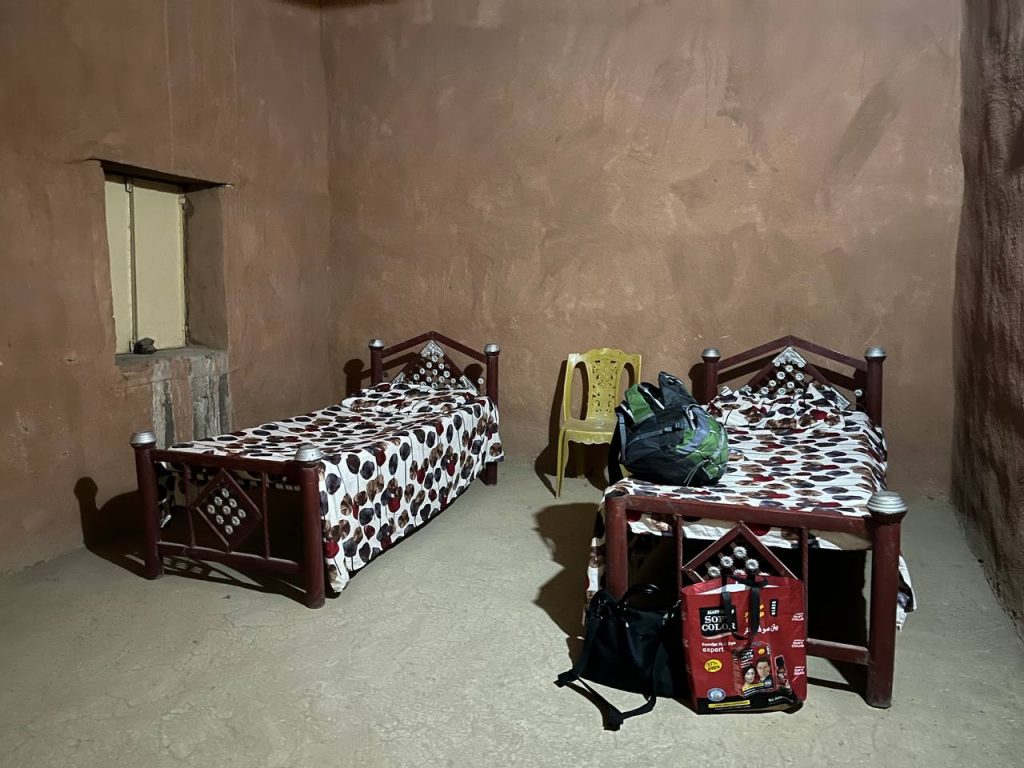
10 – A Sudanese House
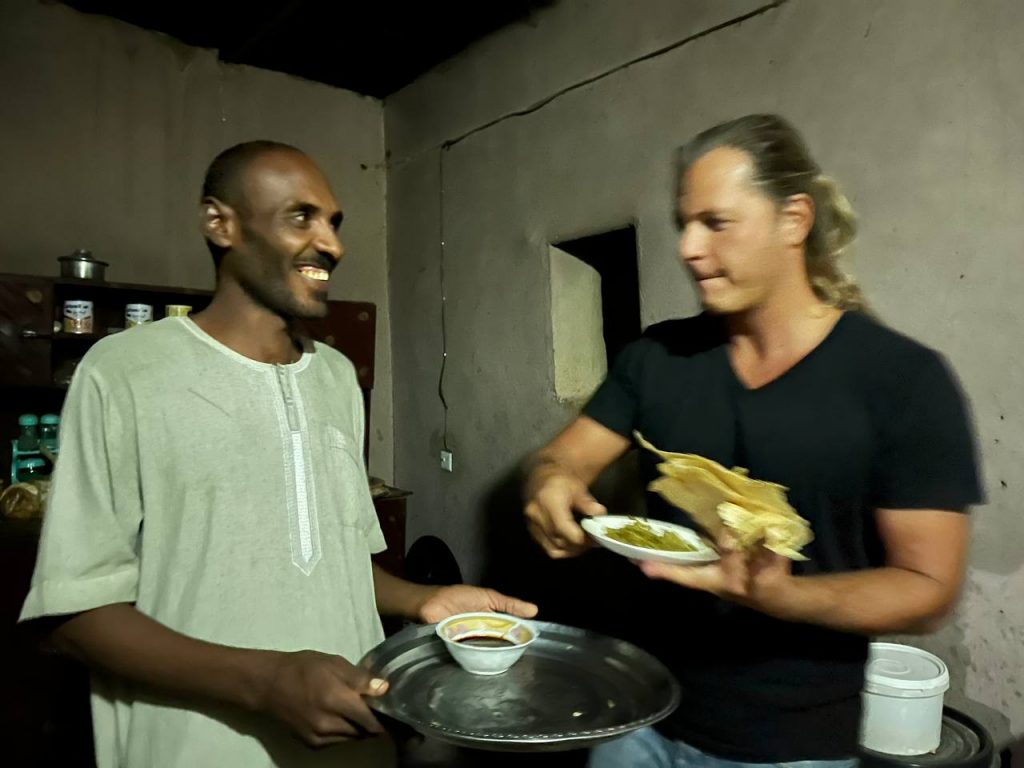
Much like the aforementioned Nubian house you can also visit a classic Sudanese house. We did this in Shendi with our local guide Abdullah. The houses are in a courtyard style, have fresh fruit growing and even have male and female quarters. A great way to sample real Sudanese life.
9 – The Camel Market
Sudan is the second biggest exporter of Camels in the world and they are a bog deal here. When it comes to places to visit in Sudan this is a must. You can see rich Arabs buying race camels down to beat up old mares going for meat in the Cairo markets. A great day out.
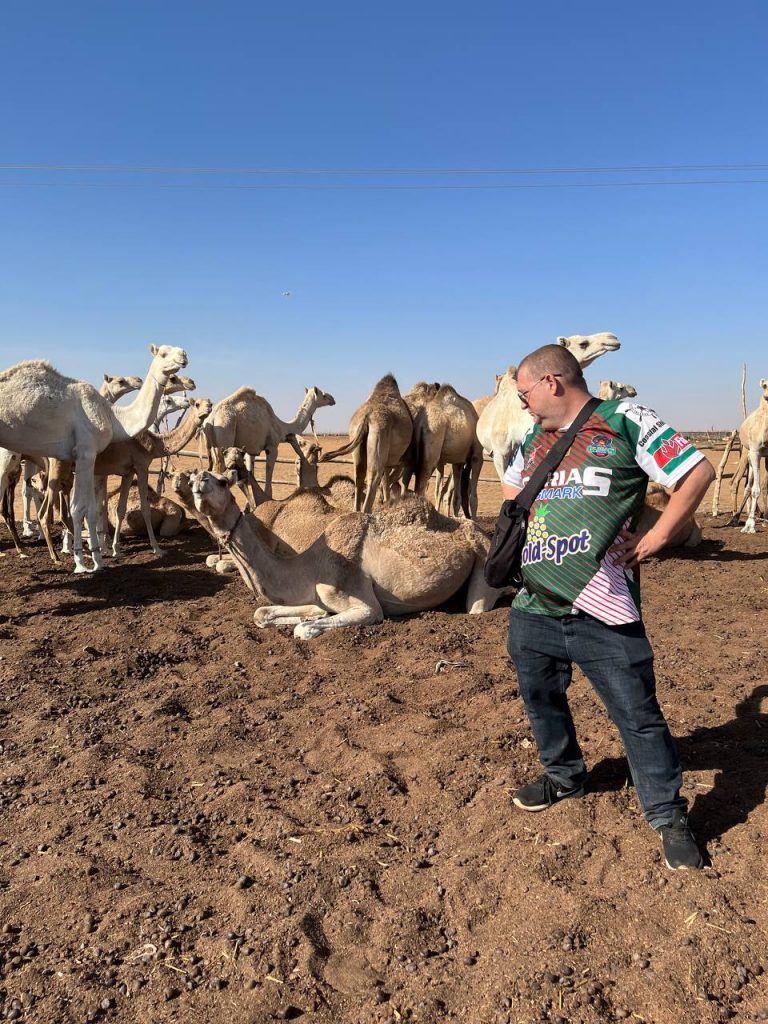
8 – Mathew’s Cathedral Khartoum
A fabulous Catholic Cathedral that is very welcoming to visitors. Aside from the beautiful façade, this place also represents the new religious freedoms being afforded to the more than 4 million Christians of Khartoum. I is also located opposite the Khartoum Yacht Club, which is worth in itself, if only for how freakishly ghostly and out of place it is.
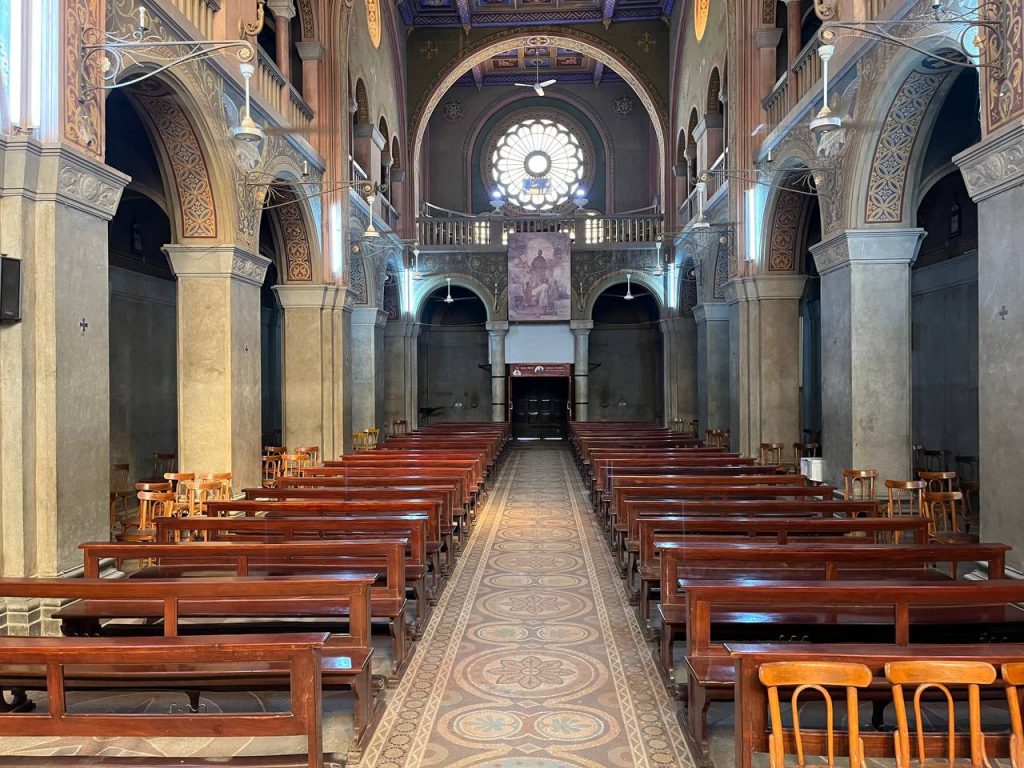
7 – The River Nile!
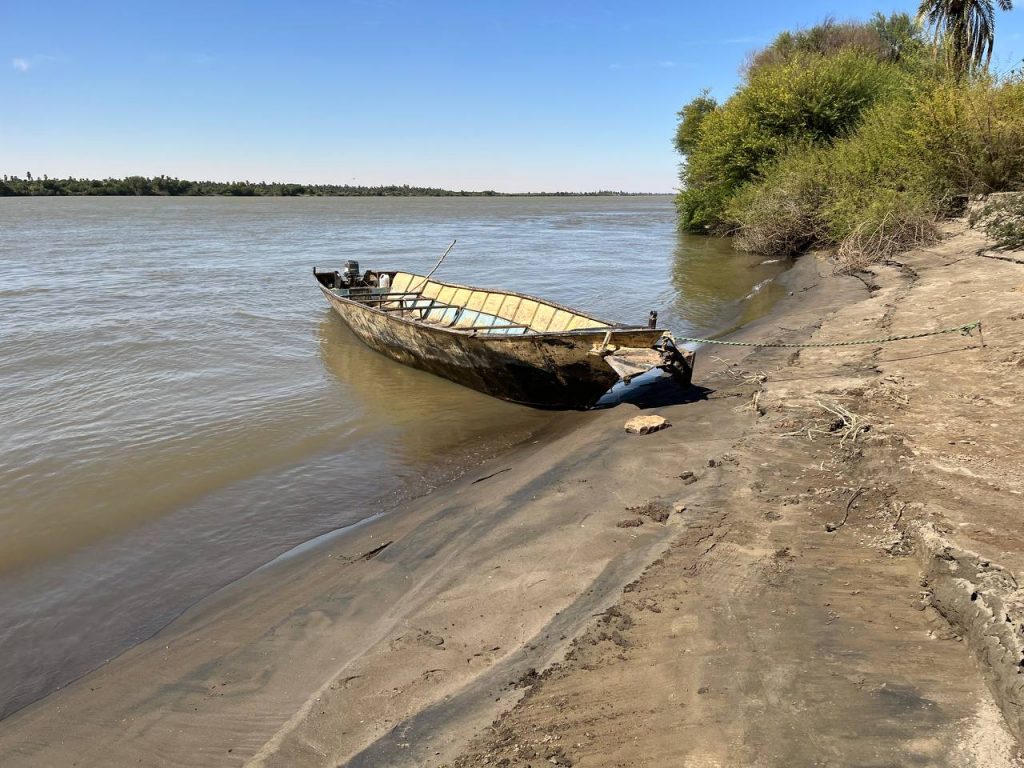
Kind obvious when we talk about places to visit in Sudan, but the River Nile is epic. There is no set place we would suggest, but everything from taking a ferry accrues, to joy rides in boats and even camping at a resort all make the Nile a must Another top tip, head to Tutti Island where the Blue and Whit Niles meet,
6 – Ad Dabbah/ Old Dongala
This place is known as the Graveyard and Qubbas and consist of actual graves, as well as some some very creepy pointy dome type things that one can walk into. Beware os the bats and the scorpions!!! Really interesting site related to Nibian, Sudanese and Egyptian history and culture.
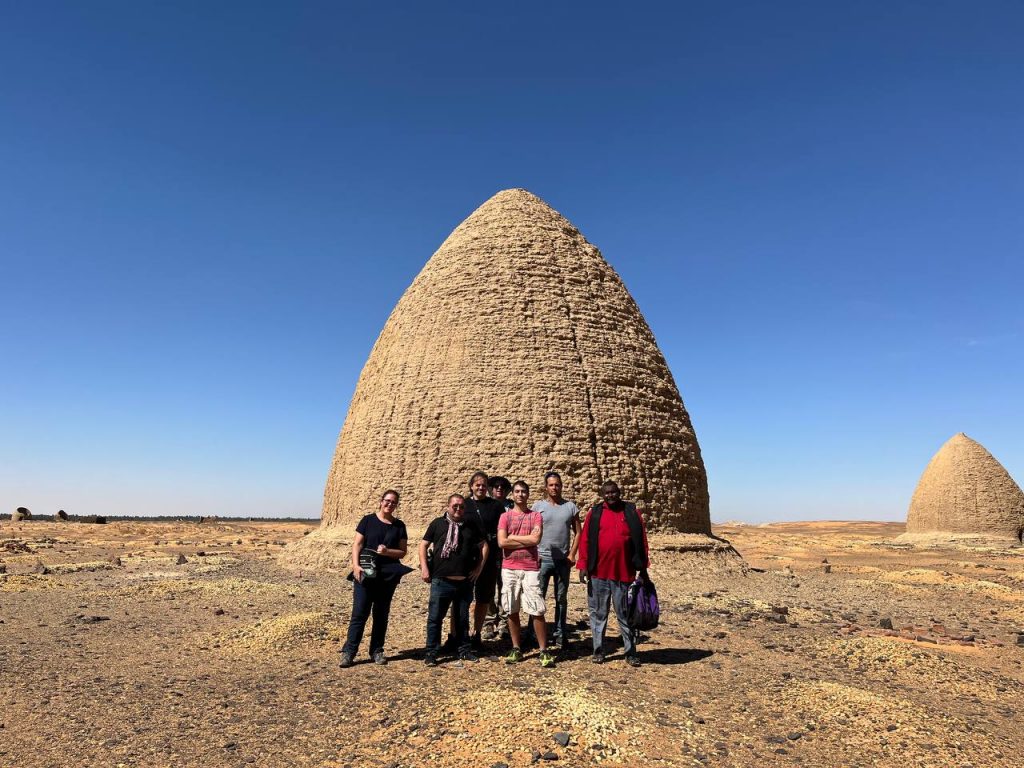
5 -Port Sudan
Alas the one place on the list we do not as of yet visit, but that does not mean it is not important. The beating heart of the Sudanese economy and a place you can even take the ferry to Egypt from, if and when ir is running of course. A place we hope to have on future tours.
4 – Khartoum
OK, so we have covered many parts of Khartoum from the market to the Gaddafi Egg, but it merits its own entry. Everything from Mosques to Churches, museums and even the protestors. This is the beating heart that makes Sudan such a unique tourist destination,
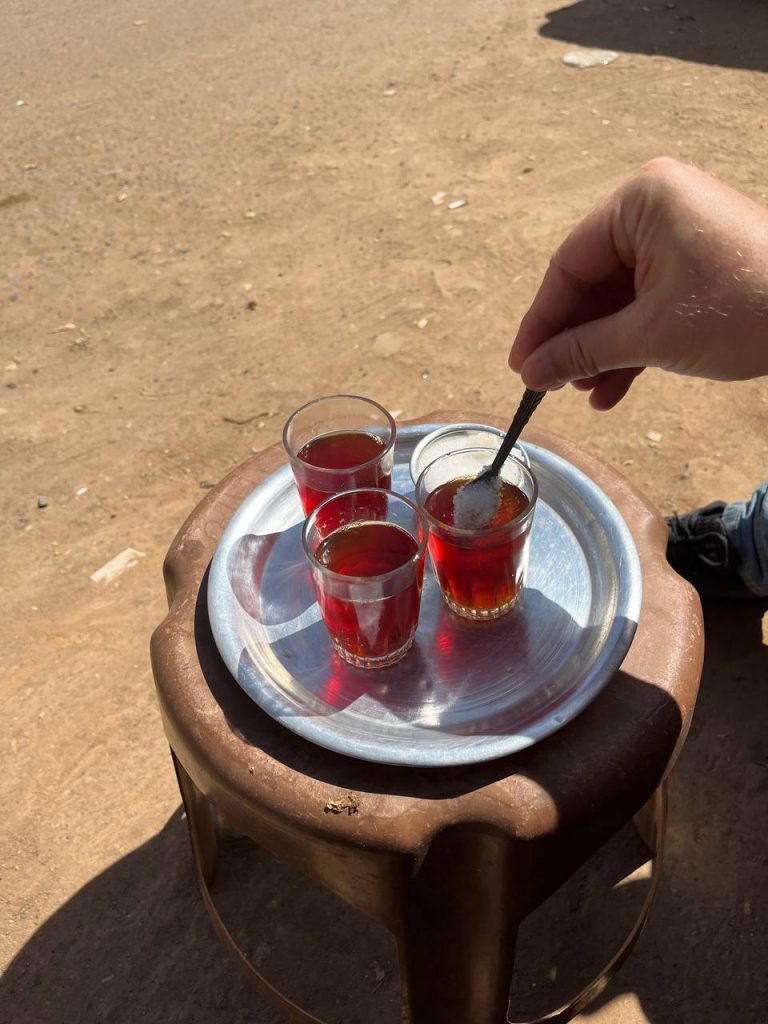
3 – Temples of Soleb
The first stop on our tours to Sudan, these temples are not only unique but beg the question how and why are they here? A true testament to what makes Sudan an untouched tourism gem. Get here for sunset, our pictures do not even do it justice.
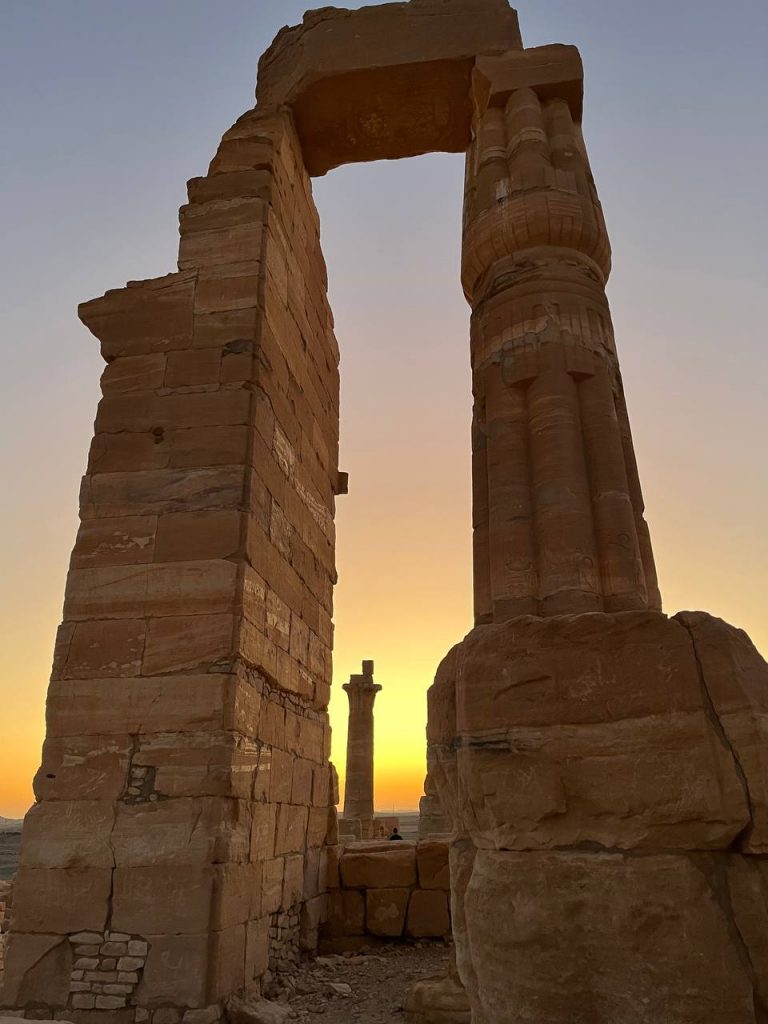
2 – Kerma
Karima is home to Jebel Markal a huge rick formation that allegedly offers the best view in Sudan. A real cool place with lots of tourist attractions, the River Nile and greta natural beauty. A firm favourite when it comes to places to visit in Sudan.
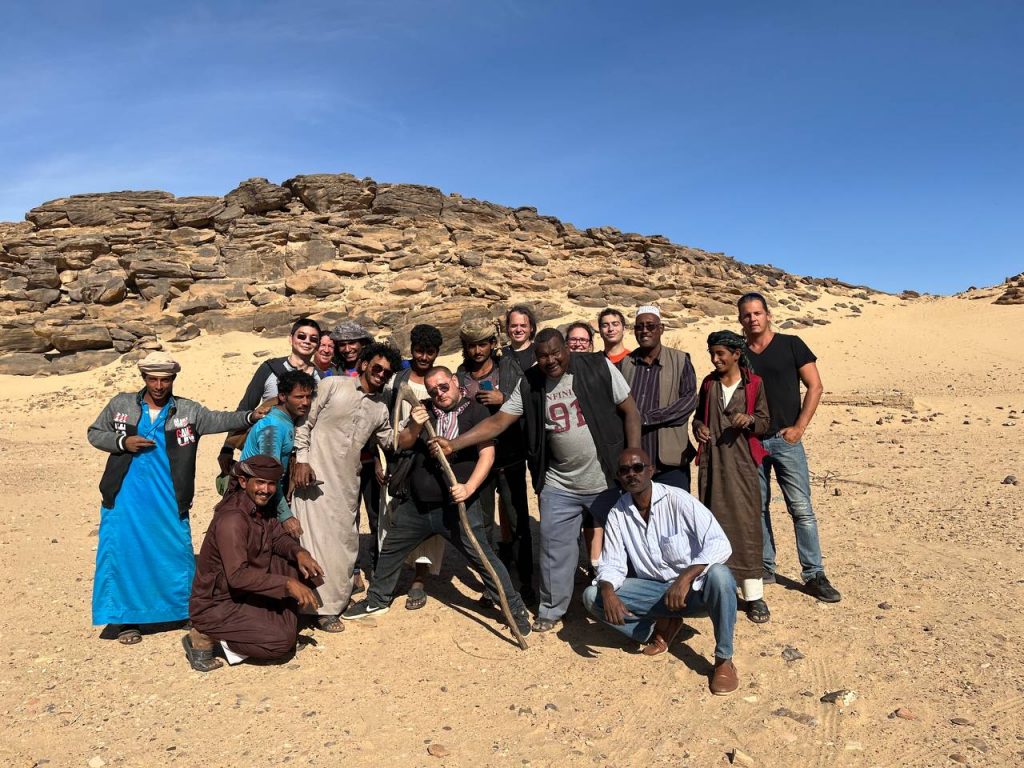
1 – Pyramids of Meroe
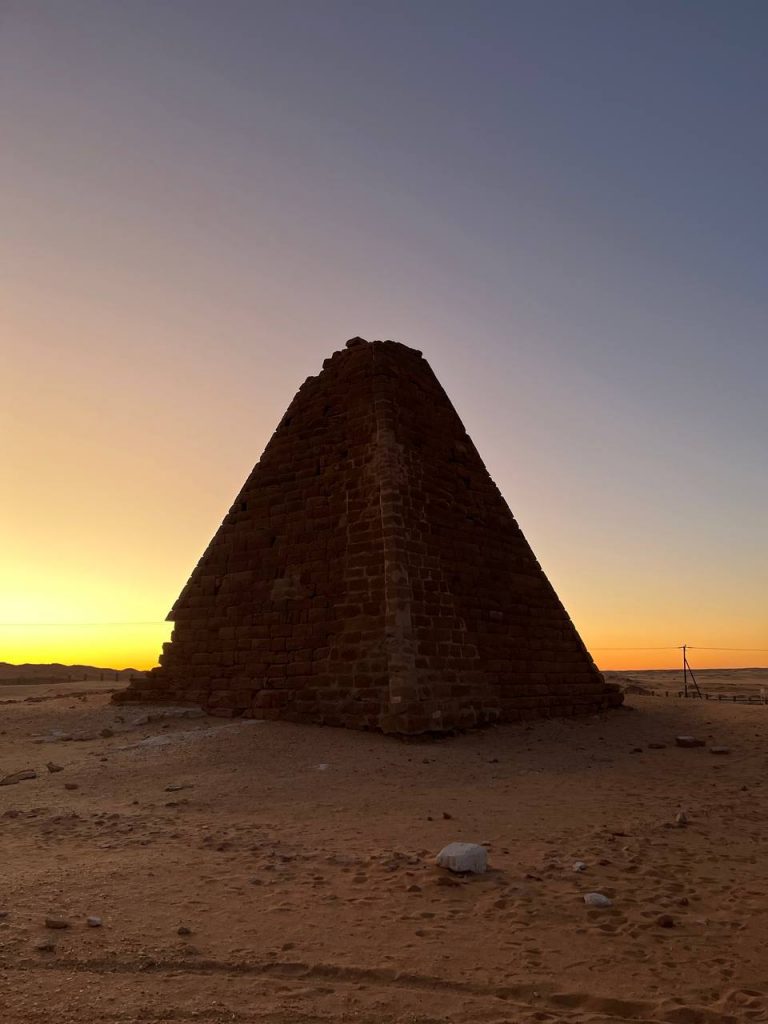
Actually located on three sites the Pyramids of Meroe are the tourist attraction in Sudan. Not as opulent as those of Egypt this is some ways makes them even more interesting. This is real history and also proof Aliens did not build the Pyramids……
You can not only see 5000 year old hieroglyphics here, but also camp next to a pyramid without the hordes of Egypt. The best place to see in Sudan in our very humble opinion.
So, do you like our picks, or feel we left any out? The only way to see it for yourself is to join our next tour – which you can see here .
And those are the 21 best place stop visit in Sudan, but who knows, we may even add more to this list – inshallah
About Post Author
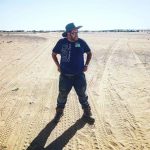
Gareth Johnson
Gareth Johnson is the founder of Young Pioneer Tours and has visited over 180+ countries. His passion is opening obscure destinations to tourism and sharing his experience of street food.
See author's posts
- Suspendisse tincidunt nunc nec
Tripadvisor
Latest news.

Thailand extends its visa policies from June 2024

YPT group attends epic Rammstein concert in Belgrade on May 24th 2024
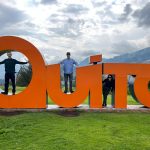
Ecuador Travel Update – May 2024

An American in South Korea Heads North (Part 1)
- Terms & Conditions
- Payment Policy
- North Korea Tours – 2017 Tours
- Tour Extensions
- Independent Tours
- North Korea FAQ
- Our Terms and Conditions
- Our Payment Policy Terms
©YoungPioneerTours.com 2024. All rights reserved.

Top 10 Places To Visit In Sudan
Following are the best 10 places to visit in Sudan, which will make your trip memorable::
1. The Nubian Pyramids
By the word pyramids, the images that come up to mind are the great massive structures of Egypt. Built 800 or so years later after Egypt with the same kind of expertise the pyramids of Meroe in the Nubian desert in Sudan are little known. These pyramids are much smaller in size, brick-built too. These were built during the local Kushite kingdom. Though not massive in size a tourist can receive a visual jolt when he or she witnesses such amazing structures in the desert over a certain region.
2. The Red Sea
The parting of the Red Sea in the Bible is known by almost everybody in this planet. So all tourists pay a visit to this magnificent blue-green water body in Sudan. The coral riffs have added extra shade to the beauty of the Red Sea. There are good arrangements here in this place so that a tourist can stay and enjoy. There is an arrangement for diving and enjoy the beauty of coral riff underwater also
Kassala is a market town in the east of Sudan, near the border with Eritrea. It’s not as commonly visited as the towns and archaeological sites along the Nile, but if you have the time and enjoy traveling off the beaten path it’s worth the 7-hour bus journey from Khartoum. Kassala is known for its ethnic blend as tribes from near and far come to trade at the market, and for its dramatic location at the base of the distinctive Taka Mountains.
Another great ancient relic left on the meanders of the Nile River from the civilizations of old, Kerma promises to be an experience like no other in the country. At its center rises the soaring and mighty Western Deffufa – one of the largest and oldest adobe worshipping houses on the planet! And once you’re done getting over the sheer awesomeness of that centerpiece, you can move to tour the seemingly endless array of ruins that surround it (one of the largest in all of North African, in fact).
5. The Ruins of Musawwarat es-Sufra
Situated 180 km from the city of Khartoum these amazing and enigmatic ruins in the middle of the desert can be dated back to the 3rd century BC. There are varied opinions among historians and archeologists about the exact purpose of these ruins. Suggestions have come in form of pilgrimage spots, medical centers, educational institutions as well as a training centers for elephants in ancient times.
6. Dinder National Park
No visit to an African nation is complete without a visit to a wildlife park. While staying in Khartoum you can visit Dinder National Park near the Ethiopian border. This place is one of the biggest game reserves in the continent. This national park is said to contain 27 different species of animals which include big predators also. There are many species of birds that include migratory birds too.
7. Sanganeb National Park
The first and only oceanic national park in all of Sudan, the Sanganeb National Park is made up of shallow reef habitats that showcase the sheer biodiversity of the Red Sea in all its glory. The protected area is adjoined directly to the jetties and harbors of Port Sudan, making it a very accessible place to visit.
Perched over 1,000 meters above the crashing waters of the Red Sea, the resort town of Arkawit is the perfect escape for travelers finding it hard to handle the soaring equatorial temperatures of the Sudanese coast. With the soothing breezes of the highlands at hand, visitors can take some time to kick back and relax in rustic guesthouses, enjoying the green-hued hills and rocky landscapes that abound around the area.
9. Jebel Marra
Rising in sinewy ridges atop the dusty plains of Darfur in the western reaches of Sudan, the Jebel Marra are perhaps the original African badlands. They are carved and chipped massifs of ancient volcanic stone that have been forged from eruption after eruption over the millennia. The most recent additions to the landscape are a colossal water-filled caldera known as the Deriba Crater, which is thought to have appeared following the pyroclastic flows of an explosion in 1,500 BC.
10. Jebel Barkal and Temple of Mut
Jebel Barkal is a small mountain popular for its great views and for sunset climbs (bring a light for the way down). At its base, there is a cemetery and ancient ruins of the Temple of Mut.
Check out more Places to Visit
- Yambio, South Sudan
- Torit, South Sudan
- Southern National Park, South Sudan
- Akobo, South Sudan
- Meroe Pyramids, South Sudan
- Rumbek, South Sudan
- Wau, South Sudan
- Nimule National Park, South Sudan
- Kapoeta, South Sudan
- Bandingalo National Park, South Sudan

- 7 Special Services
- 2 Sightseeing
- 3 Activities
- 8 Places to Visit
- 5 Transportation
Newsletter Signup
Special offers.

- Media & PR
Sign up for the newsletter!
Email address:

- My Ultimate Travel Bucket List
- 2018 in Review: About Travels, Career and Personal Changes
- Looking back on 2 years of Travel Blogging: My honest Review!
- 2019 in Review: Highs, Lows and Stability!
- 2020 in Review: The year that changed everything!
- United Arab Emirates
- Czech Republic
- United Kingdom
- Product Reviews
Backpacking Sudan Travel Guide: Highlights, Safety, Budget + Tips!

- share
- save
Let’s be honest – a backpacking Sudan trip is probably something that only a few backpackers and tourists have in mind. We know too little about this African country, the security concerns are too big. In fact, Sudan has a turbulent political past with the civil war and the subsequent secession of South Sudan. Accordingly, probably no one sees Sudan as a typical backpacking destination and my Sudan travel plans have (as so often) left people with disbelieving faces.
I decided relatively spontaneously to go start my backpacking Sudan trip. I wanted to travel to Africa once again, first I only considered backpacking Ethiopia. But I also was interested in Egypt’s incredible sights. Finally, a look at the map made me ponder whether these two destinations could not somehow be linked – but in between was Sudan! After a thorough Internet research on security, visa issues and the sights in Sudan, I decided to start my backpacking adventure in Egypt and travel from there over land to Sudan and further into Ethiopia.
• Everything you need to know about backpacking Africa • My guide for backpacking Ethiopia • The ultimate guide for backpacking Egypt • All information about backpacking Morocco • The highlights when backpacking Kenya
By the way, in this video you can find the highlights of my Sudan Backpacking trip:
The best backpacking Sudan travel tips
In the following, I would like to give you some important Sudan travel tips, so that nothing goes wrong with your backpacking Sudan adventure.
Travel tip #1: Sudan Security – A backpacking Sudan journey is safe, as long as you avoid certain areas
Security concerns are probably the main reason that keeps many people from backpacking to Sudan. The civil war and the subsequent secession from South Sudan makes it easy to stamp the country completely as a war zone. But as always, it is worth to take a different look at Sudan.
If you’re traveling from Egypt to Sudan, your backpacking trip will take you along the Nile, from Wadi Halfa to the ancient pyramids of Jebel Barkal and across the desert to Khartoum. As a result, you are in the northeast of the country – and this part of Sudan is completely safe to travel. In fact, I felt safer here than in Egypt or Ethiopia. Especially since people are incredibly friendly and no one wants to rip you off or scam you here.
However, what you should clearly avoid is a trip to the south and west of the country, especially the border region to South Sudan and Chad. Although foreigners are not targeted in particular, this region is quite problematic – and there can be incidents if you’re in the wrong place at the wrong time. Personally, I consider the northeast of the country as very safe and can definitely recommend a Sudan trip along the Nile. The other mentioned regions should be avoided when backpacking in Sudan.
In case you’re curious: South Sudan is very unstable at the moment and it is not advised to travel there – especially not overland.

Sudan travel tip #2: Get information about the Sudan visa and the necessary registration
You need a visa for your Sudan backpacking trip. Thr easiest and cheapest way to get this one was (until recently) Aswan, Egypt. However, according to new information, Cairo might be the best way to get your Sudan visa. You also need to register your visa when you arrive in Sudan at the police station.
You can find all detailed information about the Sudan visa and the registration here!
Travel tip #3: Bring Enough Cash (Dollars $) on your Sudan backpacking trip
Very important – bring enough dollars on your backpacking Sudan trip. ATMs are difficult to find in the country. In addition, the official exchange rate differs significantly from the unofficial exchange rate on the black market. That’s why you should not exchange your dollar notes in official banks. You would make a huge loss.
So how do you get money in Sudan? It’s easy – everywhere in the country (especially in Wadi Halfa and Khartoum) you can exchange money on the street and in small shops for the unofficial exchange rate. This sounds weird at the beginning, but it is totally unproblematic and safe. The people were always honest, nobody wanted to rip me off.
By the way, the exchange rate in Sudan is constantly changing and increasing. In February 2018, you received $ 1 SDG for $ 30 while the official exchange rate was $ 1 = $ 7 SDG. The difference is huge. As the unofficial rate changes very fast, I recommend just asking a few different people about the exchange rate. At an official place, you’ll only get a fraction of it and your trip would suddenly be a lot more expensive.
UPDATE September 2019: Apparently, by now the official exchange rate is 1$ = 45 SDG, while you can even get 1$ = 67 SDG at the black market! As you see, things change quickly so make sure to ask around and get up-to-date information once you’re there.

Travel tip #4: Backpacking Sudan is unbelievably cheap
Sudan is probably the cheapest travel destination I’ve ever been to. The dollar exchange on the black market and the generally low cost of living make backpacking in Sudan incredibly budget-friendly. A hotel room (low standard) costs you about 2-4 €. A bus ticket from one city to another about 2-3 €. We ate (for two!) for 70ct. You see – Sudan is extremely cheap and your journey will only cost you little.

Backpacking Sudan travel tip #5: You will get tired of the Sudanese food eventually
The food in Sudan will probably not be the highlight of your Sudan trip. The standard meal you’ll get anywhere is foul – a porridge of beans and oil, eaten with flatbread and sometimes topped with egg. The locals in Sudan eat this day after day – in the morning, at noon, in the evening. And that’s how it will be for you as well. I barely saw fresh vegetables and fruits anywhere. You can sometimes buy grilled chicken, but I avoided it for reasons of hygiene. Therefore, get ready for a foul diet. Don’t worry, the food in Sudan does not taste bad, it is just always the same …

Travel Tip #6: The infrastructure for a Sudan trip is surprisingly good
I was very surprised about this. Actually, I had expected that it would take incredibly long and be challenging to travel through Sudan. However, since the country is largely flat and consists of desert, there is basically a single, surprisingly good main road that runs from the border of Egypt along the Nile and up to Khartoum. On this road, you can travel surprisingly fast.
The means of transportation in Sudan are colorfully decorated and often overcrowded minivans that travel from one place to another and start as soon as they are full. There is no exact timetable here and it can often take a while to get started. Be patient!
By the way, you can also hitchhike through Sudan! I did this to continue to Khartoum after visiting the impressive Meroe pyramids (located on the main road but away from any civilization). Sometimes you need a bit of patience, but sooner or later a bus or truck will take you. The people are incredibly friendly.

Travel tip Sudan #7: Buy a mobile SIM card in Sudan
The bad news: Wlan does basically not exist in Sudan (apart from a few expensive hotels in Khartoum).
The good news: You can easily buy a cheap mobile sim card for Sudan. Keep in mind that you have to register the sim card with your passport in the shop, but this is all easily done without any problems. And you’ll have 4G Internet access on your entire Sudan trip – even in the middle of the Sahara. I was very surprised about the good network. There are different providers, I had MTN and thus a very good experience.
Backpacking Sudan travel tip #8: The hospitality in Sudan is incredible
There are only a few countries in the world where I have experienced such hospitality as in Sudan. The people are all extremely warm, curious and happy to see visitors in their country. Unlike Egypt (where I had quite a few negative experiences with the locals), the Sudanese always make you feel welcome.
I was regularly greeted and addressed by strangers, I was invited for tea or food. If I wanted to pay for my own tea / meal, it was gratefully rejected, and people insisted to invite me. Not a single person was rude or unfriendly, everyone I met was helpful and open. Believe me – the hospitality in Sudan will be the best experience of your backpacking trip.

Travel tip #9: Take enough time for the great places to visit in Sudan
Sudan has a lot to offer, and those who think that there are only sand dunes and desert are wrong. The landscape around the Nile is incredibly green! In addition, Sudan has more pyramids to offer than Egypt. Since not many people travel to Sudan, you will have most of Sudan’s attractions for you alone. Further, you shouldn’t only tick off sights, but also take the time for a walk through the villages, to get a good feel for the country and the people. To travel from Wadi Halfa to Khartoum, I recommend you plan about a week – with this, you’ll have plenty of time to stop on the way.

Sudan travel tip #10: Use couchsurfing in Sudan’s capital Khartoum
While most places in Sudan are quite manageable and easy to explore, Khartoum (with nearly 10 million inhabitants in the metropolitan area!) is rather overwhelming and difficult to navigate. Here it is worthwhile to get help from locals. Khartoum has a small but active couchsurfing community and you can make good use of it. The locals are extremely interested and happy to show you their city. Like this, you can get to know the real life in Sudan and gather great personal experiences on your backpacking Sudan trip.
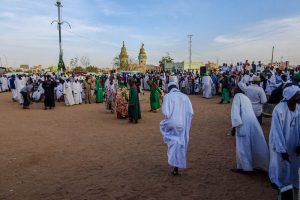
Travel Tip #11: Combine your backpacking Sudan adventure with an Egypt and / or Ethiopia trip
Most backpackers in Sudan will probably not “only” travel to Sudan. The country can be perfectly combined with a trip around Egypt and / or Ethiopia. You can easily cross the land borders and experience a great Africa overland trip.

Travel tip #12: Expect a language barrier in Sudan
Unfortunately, it is often difficult to communicate with the Sudanese. Some people speak English, and this is usually enough to get along in the country. However, you will surely come across some language barriers and have to communicate with hands, feet and Google Translate. Do not worry – in the end it will work out somehow!
Travel Tip # 13: A backpacking Sudan trip is not luxurious
In most places in Sudan (or anywhere else outside of Khartoum) you will only find a few hotels and accommodation options to choose from. Also, there are very few mid-range accommodations for a medium budget. In Karima, for example, you can stay at the luxurious Nubian Rest House for $ 220 (!) Or at the local Al-Nassar Hotel for $ 4 (!). This will be the only choice you’ll have. In the latter, you still get a private room, but you won’t find hot water or other luxury.
You see – if Western food, fast WiFi and hot water are your top priority, a backpacking Sudan trip will not make you happy.

Travel tip #14: You will not find much information about a Sudan trip
I found it pretty difficult find enough information about traveling Sudan – if you want to plan and organize your trip down to the last detail in advance, it will be rather difficult. Further, the vast majority of hotels can not be booked online (as I said: Wi-Fi does not exist). Therefore, be ready for spontaneity and surprises. Nevertheless, I recommend backpacking Sudan and I can promise that you won’t regret it.

Sudan travel tip #15: Don’t let other people scare you – and enjoy your Sudan trip!
If you tell your friends and family that you want to travel to Sudan, you will probably see some shocked faces. I had to deal with the same reactions. Nevertheless, I’m very happy to have done my backpacking Sudan trip, since I had the opportunity to travel to an undiscovered country, far away from mass tourism. As already mentioned, you will experience one of the most hospitable and open-minded nations in the world, all of whom are incredibly pleased to welcome visitors to their country – this should be reason enough to visit Sudan.

The best places to visit in Sudan
Most people have no idea what’s to do or see in Sudan. Since the country is still undiscovered for tourists, probably not many people would know what to expect on a Sudan backpacking trip. One could easily think that Sudan consists only of boring sandy desert. But this is not true! Sudan actually offers an incredible cultural heritage. For example, did you know that there are more pyramids in Sudan than in Egypt? In the following, I’ll tell you about the places that you should visit on a backpacking Sudan tour!

Backpacking Sudan: What to see in Wadi Halfa
If you enter or leave Sudan by land (like most visitors), you will visit at some point Wadi Halfa. This little place is just behind the border crossing of Egypt. Although Wadi Halfa has no must-see places to visit to offer, the open main street with its street restaurants, mobile phone shops and money exchange offices is the best place to start a Sudan backpacking tour. Here you can buy a mobile SIM card for Internet, exchange your dollar bills on the black market to the local currency and recover from the long and exhausting border crossing. You can also register your Sudan visa directly in Wadi Halfa (which you have to do after entering the country).
However, there is not much more to see here – an evening or a morning should be enough for you to spend in Wadi Halfa on your backpacking journey through Sudan. On the main street you can find some cheap hotels (just ask around), and with the minivans in the center you can easily travel on.
If you’re travel from Wadi Halfa further south, you could stop Abri, a village directly on the Nile. Here you can visit the Nubian villages along the river and get a good impression of the Nubian culture of the Sudan. If you do not have that much time, you can skip Abri and head straight to Karima via Dongola (I skipped Dongola, apparently there’s nothing to see there).

Sudan Travels: What to do in Karima
The city of Karima was probably my favorite destination in Sudan. That’s why you should certainly not miss this place when backpacking Sudan. Karima is an important cultural and archaeological center, filled with Nubian pyramids and historic ruins. Karima is right on the Nile and you should take at least a full day to explore the area.
The city of Karima itself is rather small and easy to explore. In the center, there is the typical big market square, which also serves as a bus stop. Here you will also find street restaurants offering foul as well as chai stalls and smaller shops. Just around the corner, I stayed at the simple but cheap Al-Nassr Hotel (about $ 4 for a private double en-suite room).

Visiting the pyramids of Nuri, Sudan
Opposite Karima, on the other side of the Nile, you’ll find the Nuri Pyramids. These can be easily reached by tuk-tuk. The pyramids are no longer perfectly preserved, but still very worth seeing. Here we were also far and away the only tourists and were allowed to explore the place after a (slightly exaggerated) entrance fee of $ 10 for the Nuri pyramids. In fact, I’ve heard that other people didn’t need to pay anything to visit the pyramids though, but the guard asked us for a travel permit which we didn’t have (you can only get it in Khartoum, but apparently, it’s not needed anymore at all – slightly confusing!). So probably, our $ 10 entry was more like a bribe in the end.
After visiting the pyramids of Nuri, we took our time to walk through the small villages along the Nile without any plan. Like this, we met friendly locals, saw school children on the way home and had a nice stroll through the green palm forests on the bank of the Nile.
Visiting the pyramids of Jebel Barka, Sudan
Just outside Karima, you’ll see the large stone rock mountain Jebel Barka – which is considered sacred to the Sudanese. Directly in front of the mountain are the well-preserved Jebel Barka pyramids, which you can visit without admission fee. On the other side of the mountain, you can also visit the temple ruins, where you have to pay a small (negotiable) entrance fee.
I recommend visiting Jebel Barka in the late afternoon. You should definitely also climb the mountain after visiting the pyramids. A short but steep hike takes you to the plateau, which offers incredible views of Sudan. From here, you can see the Pryamids and the vast desert, but also the Nile, which winds its way through the Sudanese desert as a green lifeline. The sunset from up here is beautiful and was probably my greatest experience in Sudan.

Backpacking Sudan: Visiting the pyramids of Meroe
The pyramids of Meroe are probably the most famous and popular attraction in Sudan. In the middle of the desert, you will find countless ruins and pyramids of a bygone civilization. Definitely worth seeing!
You can visit Meroe as a day trip from Khartoum (by public bus). But if you come from the north, you can just stop on your journey since it’s right on the way to Khartoum. Just keep in mind that the journey from Karima to Khartoum, including Meroe, will be a long day and you should start early. I left Karima very early in the morning with the first minibus to Atbara where I boarded a bus to Khartoum and told the driver with hands, feet and Google images that I want to get off at the Meroe pyramids. The pyramids are located directly on the main road in the desert. On my offline map maps.me (highly recommended) I was able follow our route and was dropped of directly at Meroe.

A short but exhausting walk (since I had to carry my backpacks) took me to the entrance of the pyramids. This is probably the most “touristic” place of Sudan and you will soon be surrounded by camels and their owners, who want to sell you a ride.
I read reports that in the past, you were able to negotiate the official price for the Meroe pyramids to a minimum. However, when I asked for a discount, an unfriendly lady just threw a note on the table where it is written that all tourists would have to pay $ 20 entry, period. Only after a long discussion and the help of another employee, we were able to negotiate a 50% discount with our international student cards. It can be exhausting, but negotiating is well worth it. My friend and I were able to leave our heavy backpacks in the office at the entrance and were finally able to explore the beautiful Meroe pyramids.
Afterwards, we had to face one of the more difficult parts of the backpacking Sudan adventure – the transfer from Meroe to Khartoum (or at least to the next city). For this, you have no choice but to stand on the main street in the Sahara and stretch out your hand. Be patient, sooner or later, a bus or truck (as in my case) will stop and take you. After about 20 minutes, a nice truck driver took us to the next town (called Shendi), where we had to wait until locals stopped the next bus to Khartoum. Also we left Karima very early, unfortunately we only arrived in Khartoum after dark (something that I always try to avoid – luckily, we were picked up by our couchsurfing host directly from the bus drop-off point).
As you can see – backpacking from Karima via Meroe to Khartoum on one day is a bit cumbersome, but doable. Just make sure to get off early in the morning – you do not want to stand on the pitch-black main street near Meroe at dusk, hoping for a ride. Also, if possible, you should try not to arrive too late in Khartoum (especially if you have not arranged accommodation before). If you’re running out of time, a spontaneous overnight stay in Shendi may be a good decision.

Sudan backpacking travels: What to do and see in Khartoum
You did it! After a long Sudan backpacking trip from Wadi Halfa through Karima and Meroe, you arrived in the capital of the country – Khartoum! That’s how I felt. In the following, I will tell you about the things to do and see in Khartoum. As mentioned before, Khartoum is huge and can be difficult to explore on your own. Nevertheless, no travels around Sudan are complete without exploring the Sudanese capital for at least 1-2 days.

Visit the National Museum of Sudan, where you can learn more about the history of the country (but do not expect many English information boards). The museum is located directly on the Nile and you can further cross over a bridge to the “Tuti Island” island, which you explore on foot. You can also take a boat trip to the spot where the Blue and White Nile mix (however, I skipped that).
One important travel tip for Khartoum: Try to plan your visit to Khartoum on a Friday. On this day, the famous Sufi dance takes place in the Hamid El-Nile Mosque in Omdurman (the adjacent town on Khartoum) in the afternoon. This religious ceremony is well worth seeing and you should not miss it. You can see how Sunni Muslims get into a trance state and dance wildly! This spectacle attracts normally many tourists and was probably the only place where I saw several foreigners in Sudan.
If you’ve travelled Sudan for a few times, you also might want to enjoy wifi and western food again. In this case, I recommend the café in the lobby of the Corinthia Hotel. Here you can sit down with your laptop for an afternoon, have good food and coffee and recover from the (sometimes chaotic) Sudan travels.
While Khartoum can be exhausting, I still enjoyed my stay – mainly because of my couchsurfing host. I was able to get a great insight into the life of my local host Yaqi, who took us to the mosque, the market and restaurants.
From Khartoum you can continue on the land route to Ethiopia. However, I’ve heard that the border region may be a bit dodgy, therefore you should inform yourself again about the current situation. Alternatively, you can fly from Khartoum to Ethiopia (or home).

My resume on backpacking Sudan
As you can see, a trip through Sudan has much more to offer than just sand and desert! I enjoyed my Sudan backpacking tour very much. The previously described itinerary / route for a backpacking Sudan tour should take you about a week (minimum). If you have more time, you can also travel slower and add more stops and detours – for example, to the beach in Port Sudan. There are many more places to explore in Sudan and I hope to return one day.
Let me know in the comments – have you been to Sudan before? Do you consider traveling there? What was your experience?

Patrick Muntzinger - German Backpacker
Patrick is the founder of the bilingual travel blog "German Backpacker" and writes on this website about his adventures and experiences exploring every part of the world!
3 thoughts on “ Backpacking Sudan Travel Guide: Highlights, Safety, Budget + Tips! ”
That’s a part of Africa we hardly ever hear anything about from a tourist’s perspective. Great to learn a bit more!
Thank you so much for sharing your experiences! Do you know anything about car or scooter rental? Or is it just not necessary because of the sufficient public transport? I will spend a whole year travelling through Africa, currently studying in Botswana and planning a travel route for the time after. I want to stick to rather unexplored places, so Sudan sounds about right. Would you recommend for me as a girl to travel there alone? Elle
I haven’t heard of it and since the tourism infrastructure is basically non-existent, I can imagine it might be difficult to find a place
Leave a Reply Cancel reply
Your email address will not be published. Required fields are marked *
Sign me up for the newsletter!
Tourist Places to Visit in Sudan

Places to visit
- About Sudan
Places to visit in Sudan
Khartoum and its entrancing landmarks.
5.0 (1 Ratings)
5.0 (197 Ratings)
5.0 (394 Ratings)
Things to do in Sudan
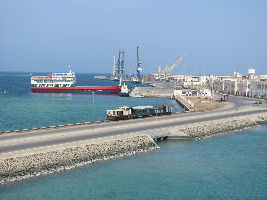
Miracle in Desert- Port Sudan
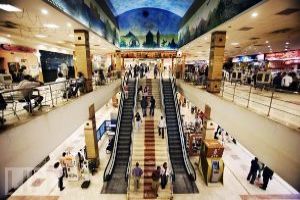
What to buy and What not to ?

Nightlife of Sudan: Thumbs up or Thumbs down?
Sudan tour packages.
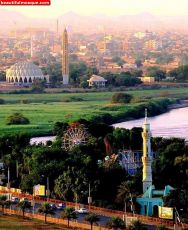
Best 6 Days 5 Nights naga musawwarat meroe Tour Package
Download travel checklist for sudan, sudan rating & reviews, tour package by.
Member Since 2022
Photos of Sudan
- Sudan Tours
- Enquiry Form
To City (Destination)
Travel Date
Travel Duration (In Days)
Travel With
Type of Trip
Total Budget (in INR)
Ticket Booked ?
Ticket Required?
Mode of Transport
Ticket Category
I will book
Date of Birth
Marital Status
Income (Per Month)
Nationality
Preferred Language
Total countries visited so far
Do you have a Visa ?
Do you have a Passport?
Preferred Time to Call
We have identified additional inquiries related to your tour. Please review them and let us know if there are any inquiries you would like us to remove.
1,00,00,000+
You are using an outdated browser. Please upgrade your browser to improve your experience.

IMAGES
VIDEO
COMMENTS
Lets explore the best places to visit in Sudan: 1. Meroe. Source: evenfh / shutterstock. Meroe, Sudan. The onetime epicentre of the ancient Napata Kingdom is a truly otherworldly place to explore. Set out between the ochre-hued rises of the Sudanese desert, just north of the capital, its comprised of over 200 individual pyramid structures ...
78 places sorted by traveller favourites. 1. Meroe Pyramids. 105. Ancient Ruins. By 962sudhirk. During sunset and sunrise its mesmerizing. 2. Sudan National Museum.
Things to Do in Sudan. 1. Meroe Pyramids. During sunset and sunrise its mesmerizing. 2. Sudan National Museum. If you are coming to Sudan to explore Nubian history, you should visit this place first.
Dinder National Park. On the way south to the Ethiopian border, Dinder National Park offers a completely different environment from the sandy desert of the north. Best visited during the dry season (November to May), it draws visitors looking to spot wildlife and relax in the peaceful environment.
Egypt. Discover the best attractions in Sudan including Meroe Pyramids, Soleb, and National Museum.
Sudan. Wake at the break of day under the golden pyramids of godlike kings of old, traverse a searing desert to the place where two Niles become one, and watch a million ruby-red fish swarm through gardens of coral. For the few travelers who venture here, the sights found amongst Sudan's sweeping hills of sand come as a fantastic surprise.
Best time to travel to Sudan - Sudan is one of the hottest countries in the world. If you really want to enjoy your trip to Sudan, you must go in winter, from November to February. The rest of the year, the heat is just unbearable, especially in summer. I went there in December and, at noon, the temperature reached over 34ºC.
Sanganeb National Park. 19 Best Places To Visit In Sudan 24. The Sanganeb National Park was the first marine national park in the world and is one of the most beautiful places to dive in the Red Sea. Visitors can experience the rich marine life, and see hundreds of species of fish, turtles, mollusks, and sharks.
Travel insurance for Sudan. 7 FAMOUS PLACES TO VISIT IN SUDAN. 1) Khartoum: 2) Atbara for the Meroe Pyramids. 3) Port Sudan: 4) Karima and the Pyramids of Sudan: 5) Old Dongola: 6) Wadi Halfa: 7) Kassala.
2. Nile Street. The Nile street in Khartoum, is a very pleasant place to visit , walk and sit. there is sitting places, gardens... 3. University of Khartoum. Khartoum University is 100 years old. Very old building and it can be viewed through a car tour and not much to see...
Sudan offers an unexpected array of things to do, places to see, and experiences to be had. It is a country that boasts tremendous attractions, heaps of natural beauty, and a population that is among the friendliest in the world. ... Information on the tourist attractions in Sudan is scant, at best. But with a little effort, the vast swath of ...
During our visit to Sudan in March 2019 the official rate was 47 SDP to 1 USD and the black market was 60-65 SDP to 1 USD, so quite a big difference. Sudan Essentials A Headscarf - As mentioned below, as a tourist you aren't required to wear a headscarf but it's really hot in Sudan so it's handy to keep the sun off and it covers up bad ...
Discover 9 hidden attractions, cool sights, and unusual things to do in Sudan from Suakin Island Ruins to Goz Abu Goma Bridge. Trips Experiences Courses Places Foods Stories Newsletters Open ...
Sudan Travel Guide: A Melting Pot of Cultures & Ancient Wonders. By Antonio Avelar January 26, 2022. ... 10 Best Places to Visit in the Lesser-Known Lazio Region of Italy November 19, 2023. Provence Travel Guide by Sonia: Discover this Dreamy Part of France November 8, 2023.
Places to visit in Sudan. I'll be frank. Sudan is not a place to visit right now. As I wrote this article, The Guardian reported on the "Death, disease and despair" blanketing besieged cities in Darfur. The International Rescue Committee has recorded 14,700 conflict-related deaths since fighting broke out in April 2023 and the United Nations Refugee Agency notes the displacement of 8.6 ...
5 Best Places To Visit In Sudan: Cover Image Meroë Pyramids Courtesy: te Best Places To Visit In Sudan: flickr images licensed under CC BY 2.0 Additional images: adobe , colourbox , istock , pexels , shutterstock , unsplash unless otherwise stated .
14 - The Gaddafi Eggno. The most deluxe hotel in Khartoum and famously a gift from Gaddafi to Sudan. Offers great views a restaurant and even takes visa, although at $8 bucks a coffee it is not cheap. To read about the Gaddafi Egg click here . Best places to visit in Sudan.
THE 10 BEST Sudan Sights & Historical Landmarks. 1. Meroe Pyramids. We loved the pyramids - and saw them both at sunset and sunrise. 2. Gebel Barkal. Inscriptions took place inside a cave in the mountain. Pyramids beside the mountain. Torch is required here.
15 Best Places to Visit in Sudan | Travel Videos | SKY travel SudanCountry in North AfricaThe Sudan, or North Sudan, officially the Republic of the Sudan, is...
Following are the best 10 places to visit in Sudan, which will make your trip memorable:: 1. The Nubian Pyramids. By the word pyramids, the images that come up to mind are the great massive structures of Egypt. Built 800 or so years later after Egypt with the same kind of expertise the pyramids of Meroe in the Nubian desert in Sudan are little ...
The best places to visit in Sudan. Most people have no idea what's to do or see in Sudan. Since the country is still undiscovered for tourists, probably not many people would know what to expect on a Sudan backpacking trip. One could easily think that Sudan consists only of boring sandy desert. But this is not true!
Guide to places to visit in Sudan. Things to know about 14 Sudan sightseeing attractions, tourist places addresses, travelers reviews & activities.
Sudan Travel Guide & Tourism (2024) : Get complete information on best tourist places in Sudan. Explore all exciting tourist destinations, places to see, things to do in Sudan. Plan your Sudan trip with Hellotravel. Book Now.